Artists
Artists 31 to 60 of 91:
Flandes, Juan de
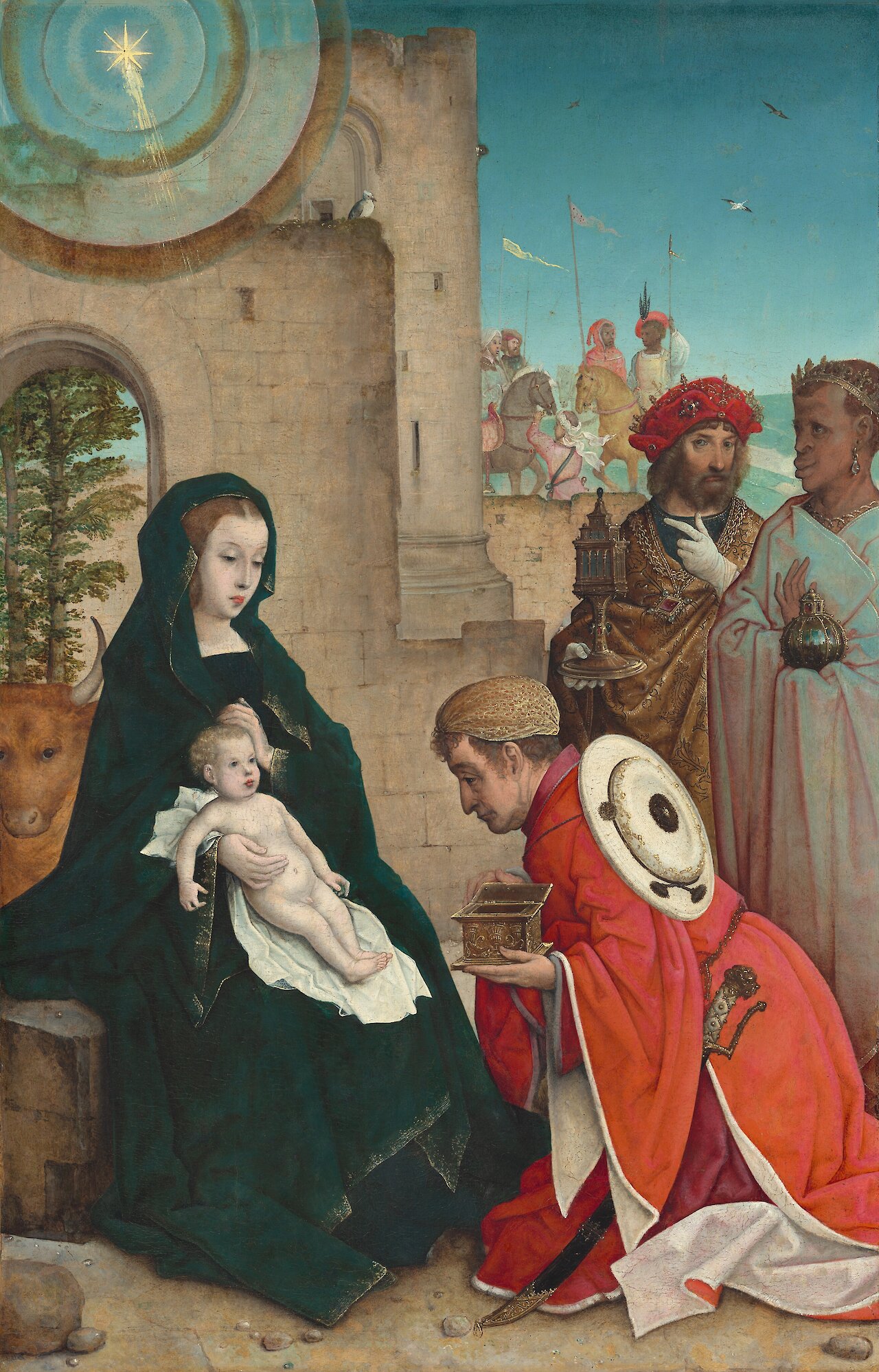
The Adoration of the Magi
by Juan de Flandes, circa 1508–1519
- Medium
- Oil on panel
- Dimensions
- 126 x 82 cm (49 5/8 x 32 5/16 in)
- Credits
- Samuel H. Kress Collection.
- Location
- National Gallery of Art
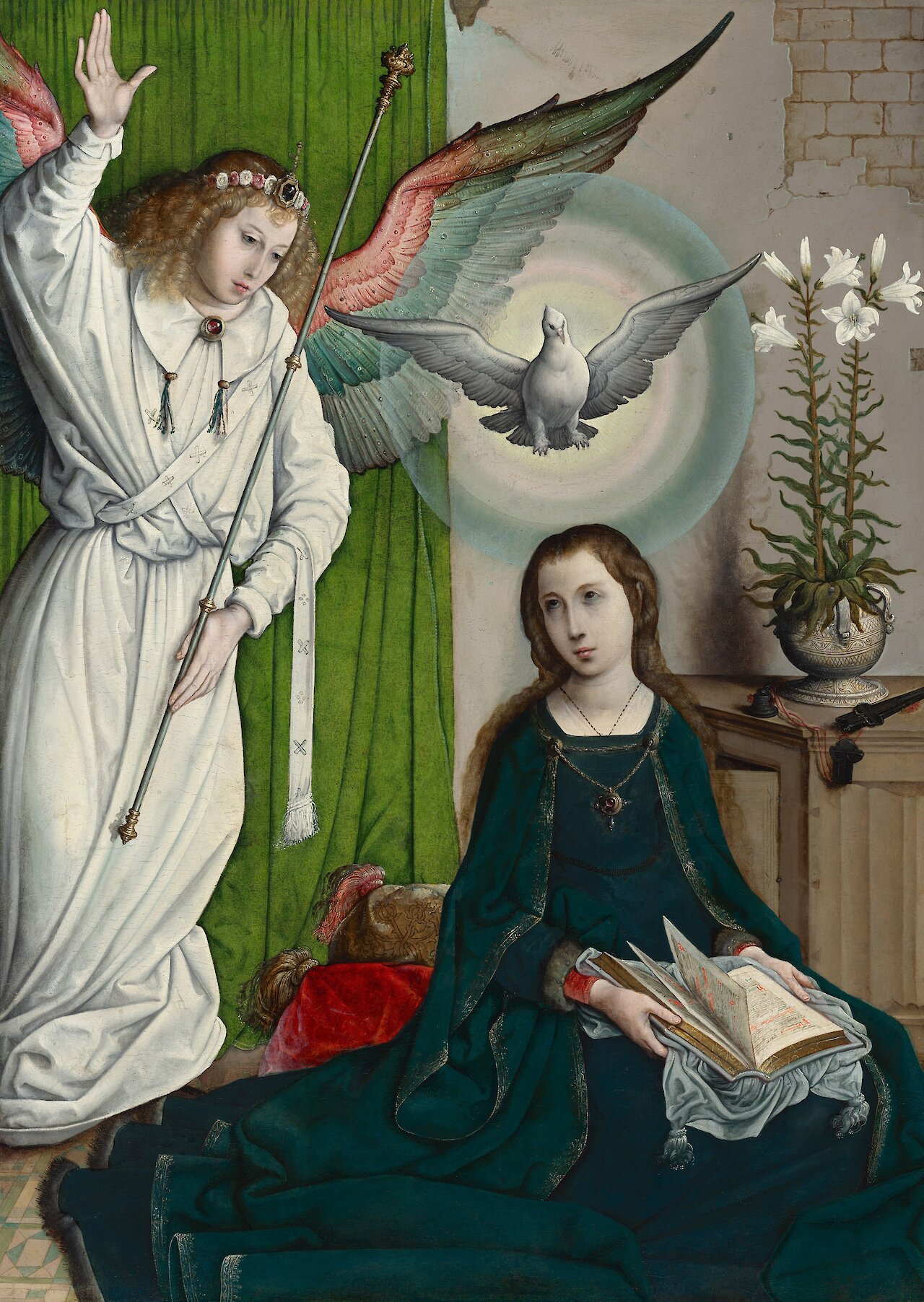
The Annunciation
by Juan de Flandes, circa 1508–1519
- Medium
- Oil on panel
- Dimensions
- 110.2 x 81 cm (43 3/8 x 31 7/8 in)
- Credits
- Samuel H. Kress Collection.
- Location
- National Gallery of Art
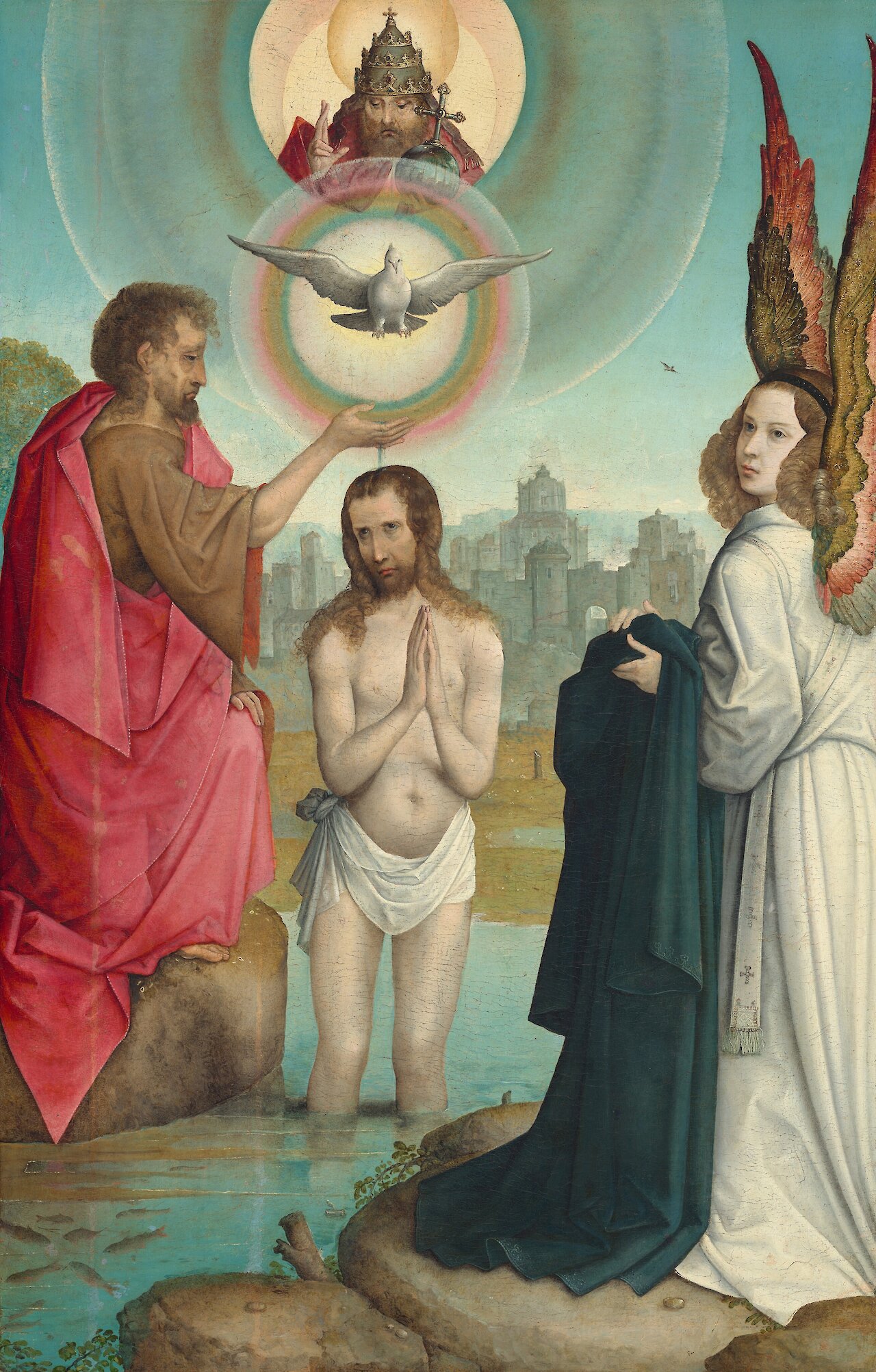
The Baptism of Christ
by Juan de Flandes, circa 1508–1519
- Medium
- Oil on panel
- Dimensions
- 125.3 x 81.1 cm (49 5/16 x 31 15/16 in)
- Credits
- Samuel H. Kress Collection.
- Location
- National Gallery of Art
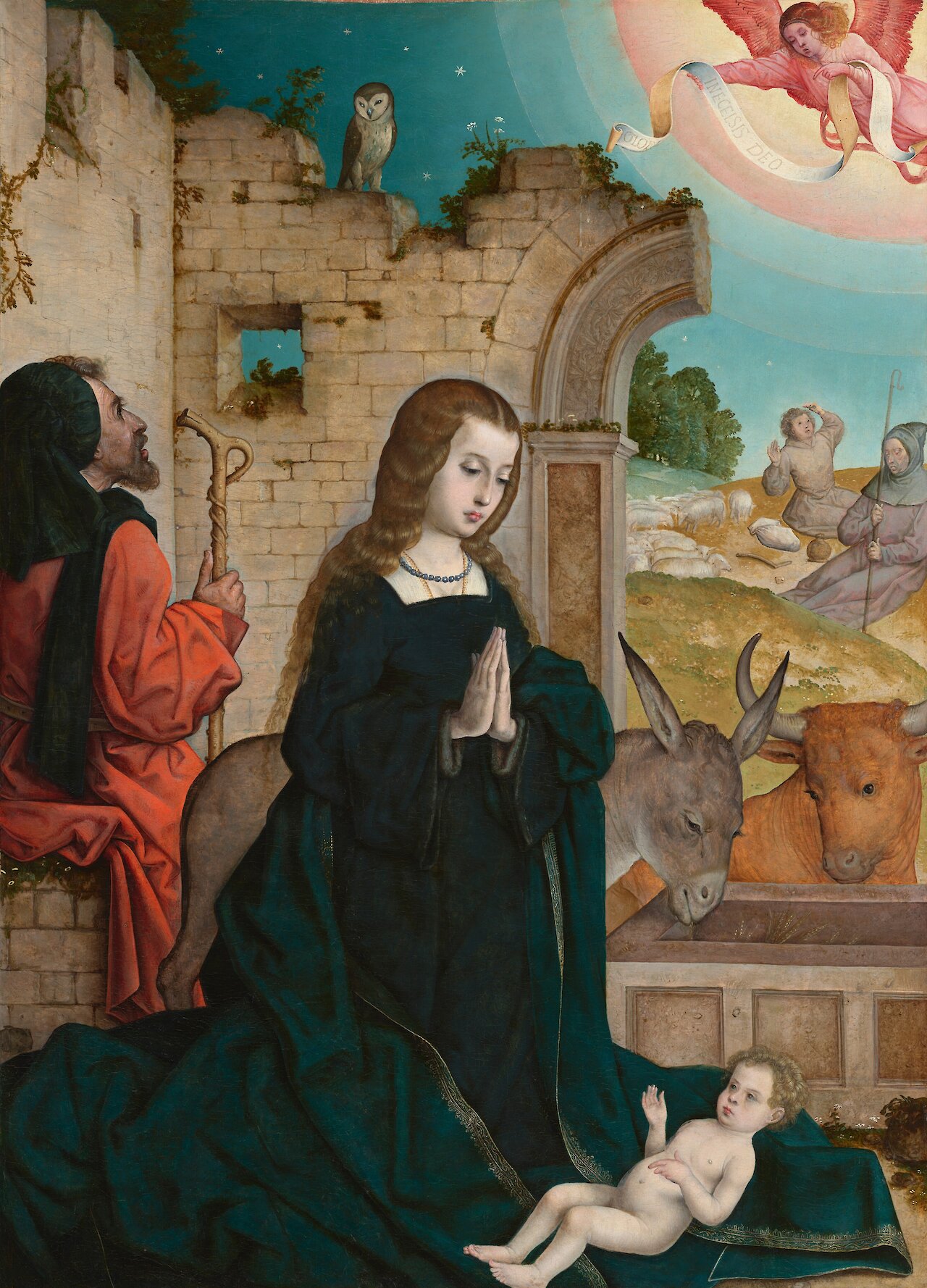
The Nativity
by Juan de Flandes, circa 1508–1519
- Medium
- Oil on panel
- Dimensions
- 111.8 x 80.6 cm (44 x 31 3/4 in)
- Credits
- Samuel H. Kress Collection.
- Location
- National Gallery of Art
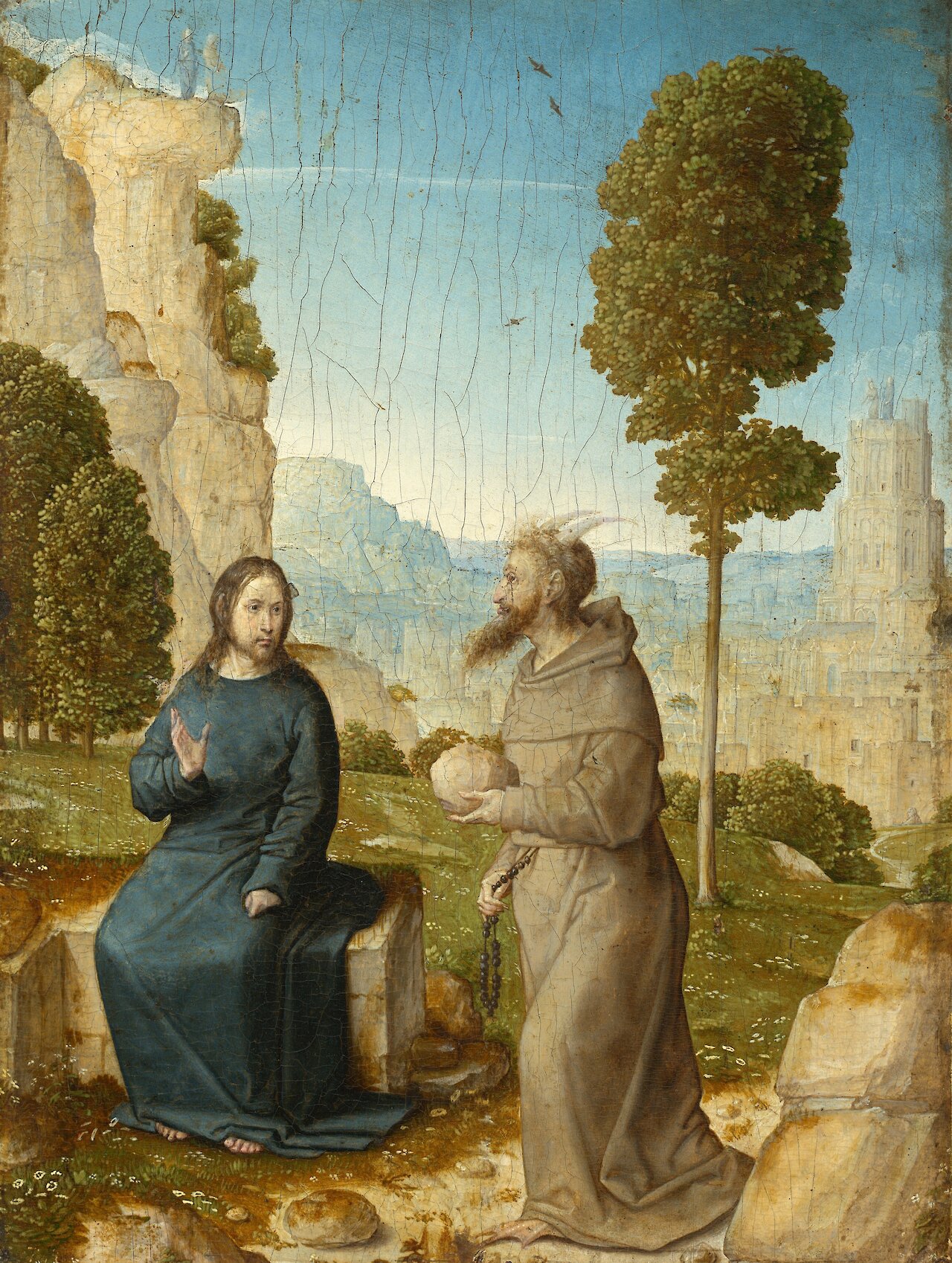
The Temptation of Christ
by Juan de Flandes, circa 1500–1504
- Medium
- Oil on panel
- Dimensions
- 21.3 x 16 cm (8 3/8 x 6 5/16 in)
- Credits
- Ailsa Mellon Bruce Fund.
- Location
- National Gallery of Art
Fortuny, Mariano
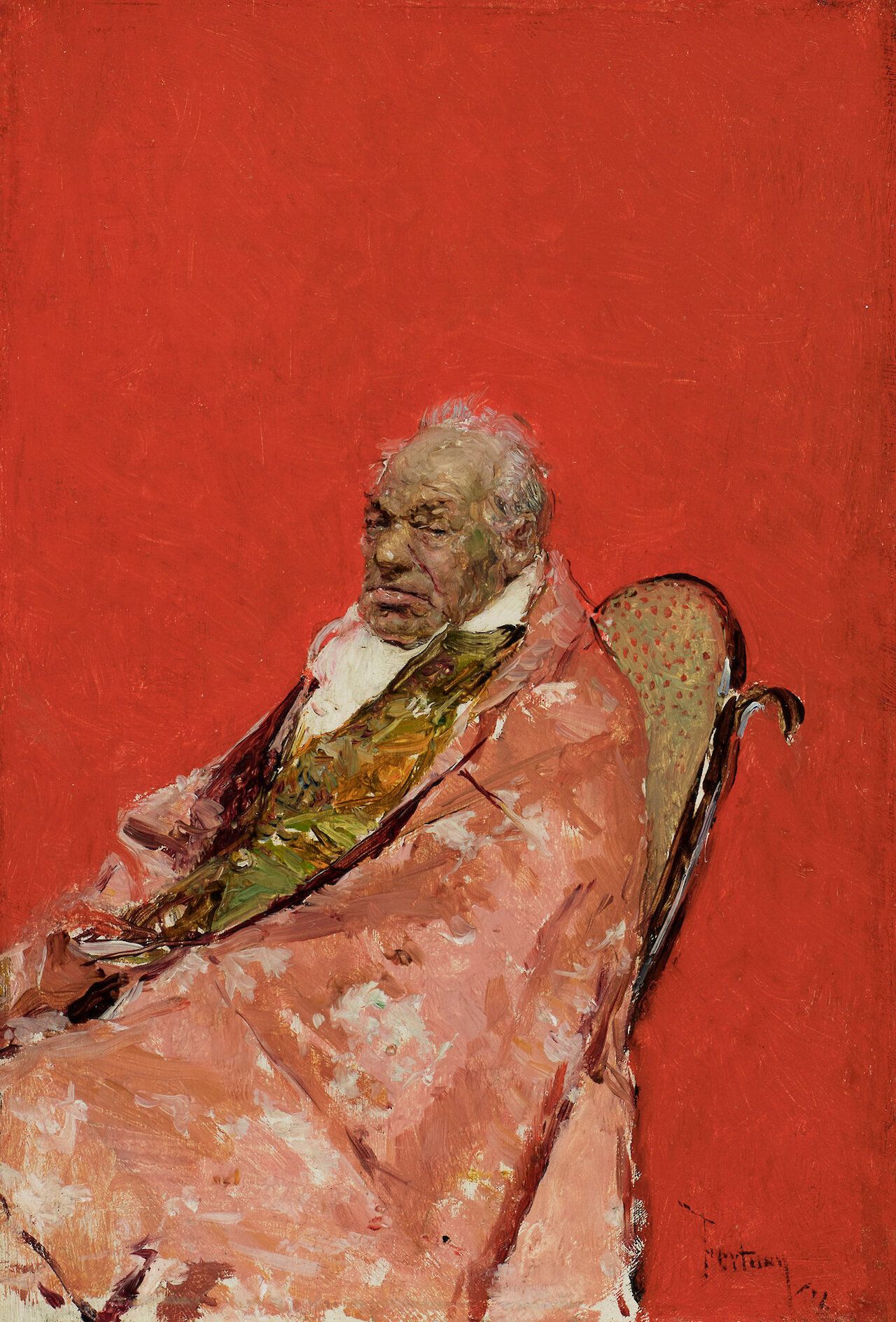
An Ecclesiastic
by Mariano Fortuny, circa 1874
- Medium
- Oil on panel
- Dimensions
- 7 1/2 x 5 1/8 in (19 x 13 cm); Framed: 15 7/16 × 13 1/8 × 3 15/16 in (39.2 × 33.4 × 10 cm)
- Credits
- Acquired by William T. Walters, 1878-1884
- Location
- Walters Art Museum
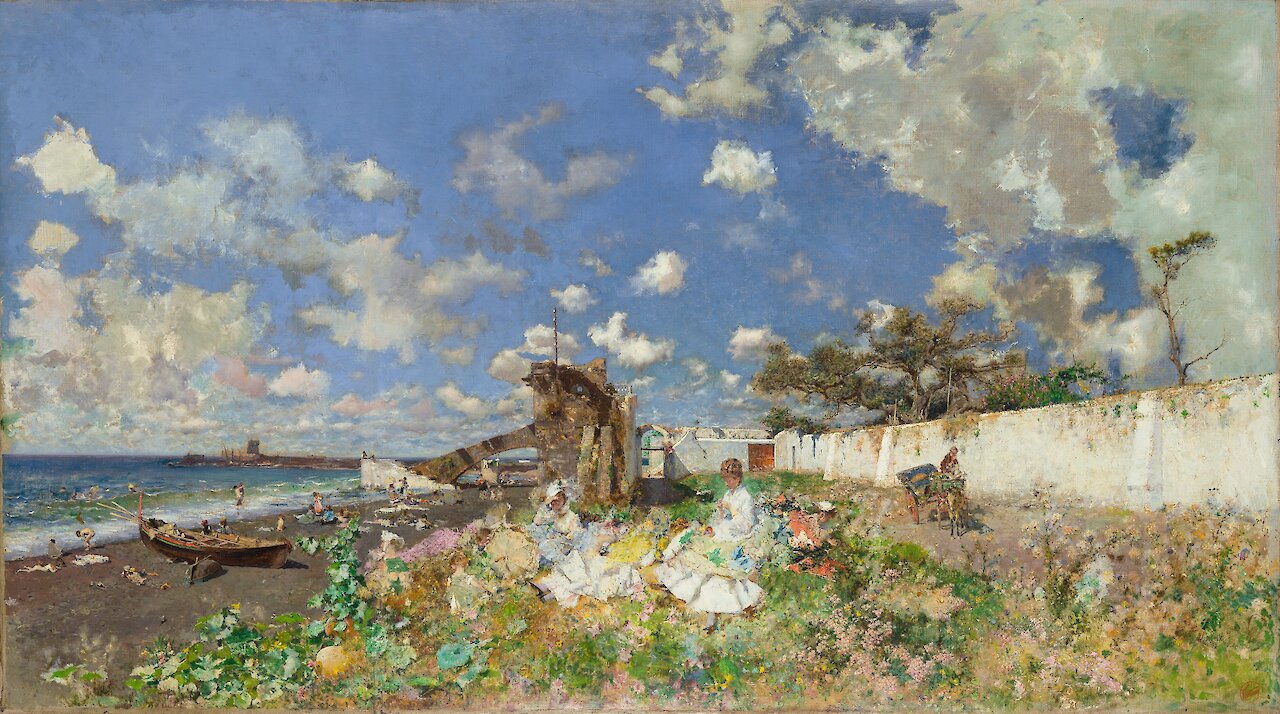
Beach at Portici
by Mariano Fortuny, 1874
- Medium
- Oil on canvas
- Dimensions
- 27 x 51 1/4 in (68.6 x 130.2 cm)
- Credits
- Meadows Museum, SMU, Dallas. MM.2017.03. Museum purchase with private donations. Photography by Robert LaPrelle.
- Location
- Meadows Museum
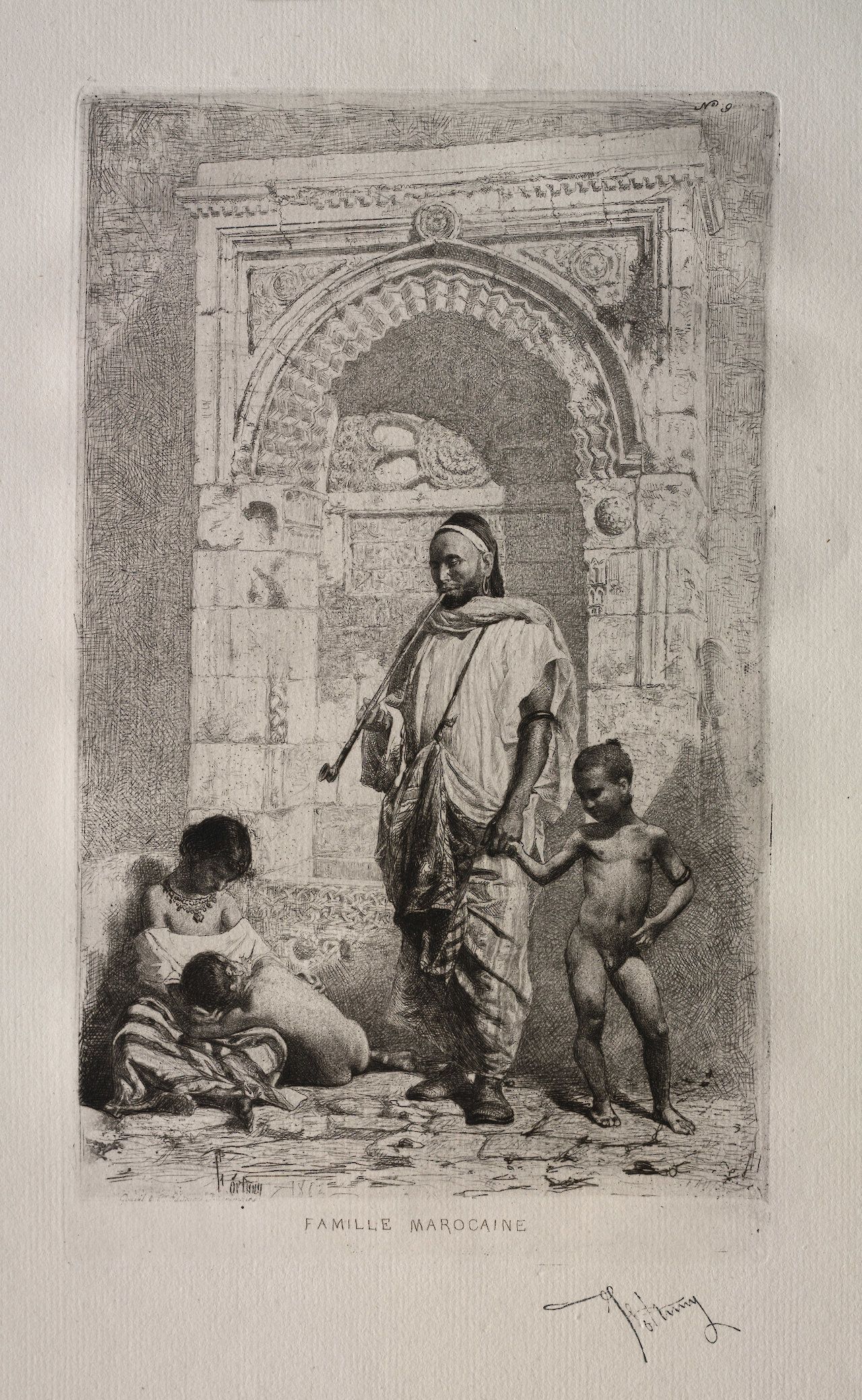
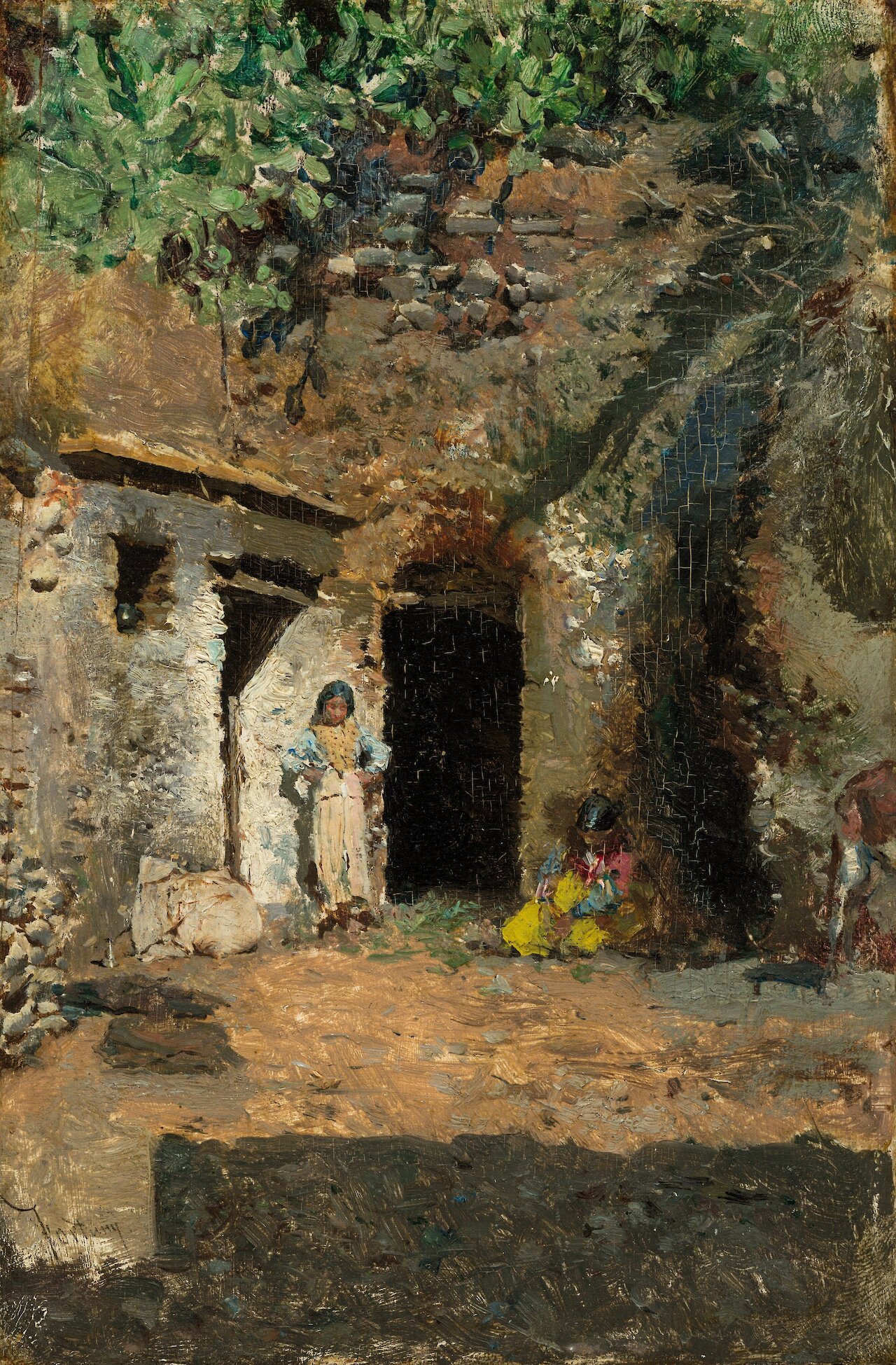
Roma Caves
by Mariano Fortuny, 1871
- Medium
- Oil on wood
- Dimensions
- 19.05 × 12.7 cm (7 1/2 × 5 in)
- Credits
- Corcoran Collection (William A. Clark Collection).
- Location
- National Gallery of Art
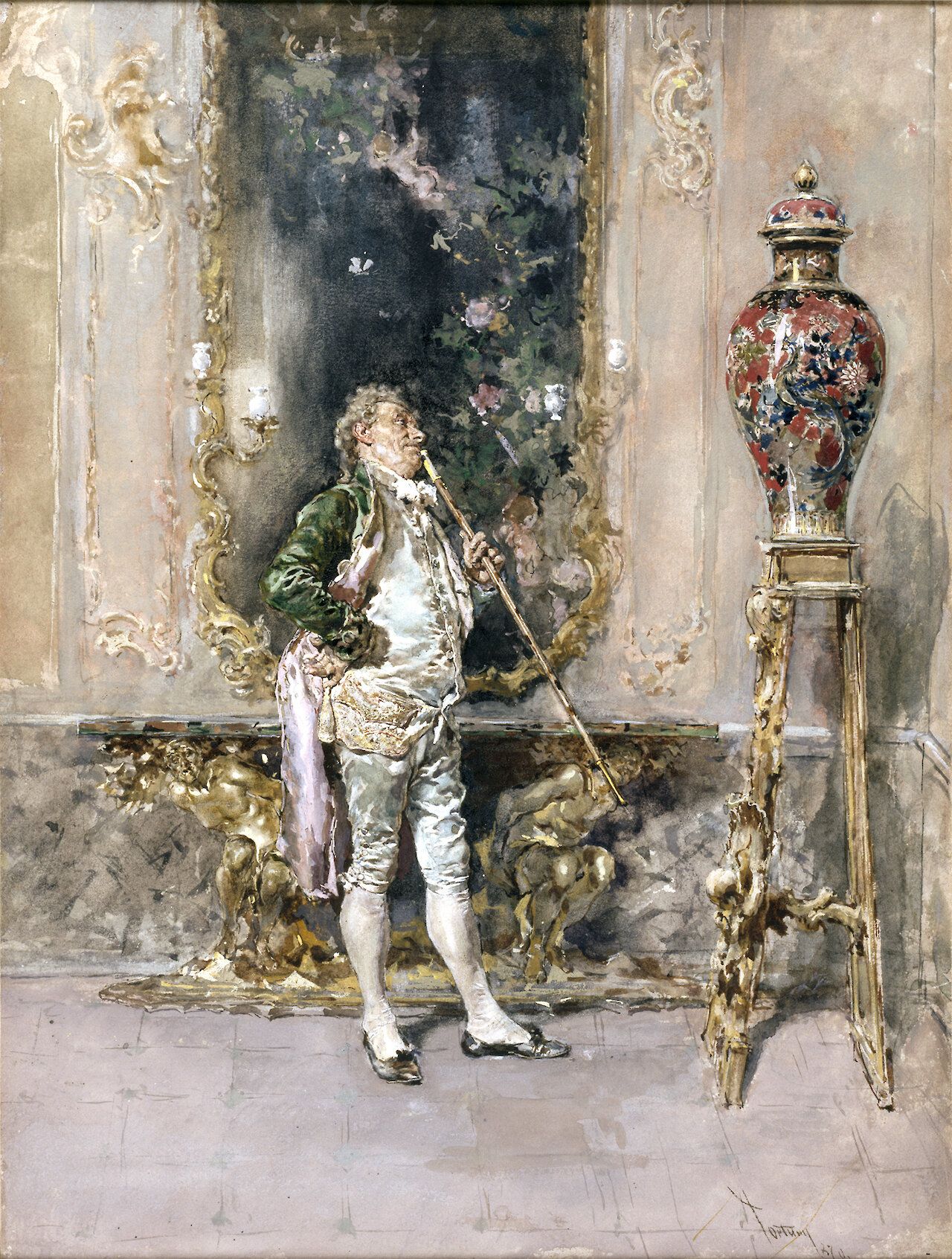
The Rare Vase
by Mariano Fortuny, 1870
- Medium
- Watercolor and opaque watercolor with selectively applied glaze over traces of charcoal (?) on paper
- Dimensions
- 12 15/16 × 9 11/16 in (32.9 × 24.6 cm); Framed: 23 1/4 × 19 3/4 × 3 1/4 in (59.06 × 50.17 × 8.26 cm)
- Location
- Walters Art Museum
Gallego, Fernando
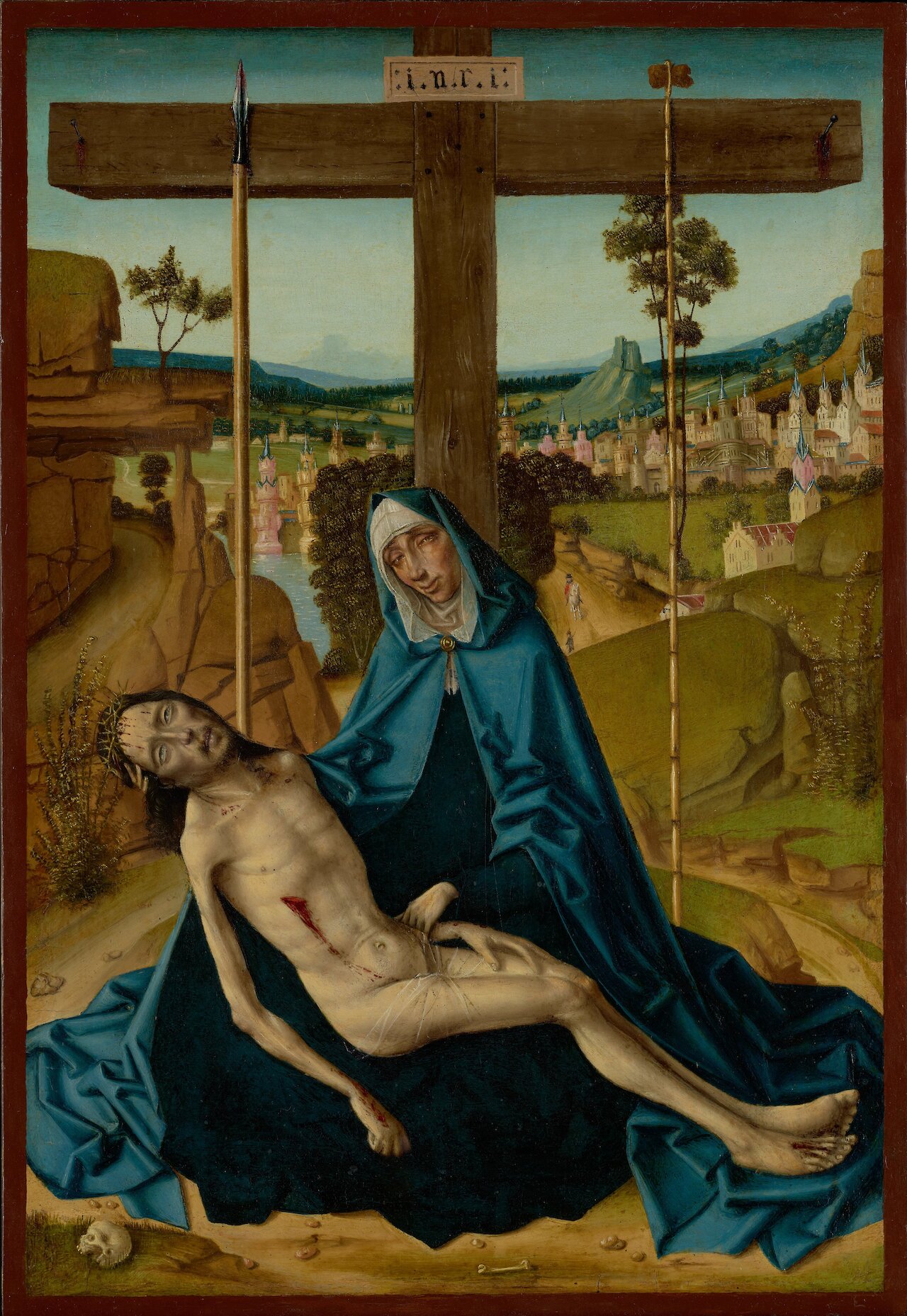
Pietà
by Fernando Gallego, circa 1490–1500
- Medium
- Oil on panel
- Dimensions
- Unframed: 49.8 × 34.3 cm (19 5/8 × 13 1/2 in); framed: 55.9 × 40.6 × 5.1 cm (22 × 16 × 2 in)
- Notes
By the circle of Fernando Gallego.
In this depiction of the lamentation of Christ, Fernando Gallego looked to Northern European paintings for inspiration but included distinctly Spanish elements such as a subdued palette and unidealized figures. Unlike Netherlandish artists who were interested in depicting the natural world in minute detail, Gallego concentrated on the pietà's psychological and emotional impact, eliminating extraneous or distracting elements.
The Virgin Mary sits in front of the cross, gazing at her dead son in her lap. On the ground around them are several pebbles, a bone, and a skull. A lance and a rod with attached sponge, two instruments from the Passion, lean perfectly vertically against the cross, which is inscribed with the initials i.n.r.i. Behind the cross a rocky landscape overlooks a Gothic walled town, settled between a body of water and verdant countryside that stretches into the far distance.
Gallego focused on the moment after the Crucifixion when overwhelming anguish gave way to resigned misery, the sentiment evident in the grief-stricken face of the Virgin, flushed and swollen from weeping. Christ's broken and emaciated body, his eyes unseeing, stretches awkwardly across her lap. Their exaggerated and unidealized features intensify the pathos central to the theme of the pietà.
- Location
- J. Paul Getty Museum
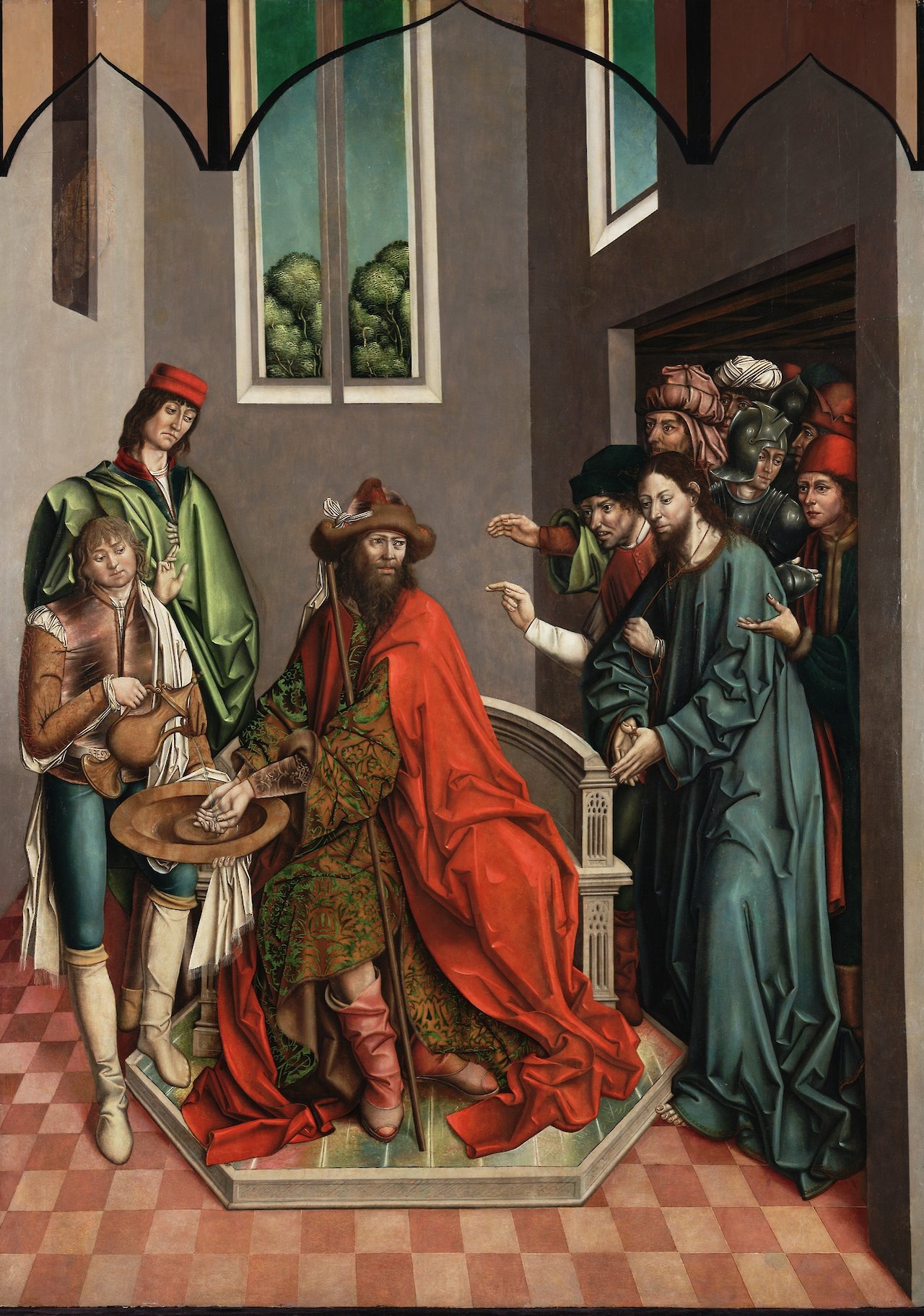
Pilate Washing His Hands
by Fernando Gallego, circa 1480–1488
- Medium
- Oil on panel
- Dimensions
- 60.7 x 43.5 in
- Credits
- University of Arizona Museum of Art, Tucson, Arizona, Gift of Samuel H. Kress Foundation, 1961.013.046
- Location
- University of Arizona Museum of Art
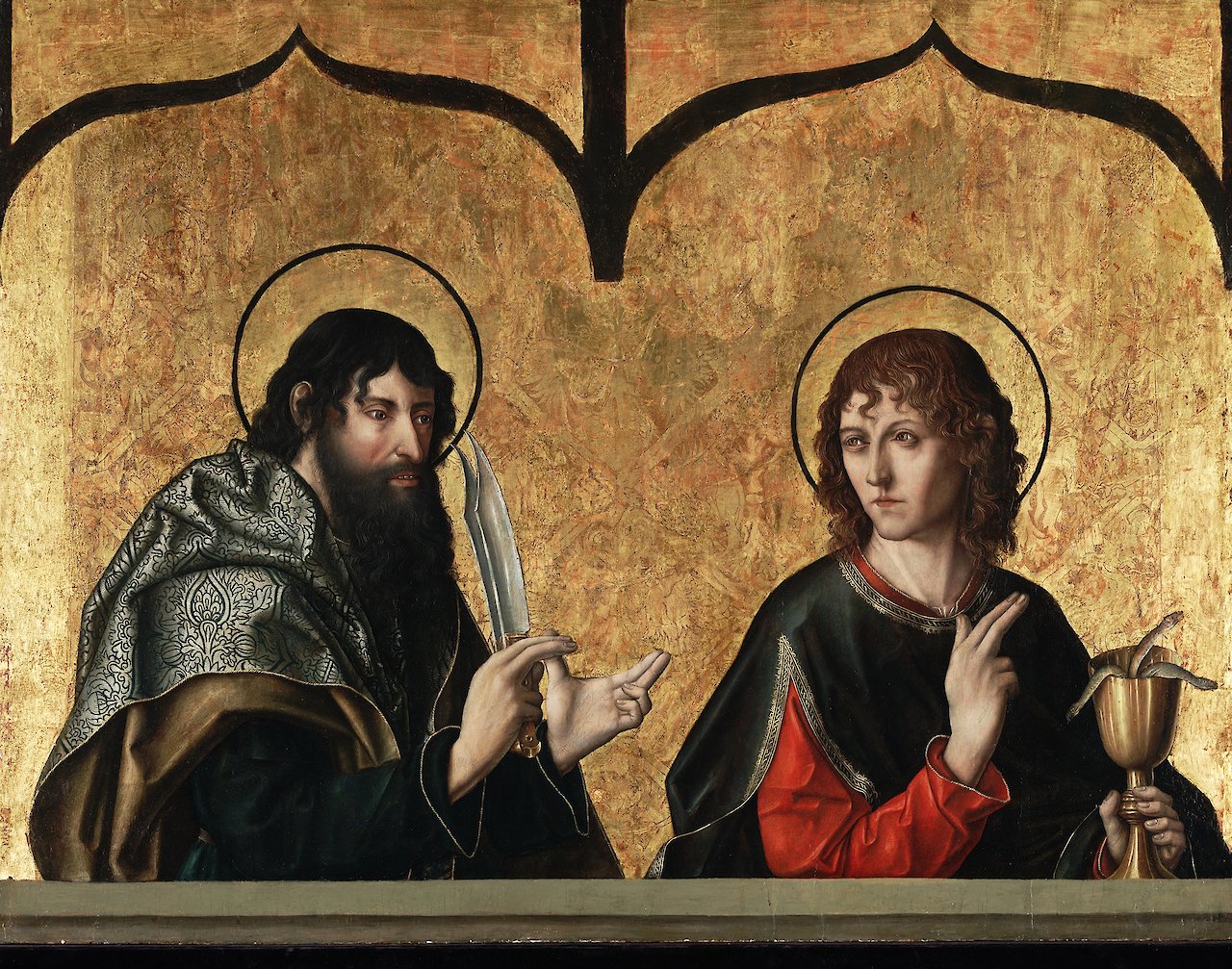
Saints Bartholome and John the Evangelist
by Fernando Gallego, circa 1480–1488
- Medium
- Oil on panel
- Dimensions
- 33.2 x 43.5 in
- Credits
- University of Arizona Museum of Art, Tucson, Arizona, Gift of Samuel H. Kress Foundation, 1961.013.054
- Location
- University of Arizona Museum of Art
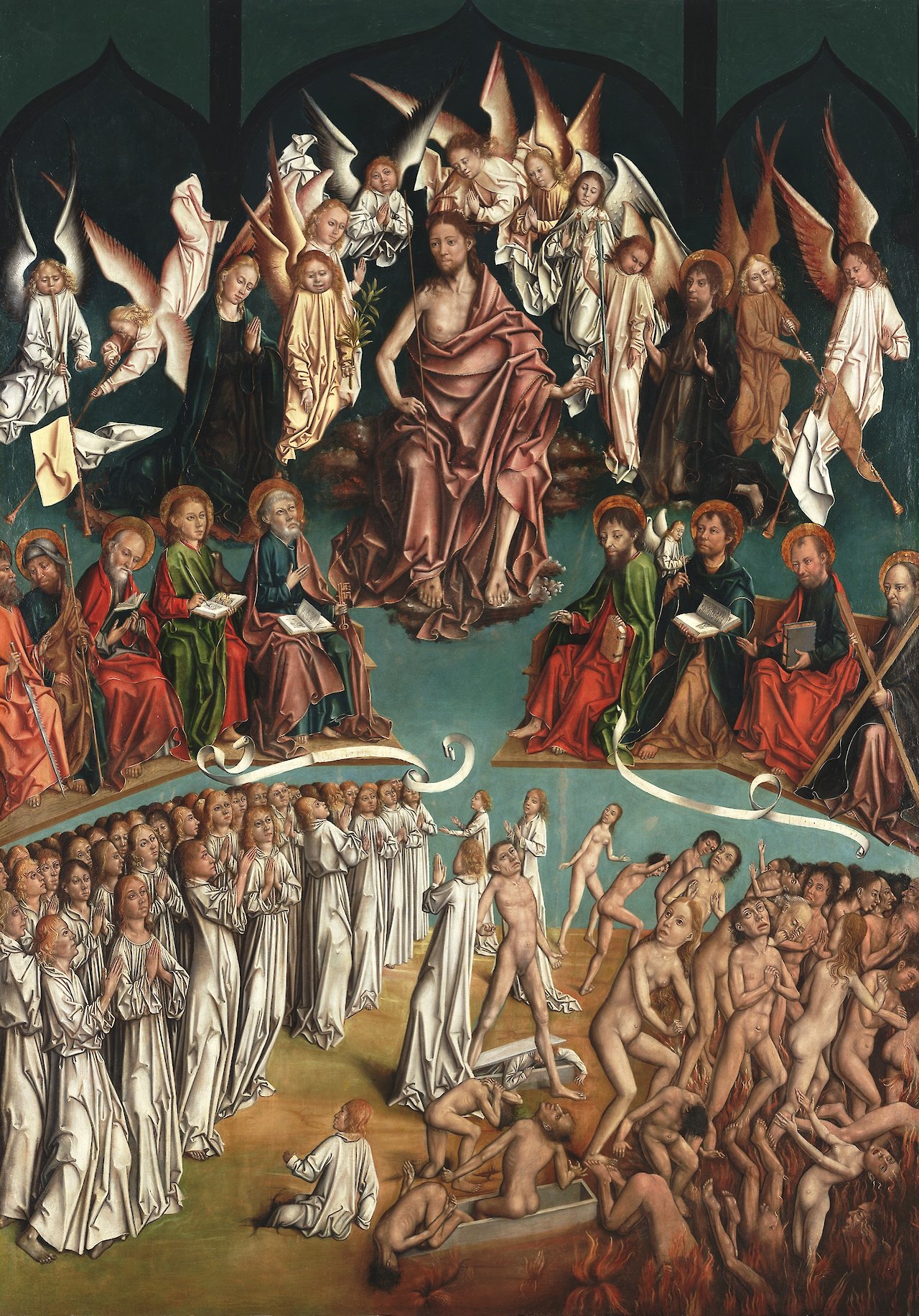
The Last Judgment
by Fernando Gallego, circa 1480–1488
- Medium
- Oil on panel
- Dimensions
- 60.5 x 43.5 in
- Credits
- University of Arizona Museum of Art, Tucson, Arizona, Gift of Samuel H. Kress Foundation, 1961.013.052
- Location
- University of Arizona Museum of Art
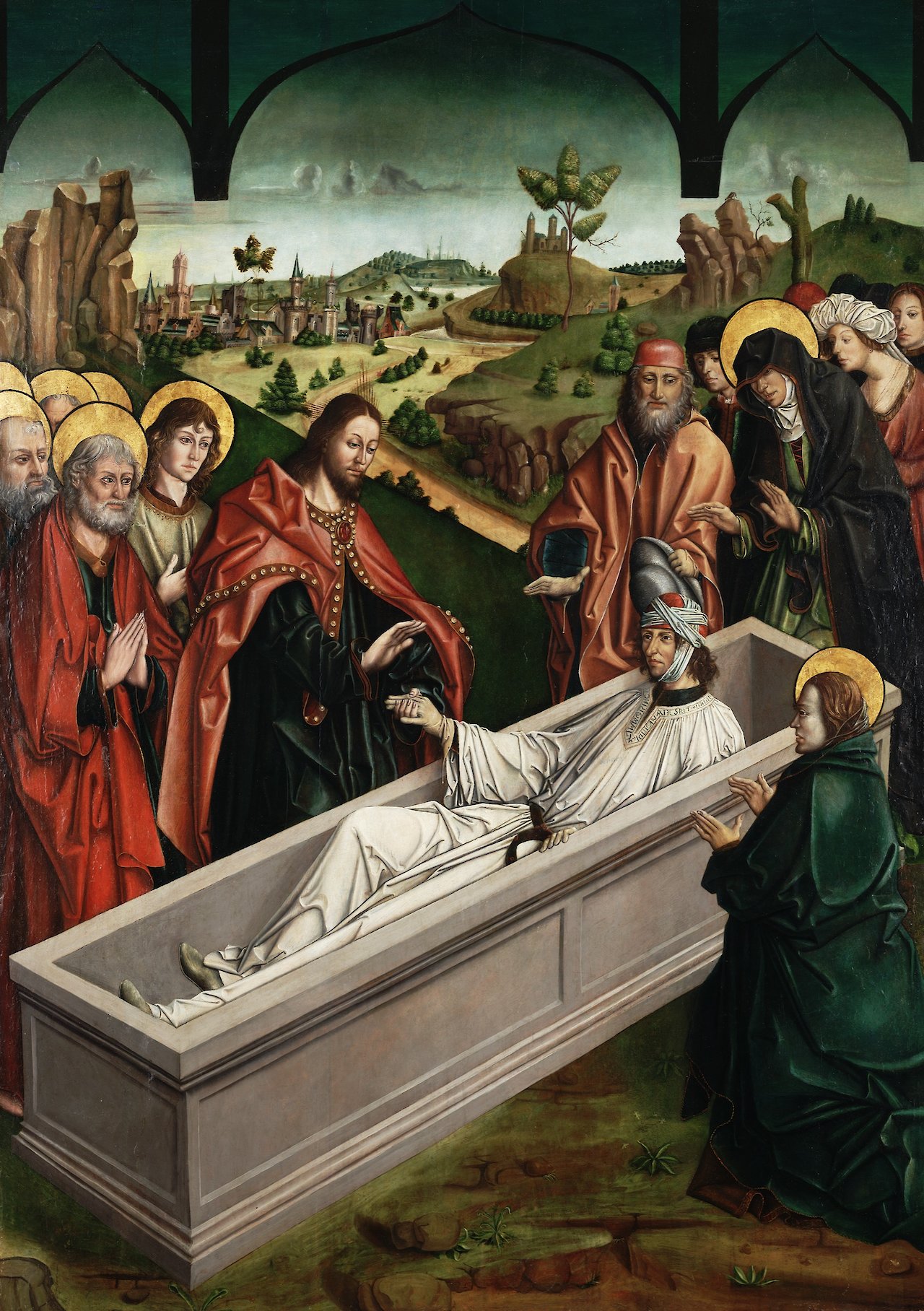
The Raising of Lazarus
by Fernando Gallego, circa 1480–1488
- Medium
- Oil on panel
- Dimensions
- 61 x 43.5 in
- Credits
- University of Arizona Museum of Art, Tucson, Arizona, Gift of Samuel H. Kress Foundation, 1961.013.039
- Location
- University of Arizona Museum of Art
Genovés, Juan
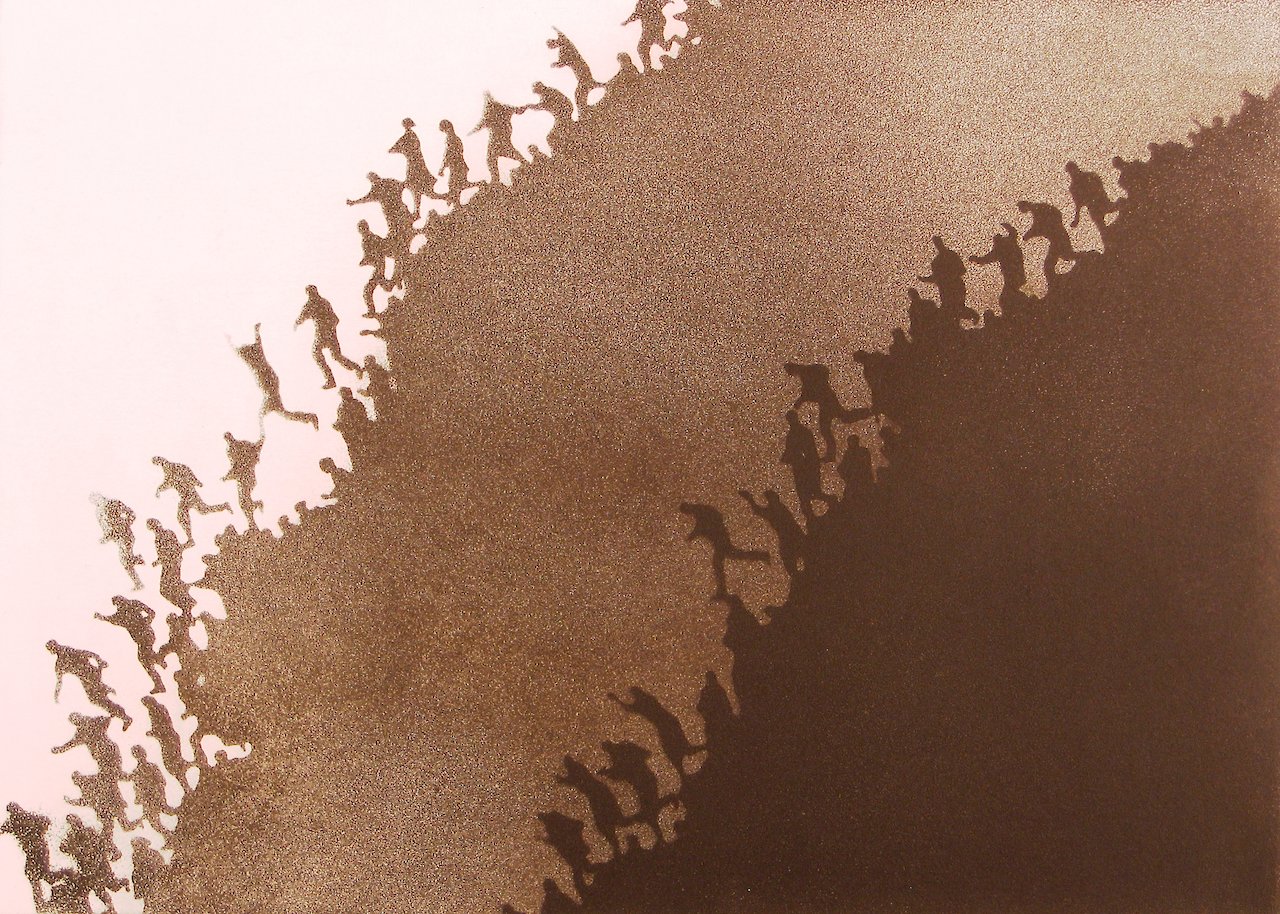
El lugar y el tiempo
by Juan Genovés, 1970
- Medium
- Etching
- Dimensions
- Image: 12 5/16 in x 17 5/16 in (31.3055 x 44.0055 cm); Object: 19 3/4 in x 25 13/16 in (50.165 x 65.5955 cm)
- Location
- NSU Art Museum Fort Lauderdale
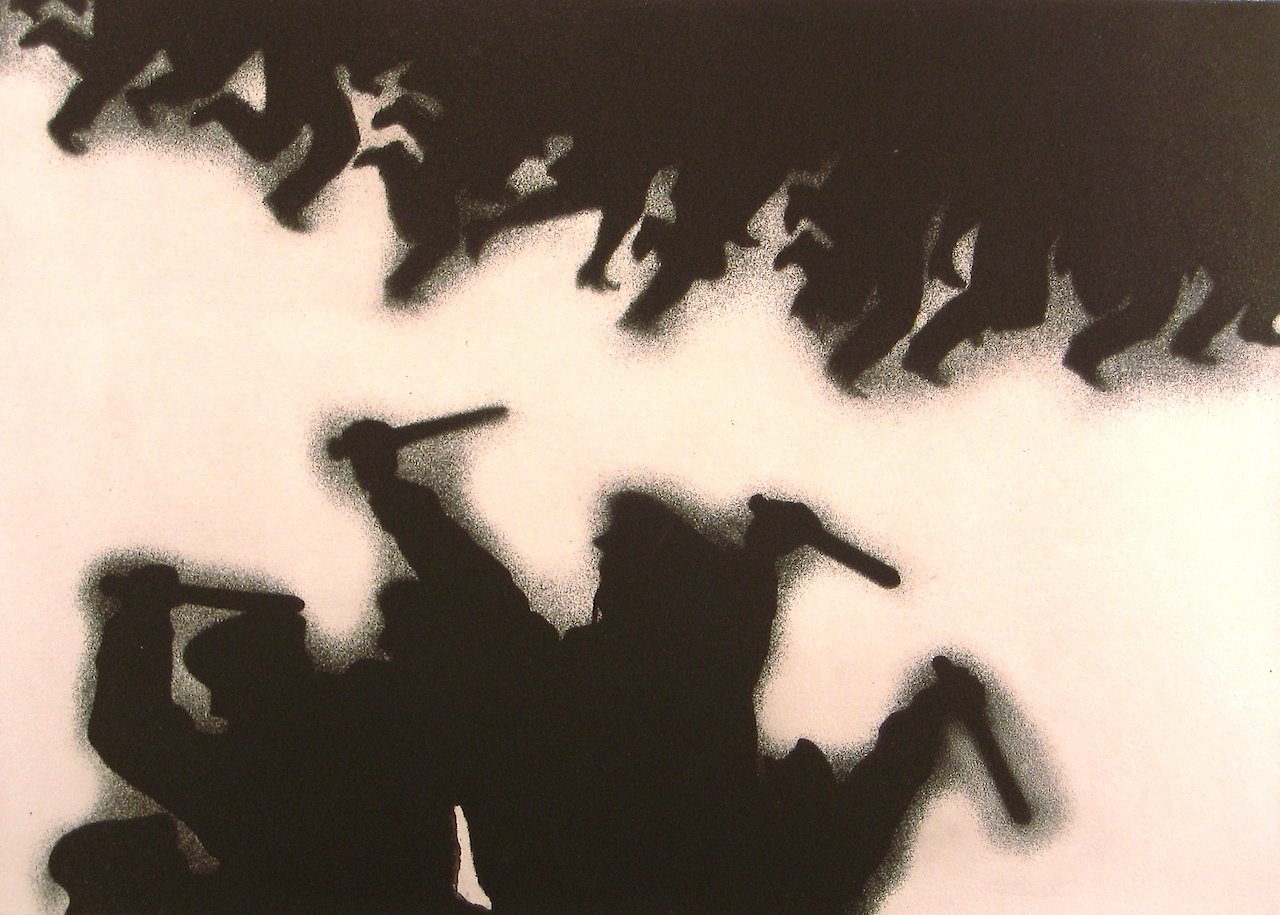
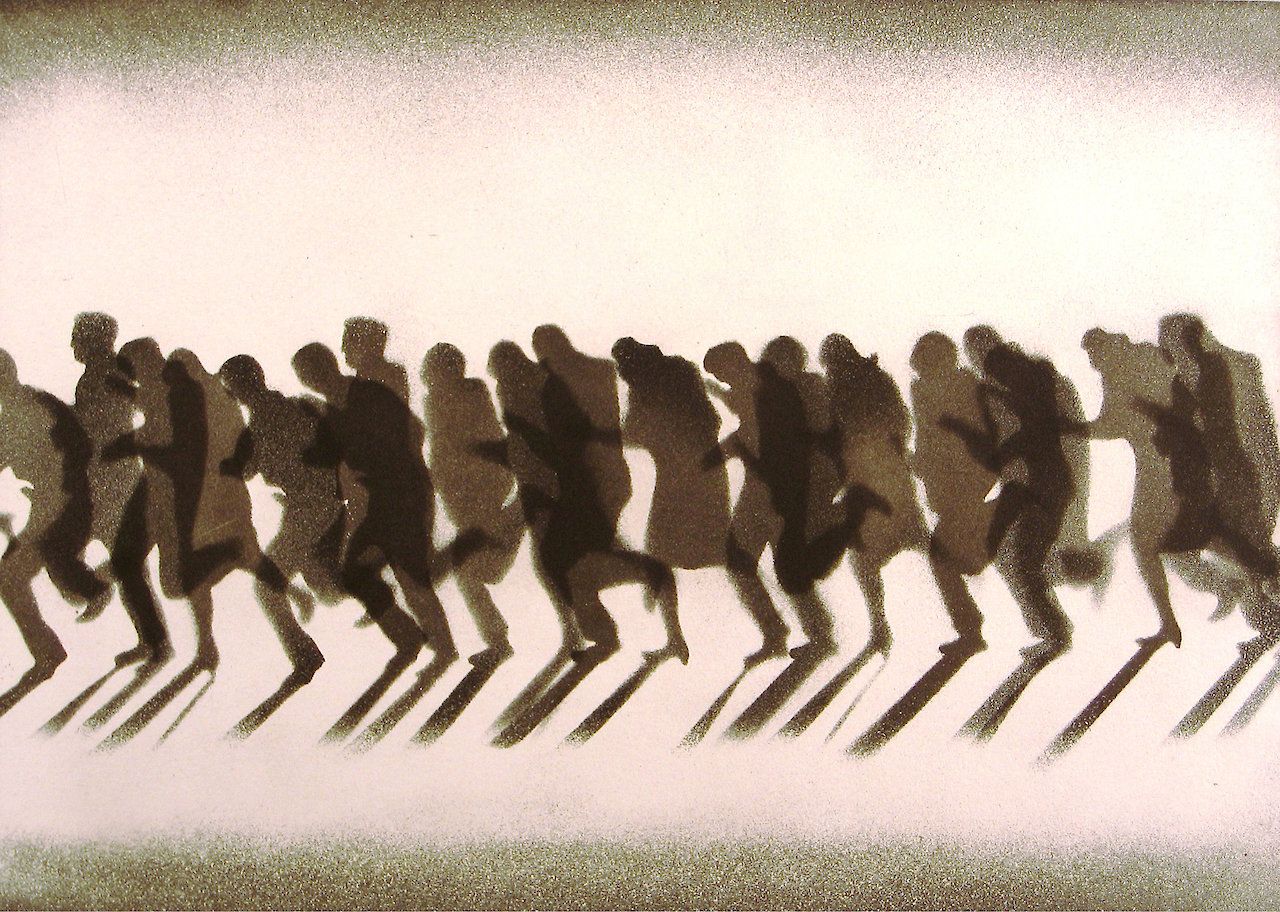
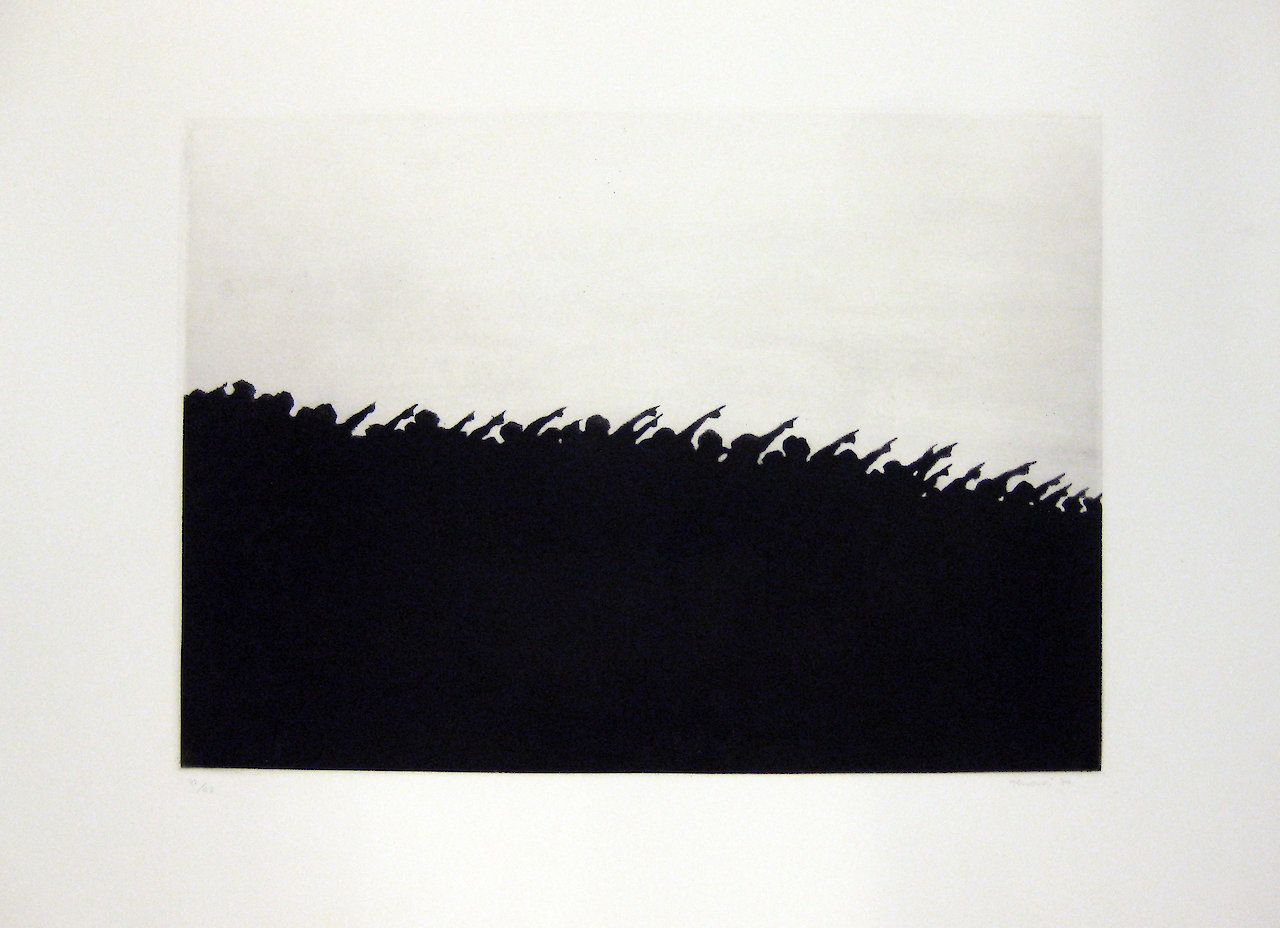
El Lugar y El Tiempo (The Place and the Time)
by Juan Genovés, circa 1970–1971
- Medium
- Etching
- Location
- John and Mable Ringling Museum of Art
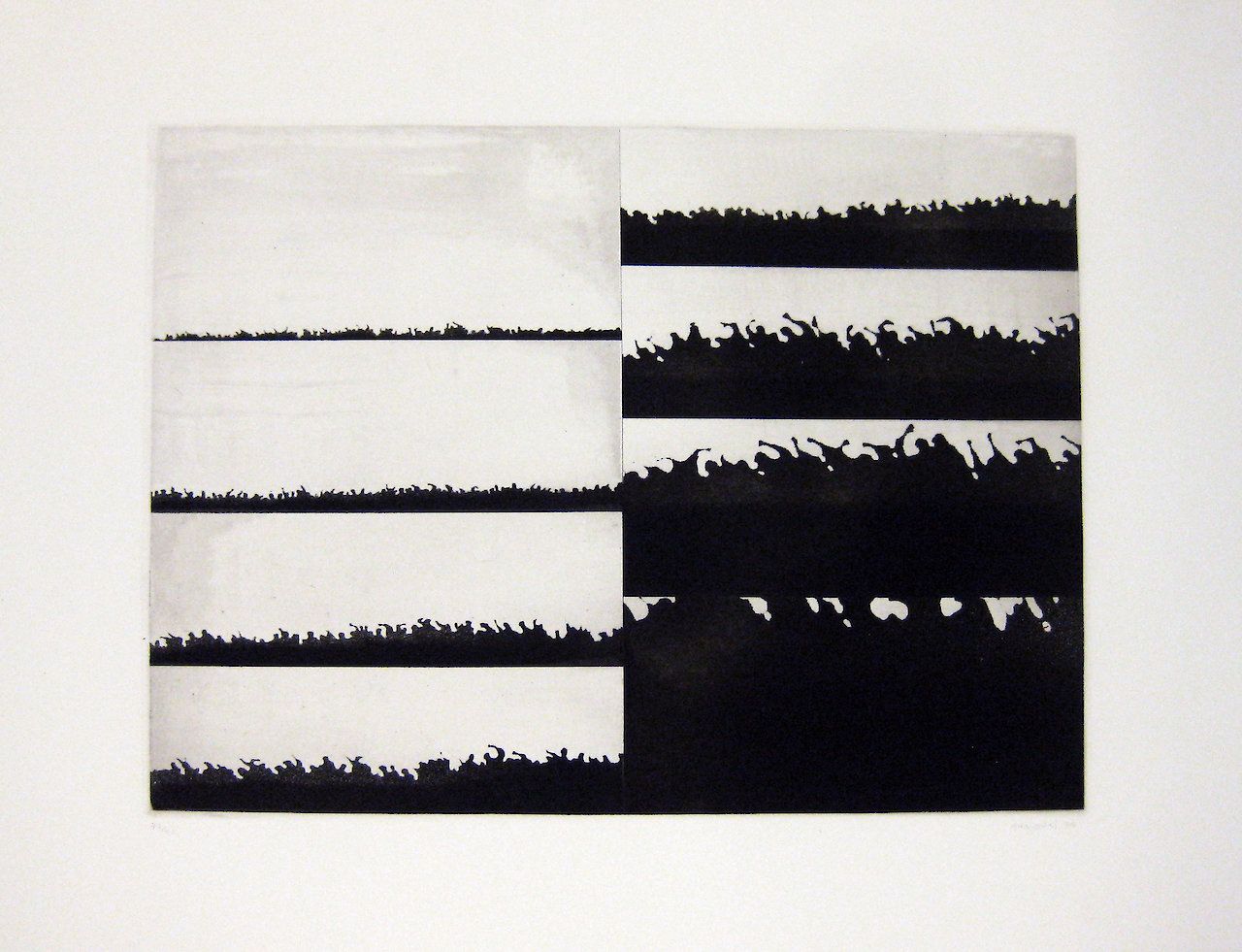
El Lugar y El Tiempo (The Place and the Time)
by Juan Genovés, circa 1970–1971
- Medium
- Etching
- Location
- John and Mable Ringling Museum of Art
Goya y Lucientes, Francisco José de
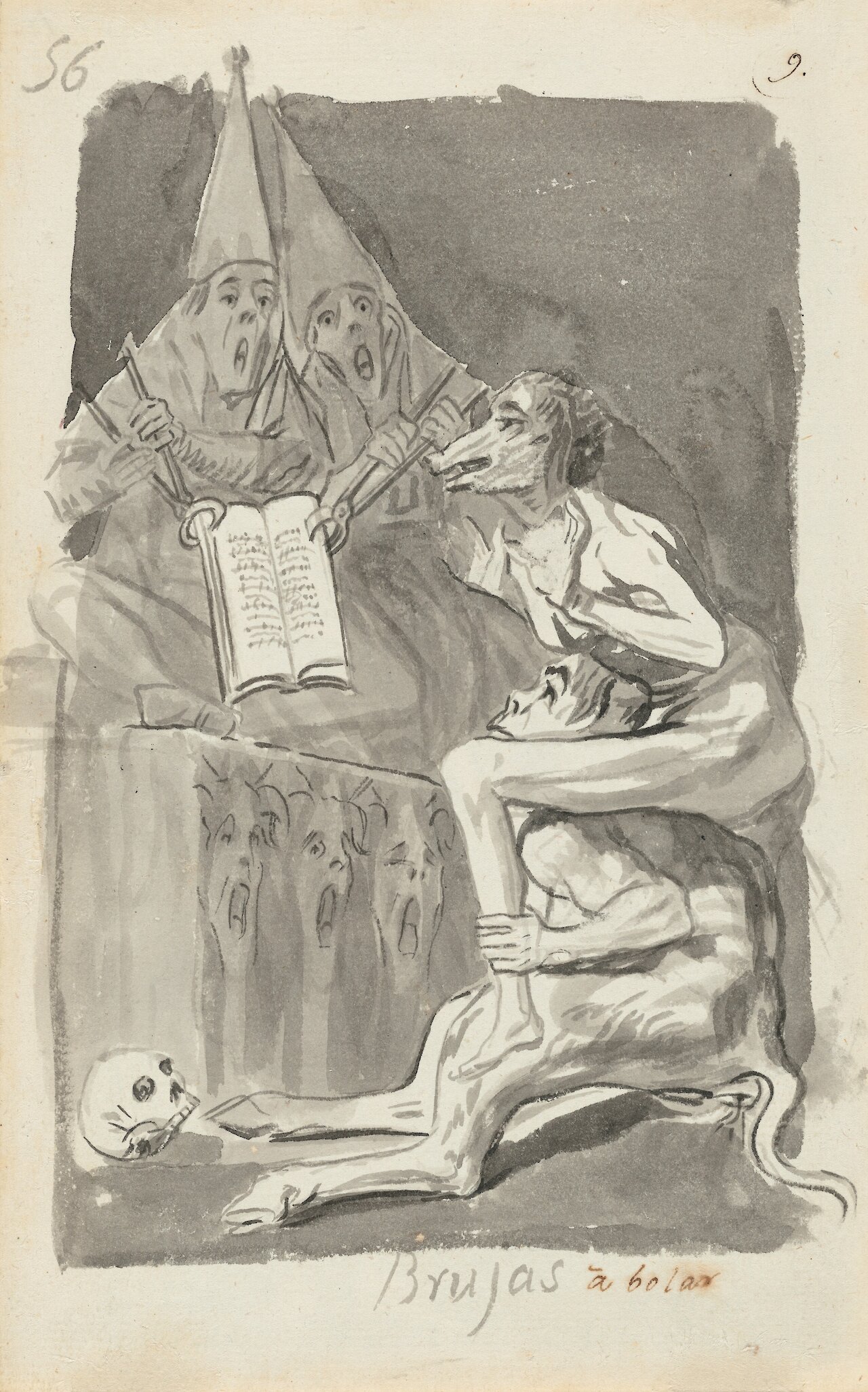
Brujas à volar (Witches Preparing to Fly)
by Francisco José de Goya y Lucientes, circa 1796–1797
- Medium
- Brush and black ink and gray wash on laid paper
- Dimensions
- 23.7 × 15 cm (9 5/16 × 5 7/8 in)
- Credits
- Woodner Collection.
- Location
- National Gallery of Art
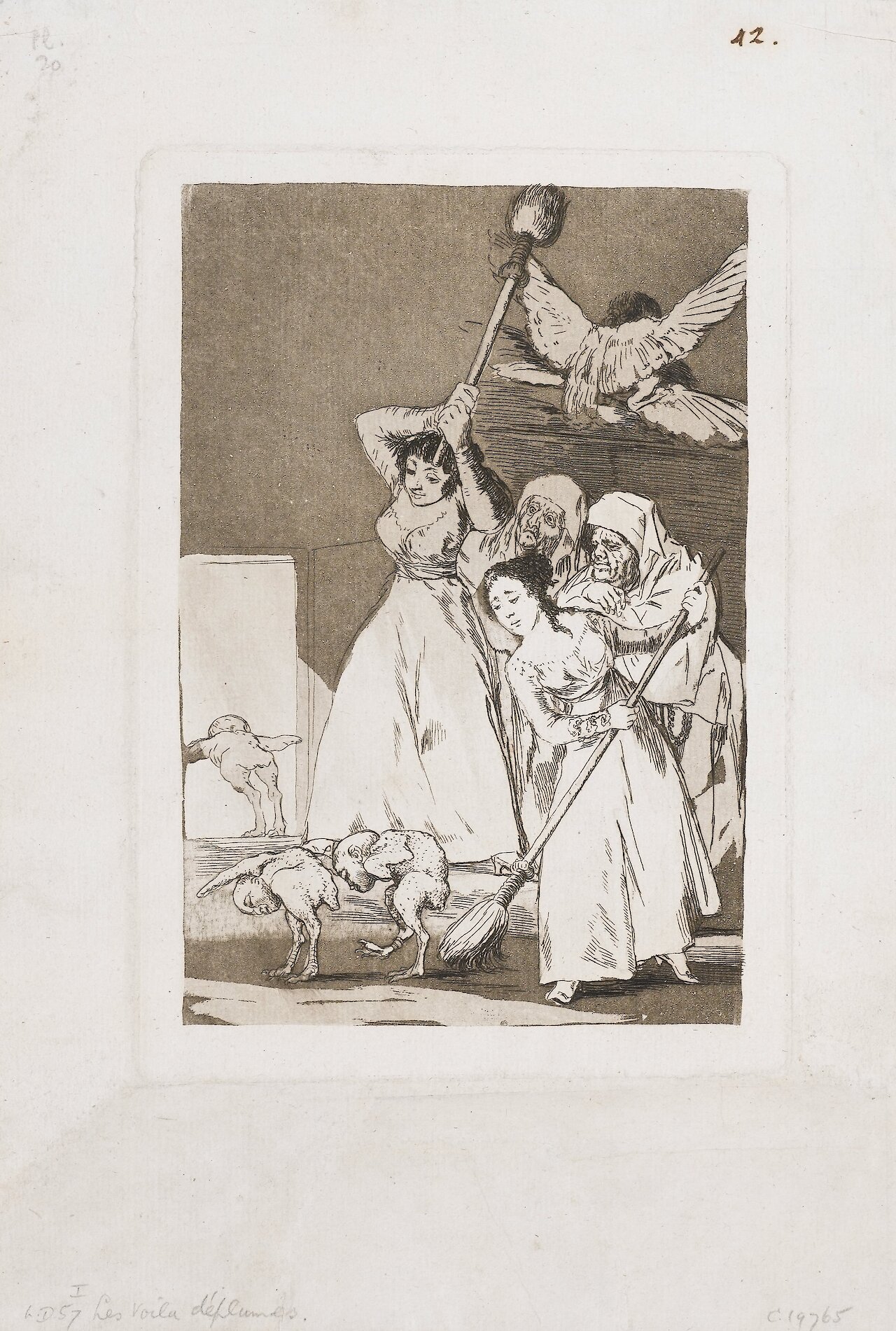
Caprichos: There They Go Plucked (i.e. Fleeced) (Ya van desplumados)
by Francisco José de Goya y Lucientes, circa 1798
- Medium
- Etching, burnished aquatint and drypoint on laid paper
- Dimensions
- Before letters and number, plate: 21.5 x 15 cm (8 7/16 x 5 7/8 in); sheet: 31.4 x 21.5 cm (12 3/8 x 8 7/16 in)
- Credits
- The Norton Simon Foundation
- Location
- Norton Simon Museum
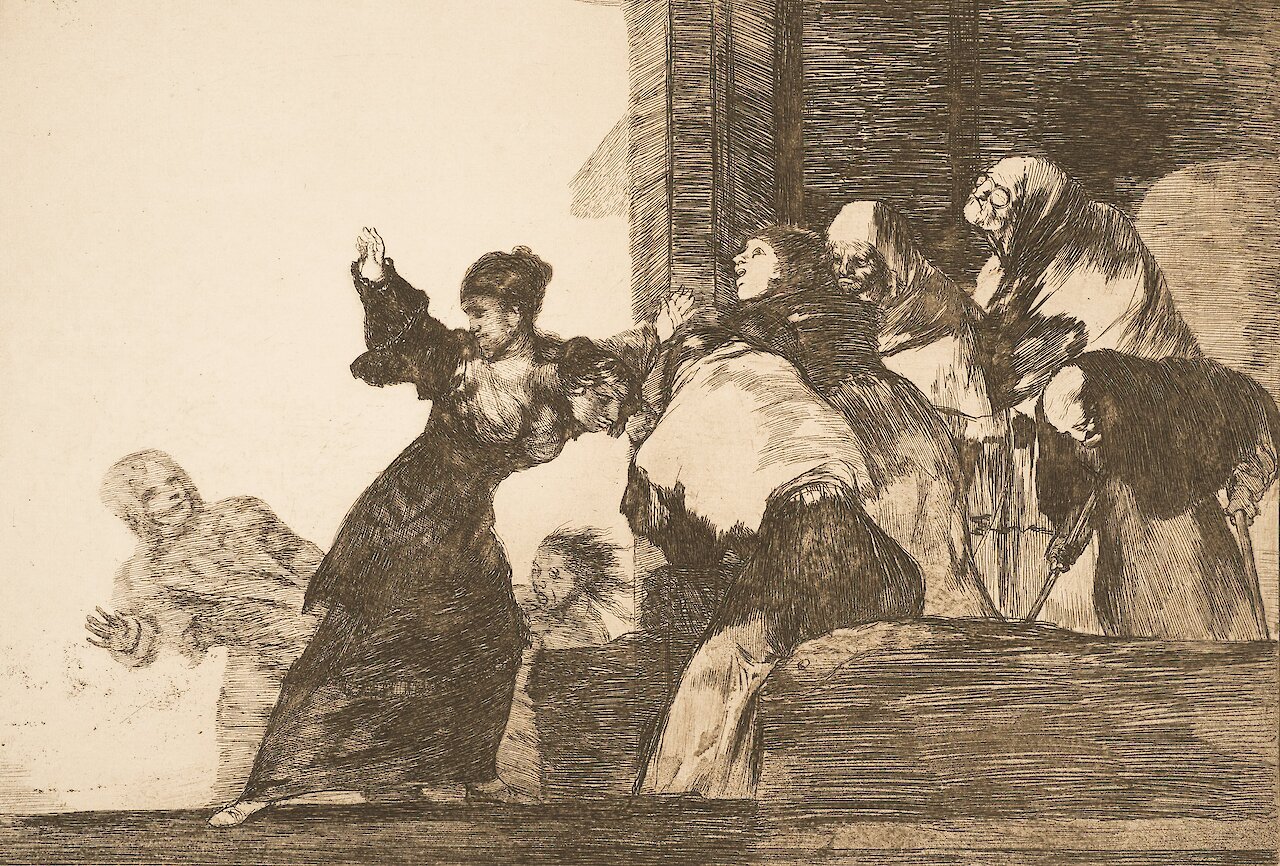
Disparate pobre (Poor Folly)
by Francisco José de Goya y Lucientes, 1815–1823
- Medium
- Aquatint and etching, with retouching in drypoint and burin
- Dimensions
- Plate: 8-1/2 x 12-5/8 in.; sheet: 12-1/4 x 17-3/16 in.; mat: 16 x 20 in.
- Credits
- Gift of David and Marcia Hilton. © Jordan Schnitzer Museum of Art — University of Oregon
- Notes
Published in 1864. Plate #11 from Los Proverbios (The Follies)
- Location
- Jordan Schnitzer Museum of Art
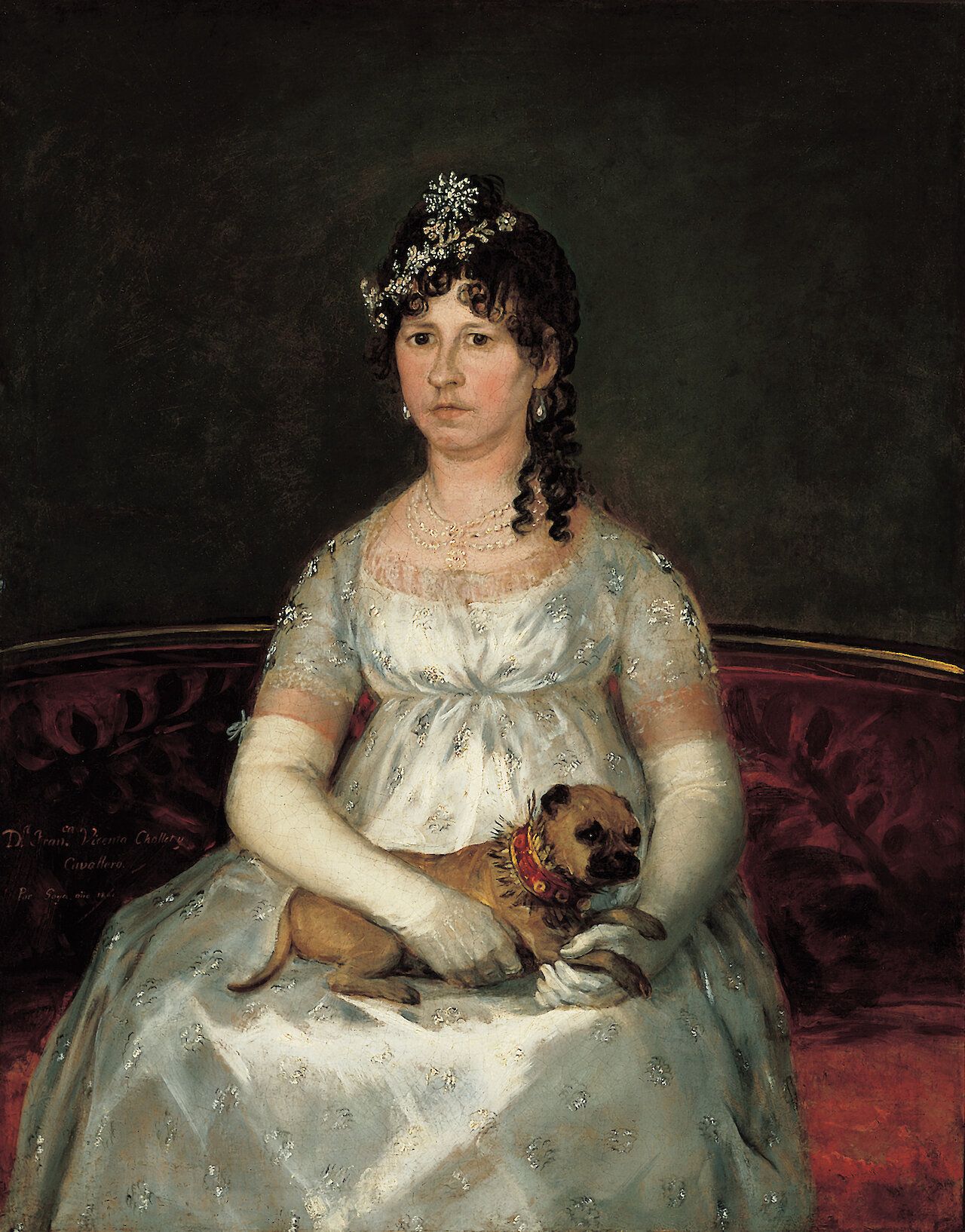
Doña Francisca Vicenta Chollet y Caballero
by Francisco José de Goya y Lucientes, 1806
- Medium
- Oil on canvas
- Dimensions
- Overall: 40 1/2 in x 31 7/8 in
- Credits
- Norton Simon Art Foundation
- Location
- Norton Simon Museum
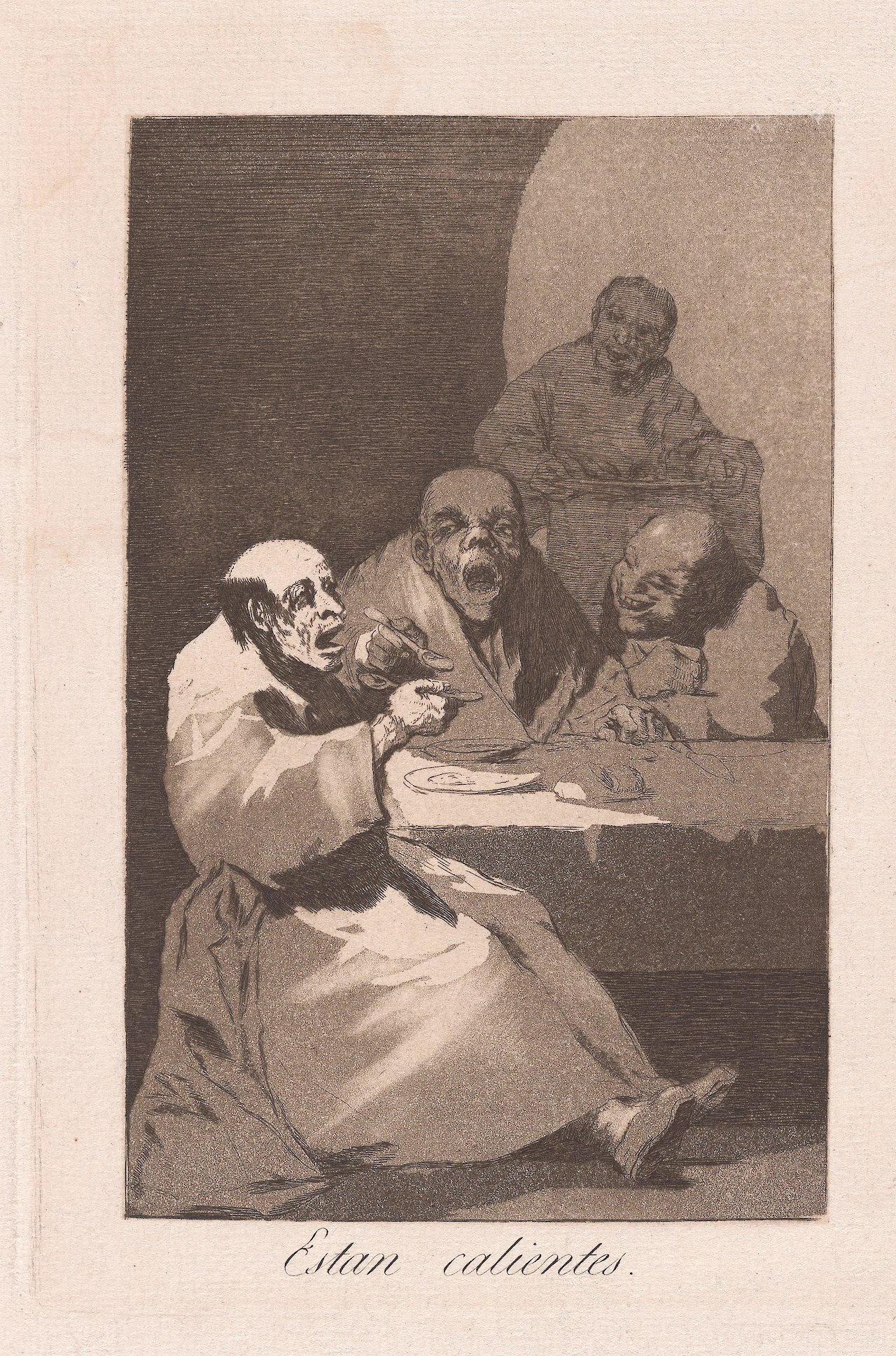
Estan Calientes
by Francisco José de Goya y Lucientes, circa 1797–1798
- Medium
- Etching
- Dimensions
- 8 3/4 x 6 in (22.23 x 15.24 cm)
- Credits
- Museum purchase from the Wally Findlay Acquisition Fund
- Location
- Rollins Museum of Art
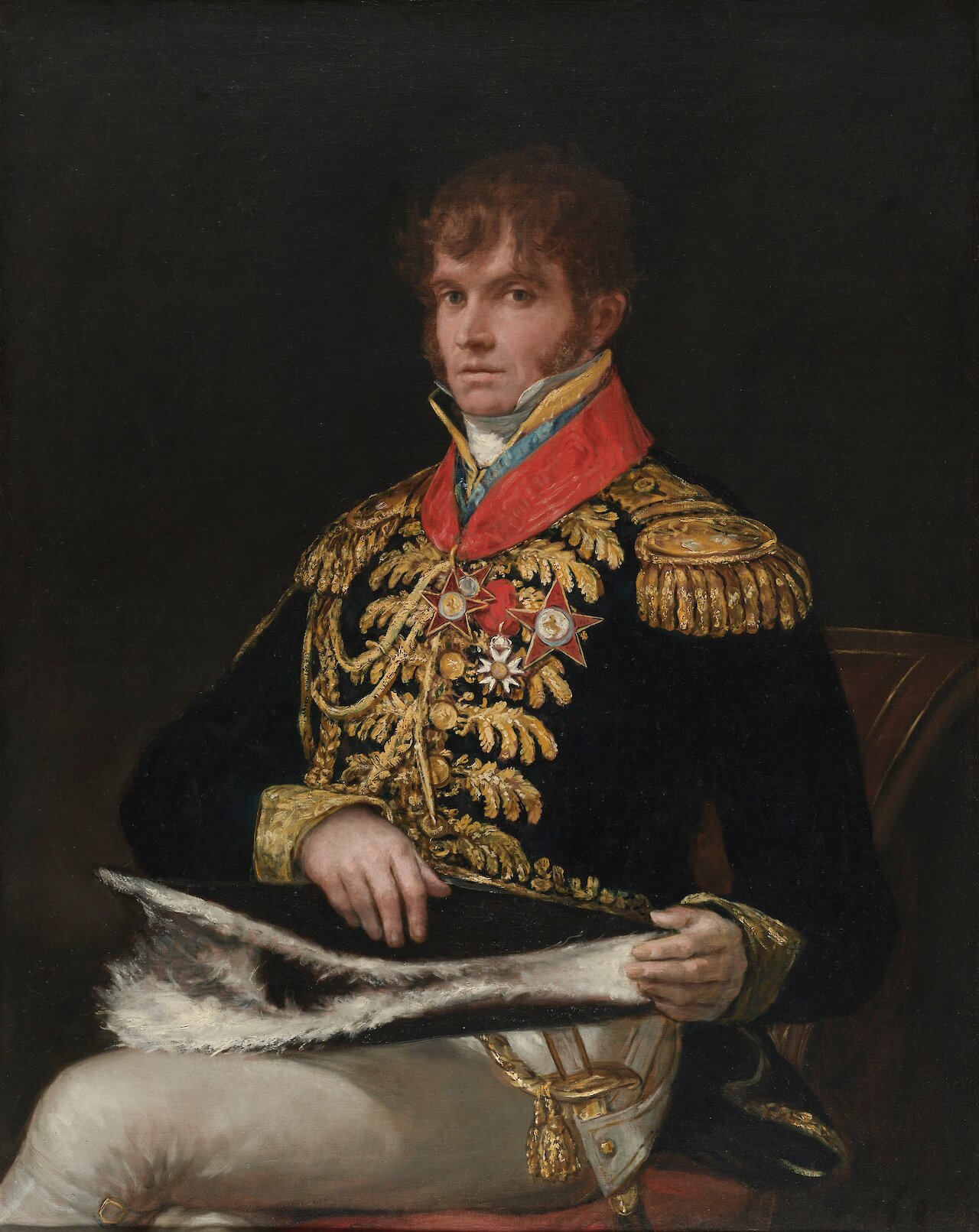
General Nicolas Philippe Guye
by Francisco José de Goya y Lucientes, 1810
- Medium
- Oil on canvas
- Dimensions
- Unframed: 41 3/4 x 33 3/8 in (106.05 x 84.77 cm); framed: 52 1/4 x 43 3/4 in (132.72 x 111.13 cm)
- Credits
- © Virginia Museum of Fine Arts. Photo by Travis Fullerton
- Location
- Virginia Museum of Fine Arts
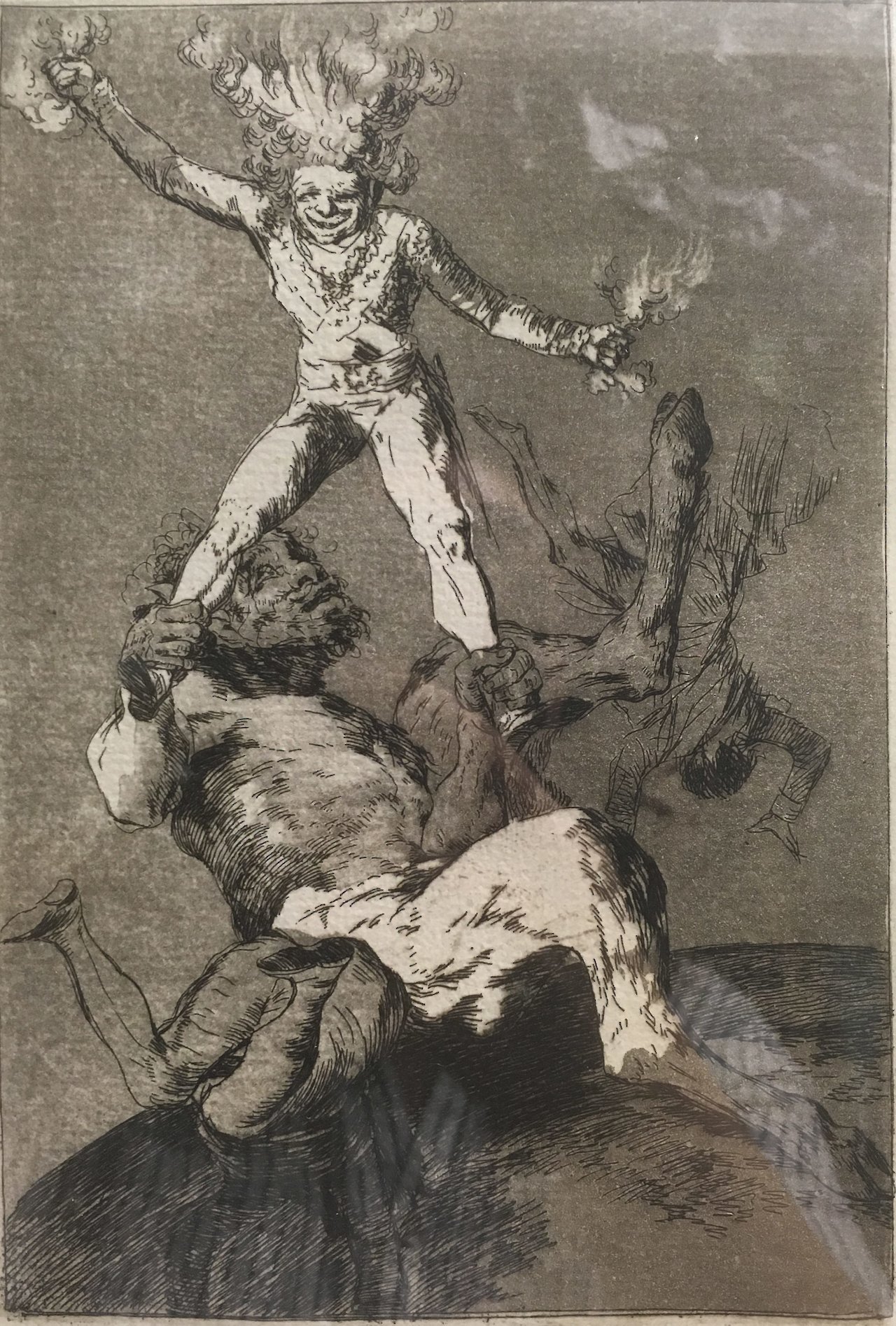
Los Caprichios, Rise and Fall (Subir y Bajar)
by Francisco José de Goya y Lucientes, circa 1797–1798
- Medium
- Etching, aquatint, drypoint, and burin
- Dimensions
- Frame: 19 in x 14 7/8 in (48.26 cm x 37.7825 cm); Image: 7 in x 5 in (17.78 x 12.7 cm)
- Location
- NSU Art Museum Fort Lauderdale
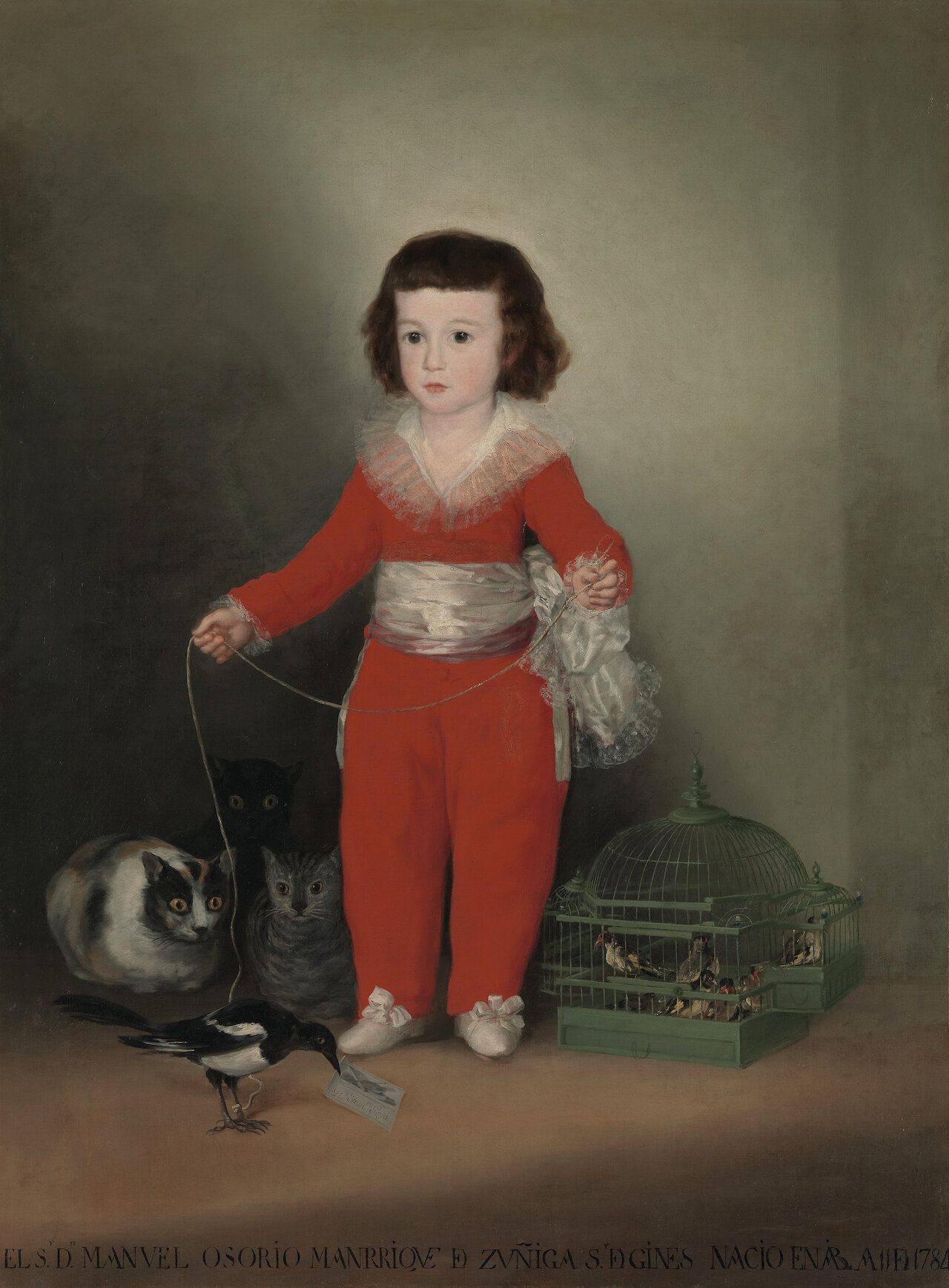
Manuel Osorio Manrique de Zuñiga (1784–1792)
by Francisco José de Goya y Lucientes, circa 1787–1788
- Medium
- Oil on canvas
- Dimensions
- 50 x 40 in (127 x 101.6 cm)
- Credits
- The Jules Bache Collection, 1949.
- Location
- The Metropolitan Museum of Art (The Met)
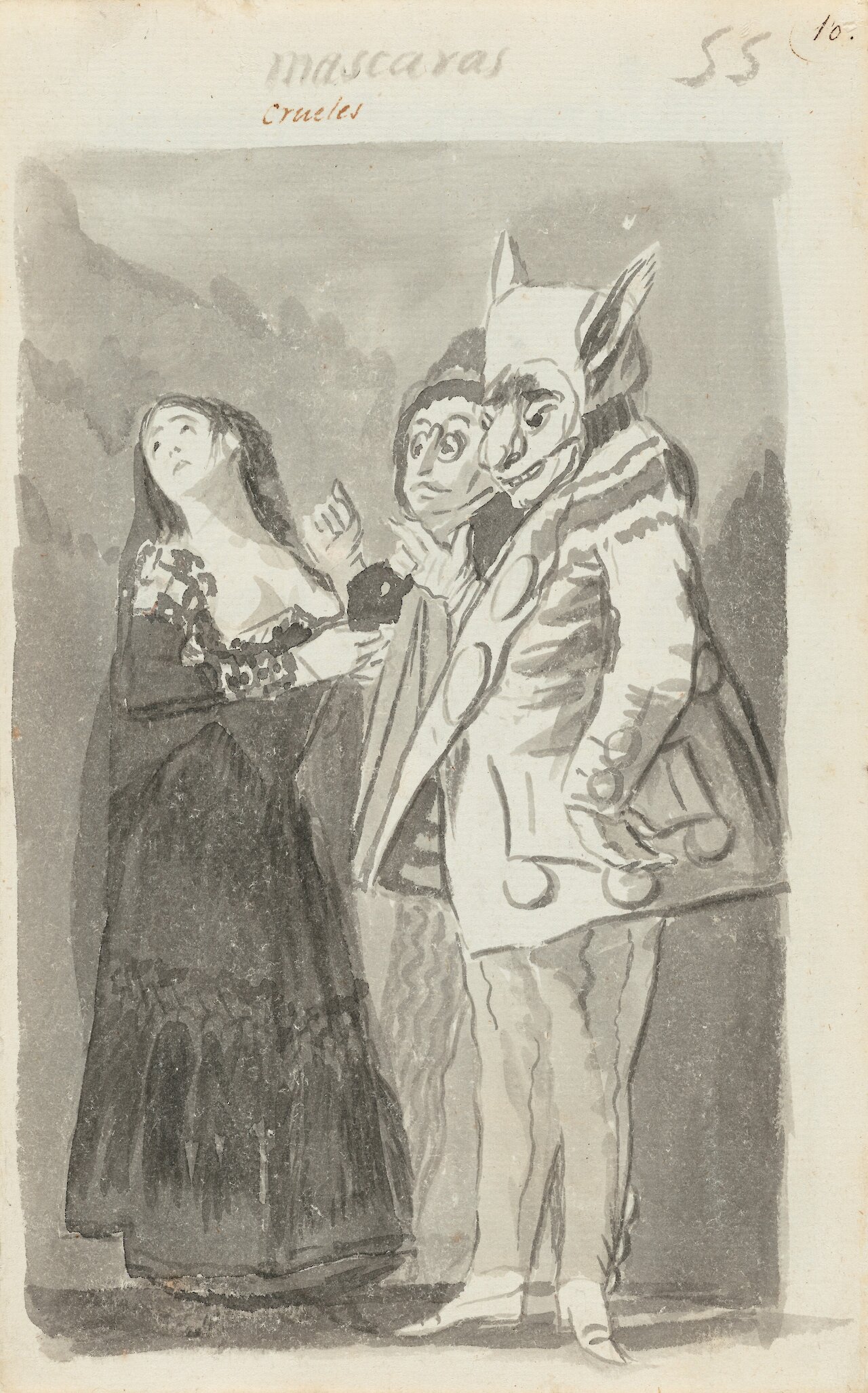
Mascaras crueles (Cruel Masks)
by Francisco José de Goya y Lucientes, circa 1796–1797
- Medium
- Brush and black ink and gray wash with scraping on laid paper
- Dimensions
- 23.7 × 15 cm (9 5/16 × 5 7/8 in)
- Credits
- Woodner Collection.
- Location
- National Gallery of Art
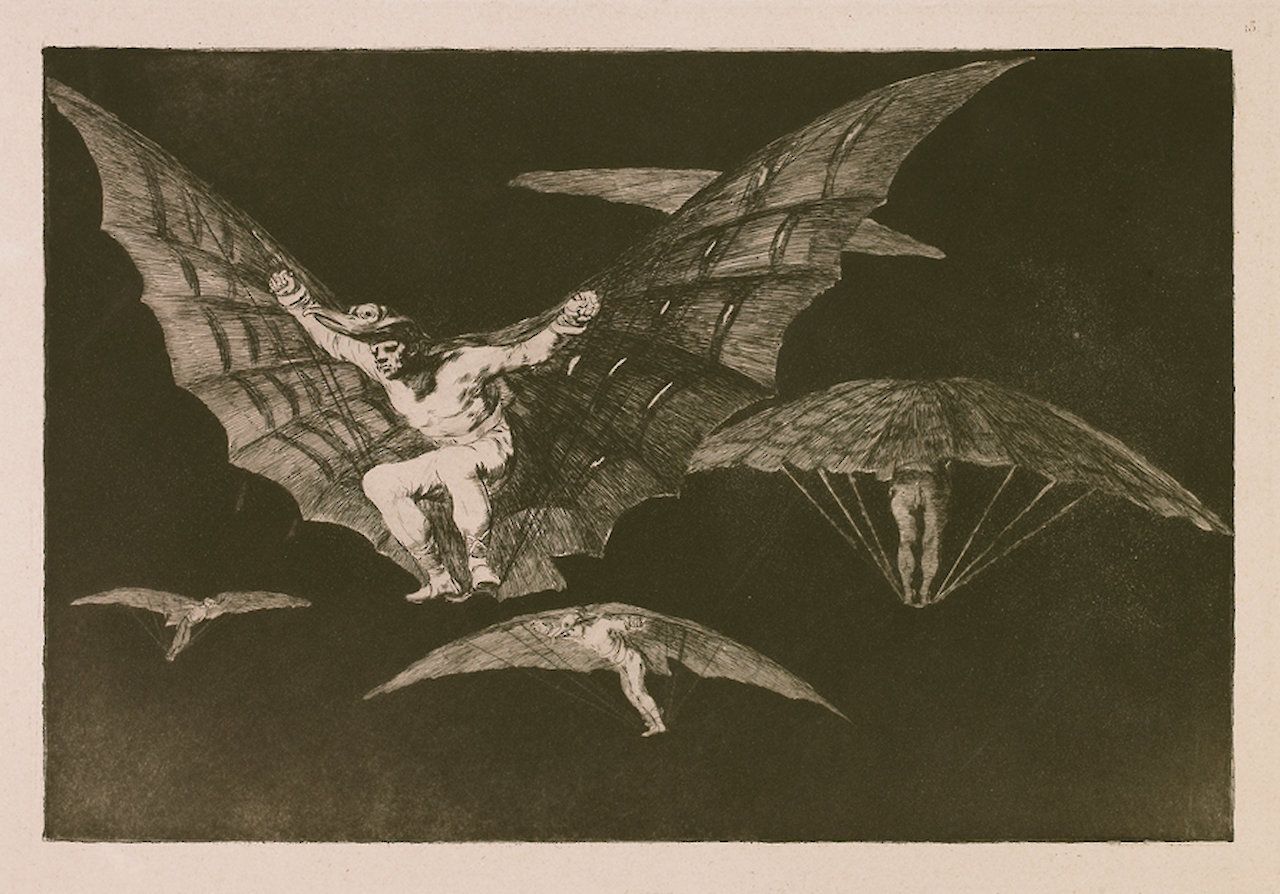
Modo de Volar (A Way of Flying) from Los Proverbios series
by Francisco José de Goya y Lucientes, 1820
- Medium
- Etching and aquatint on wove paper
- Dimensions
- Image: 8 1/2 x 12 3/4 in (21.59 x 32.385 cm); Sheet: 13 3/8 x 19 3/8 in (33.9725 x 49.2125 cm)
- Location
- Allentown Art Museum
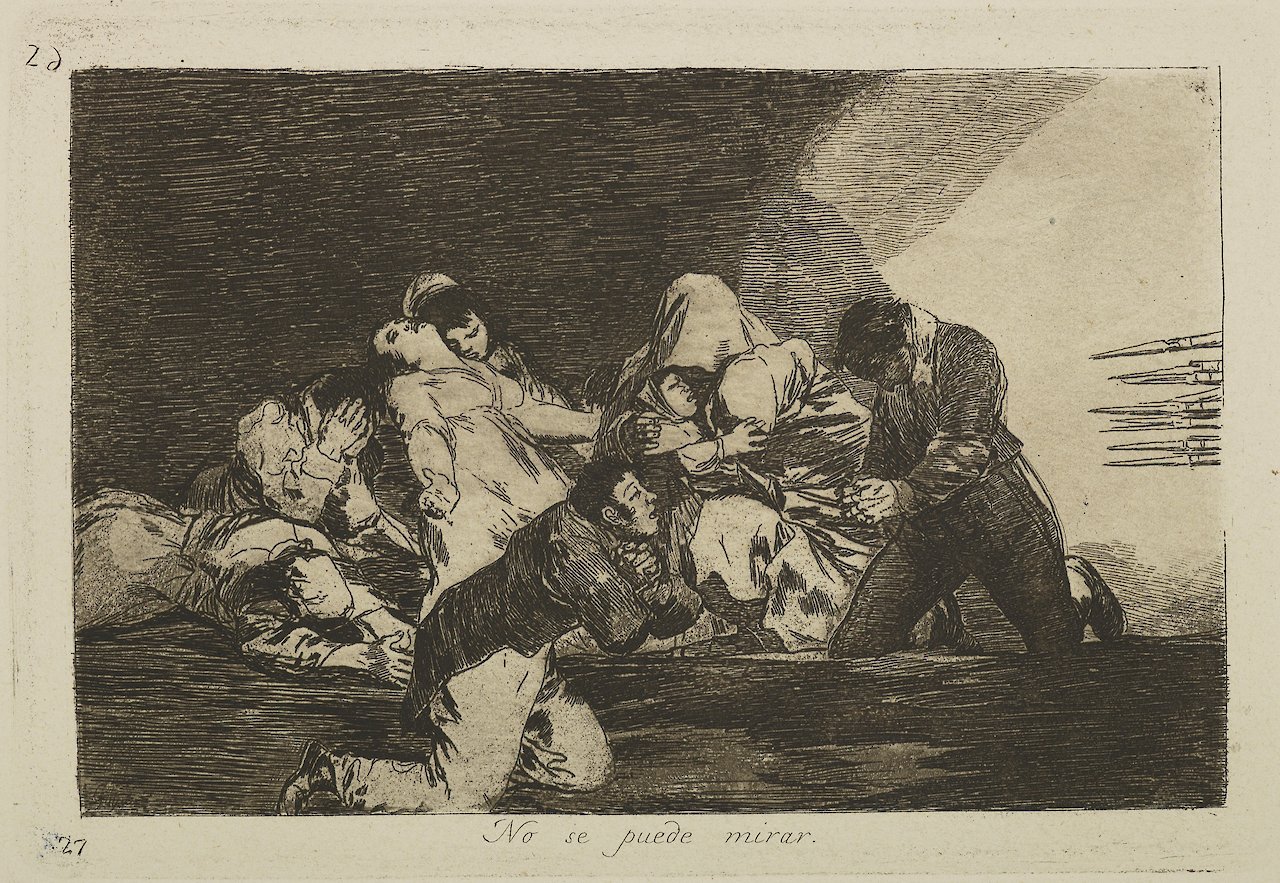
One can't look (No se puede mirar), from The Disasters of War (Los Desastres de la Guerra)
by Francisco José de Goya y Lucientes, circa 1810–1814
- Medium
- Etching
- Location
- John and Mable Ringling Museum of Art
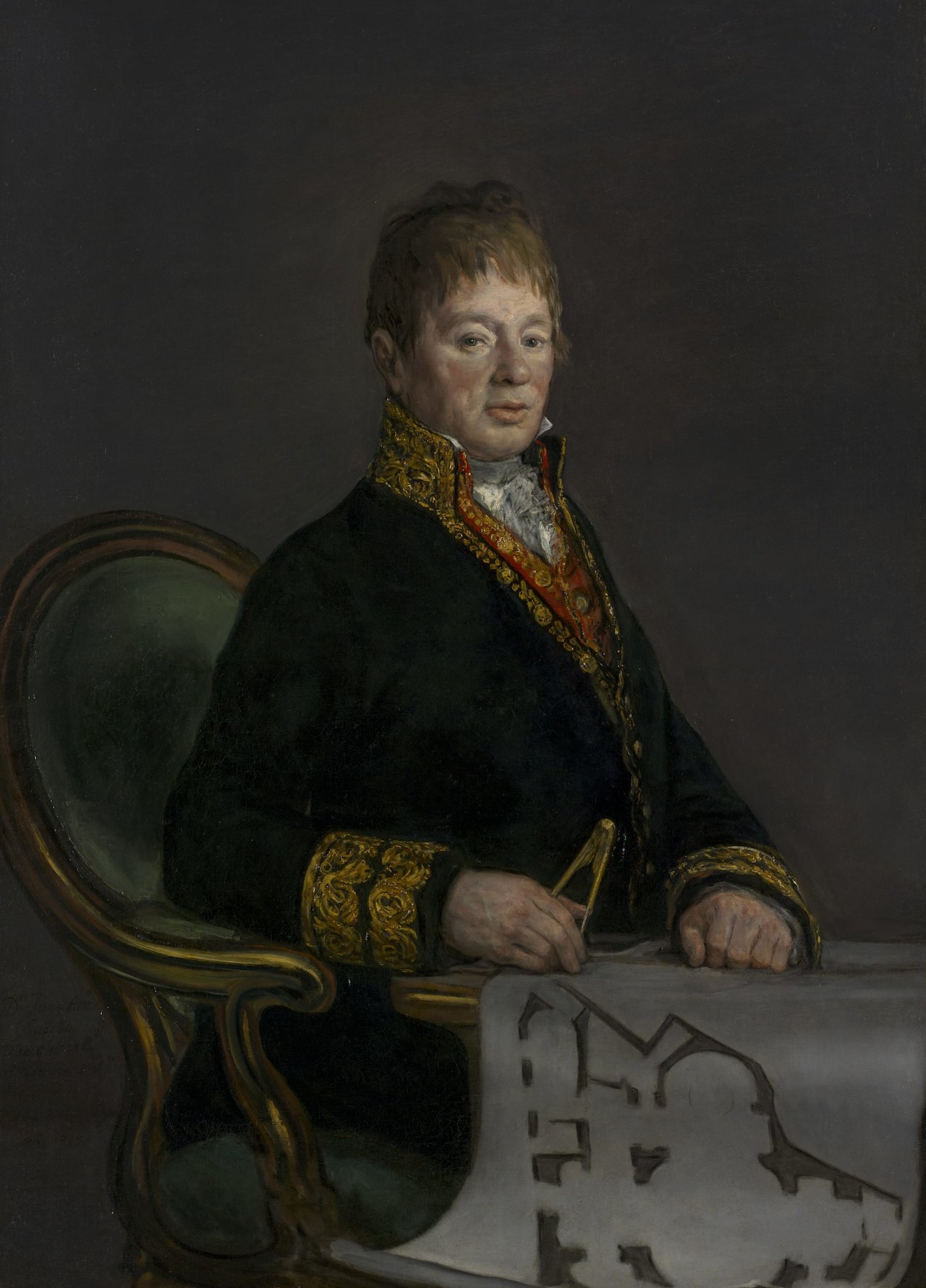
Portrait of Don Juan Antonio Cuervo
by Francisco José de Goya y Lucientes, 1819
- Medium
- Oil on canvas
- Dimensions
- Framed: 136.8 x 105.1 x 7.3 cm (53 7/8 x 41 3/8 x 2 7/8 in.); Unframed: 120 x 87 cm (47 1/4 x 34 1/4 in.)
- Location
- Cleveland Museum of Art
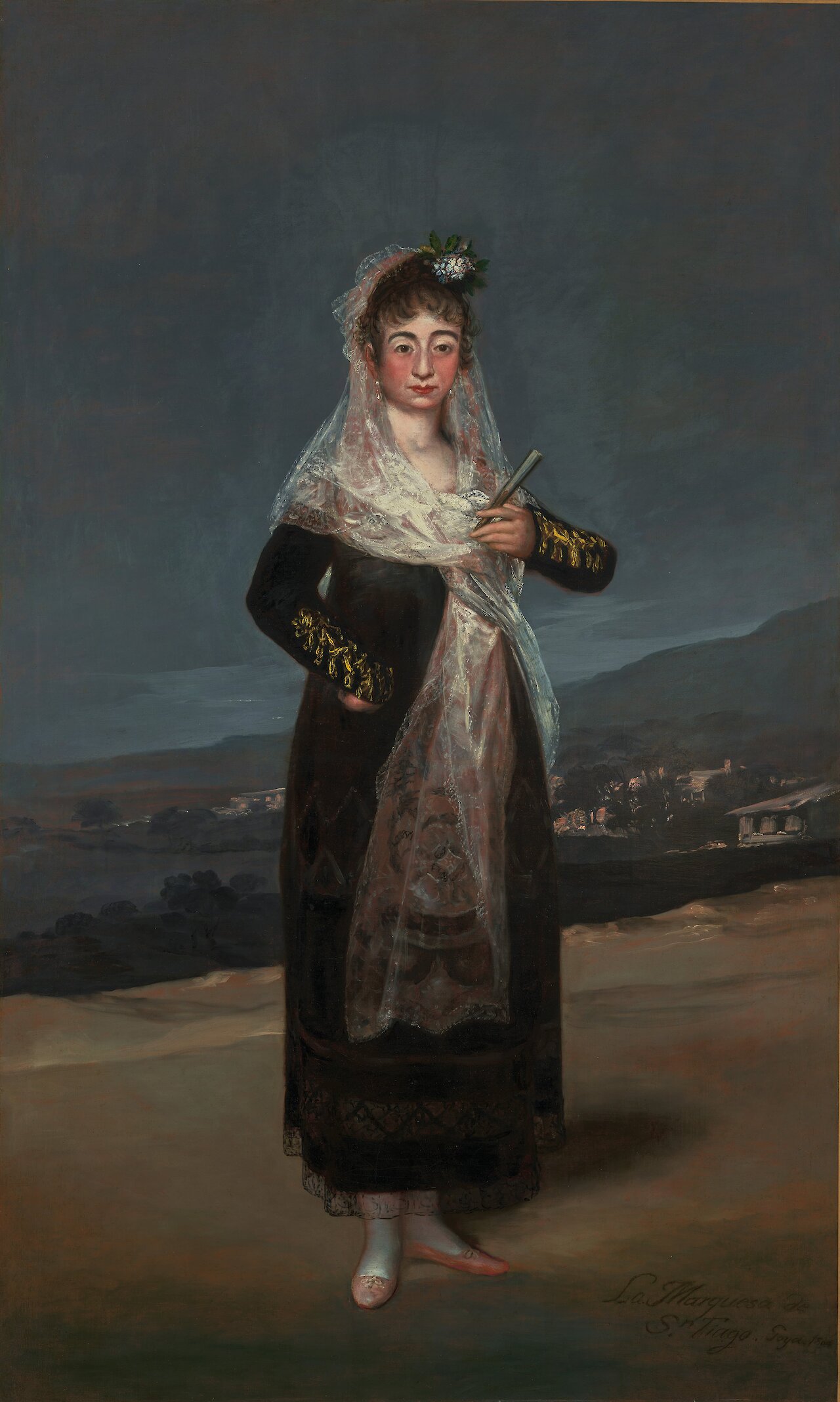
Portrait of the Marquesa de Santiago
by Francisco José de Goya y Lucientes, 1804
- Medium
- Oil on canvas
- Dimensions
- Unframed: 209.9 × 126.7 cm (82 5/8 × 49 7/8 in.) Framed: 235.3 × 150.2 × 9.5 cm (92 5/8 × 59 1/8 × 3 3/4 in)
- Notes
The Marquesa de Santiago strikes a commanding presence, confronting the viewer directly with her hand assertively on her hip. She stands in front of a landscape of gently sloping hills dotted with cottages made up of rough, tan brushstrokes. Her sheer white lace mantilla veil extends to her knees and she holds a closed fan in her left hand, both traditional accessories of Spanish women in the 1700s and 1800s. The Marquesa was known to wear bold makeup, enough that her acquaintances wrote about it, and here, heavily applied rouge, powder, and lipstick accentuate her features. While other portraitists of this time often flattered or idealized their sitters, Francisco Goya frankly captured the Marquesa’s appearance and confident personality.
The Marquesa, María de la Soledad Rodríguez de los Ríos Tauche, grew up the only child of a well-connected family in Madrid, eventually inheriting the three noble titles of her parents and the wealth that came with those. Married first in 1783 when she was eighteen, then again in 1790 after she was widowed, María was the one who brought greater wealth and status to her husbands. She had estates in Flanders and Spain, two million reales in capital (the Spanish currency used from the 1300s to 1860s), and two million more in silver, jewelry, and other possessions. This portrait, though painted as a pair to her second husband’s, unconventionally touts her own title, Santiago, in the inscription in the lower right, rather than his, San Adrían, which would have been typical for her to adopt as his wife. As the more elite of the couple, she may have decided to commission these portraits from Goya to add to her family’s substantial paintings collection.
- Location
- J. Paul Getty Museum
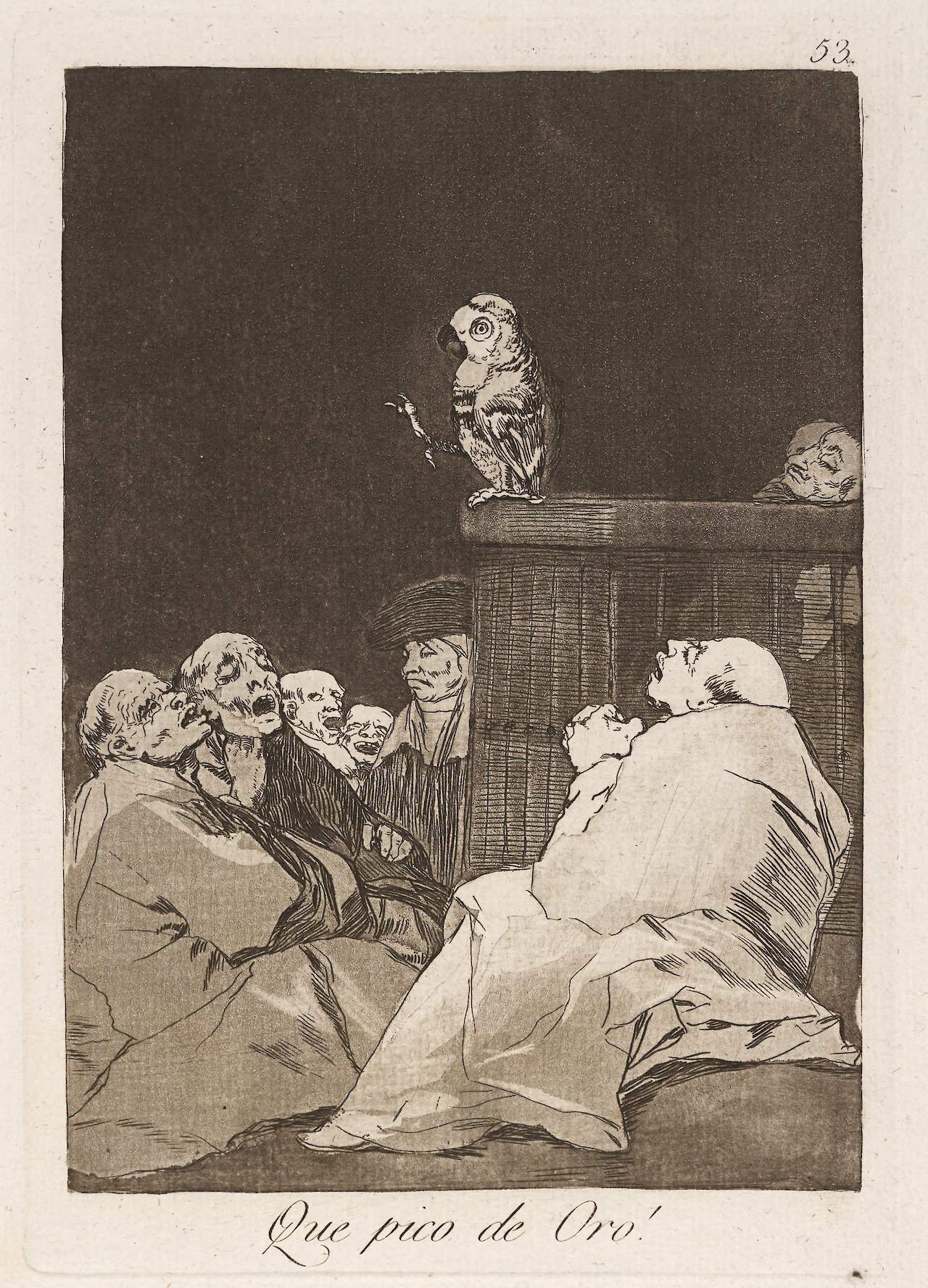
Que pico de Oro! (What a Golden Beak!)
by Francisco José de Goya y Lucientes, circa 1796–1799
- Medium
- Original etching: drypoint, aquatint, engravin
- Dimensions
- 13 x 9 3/8 in (33.02 x 23.81 cm)
- Credits
- Gift of Mrs. Ruth Funk
- Location
- Rollins Museum of Art
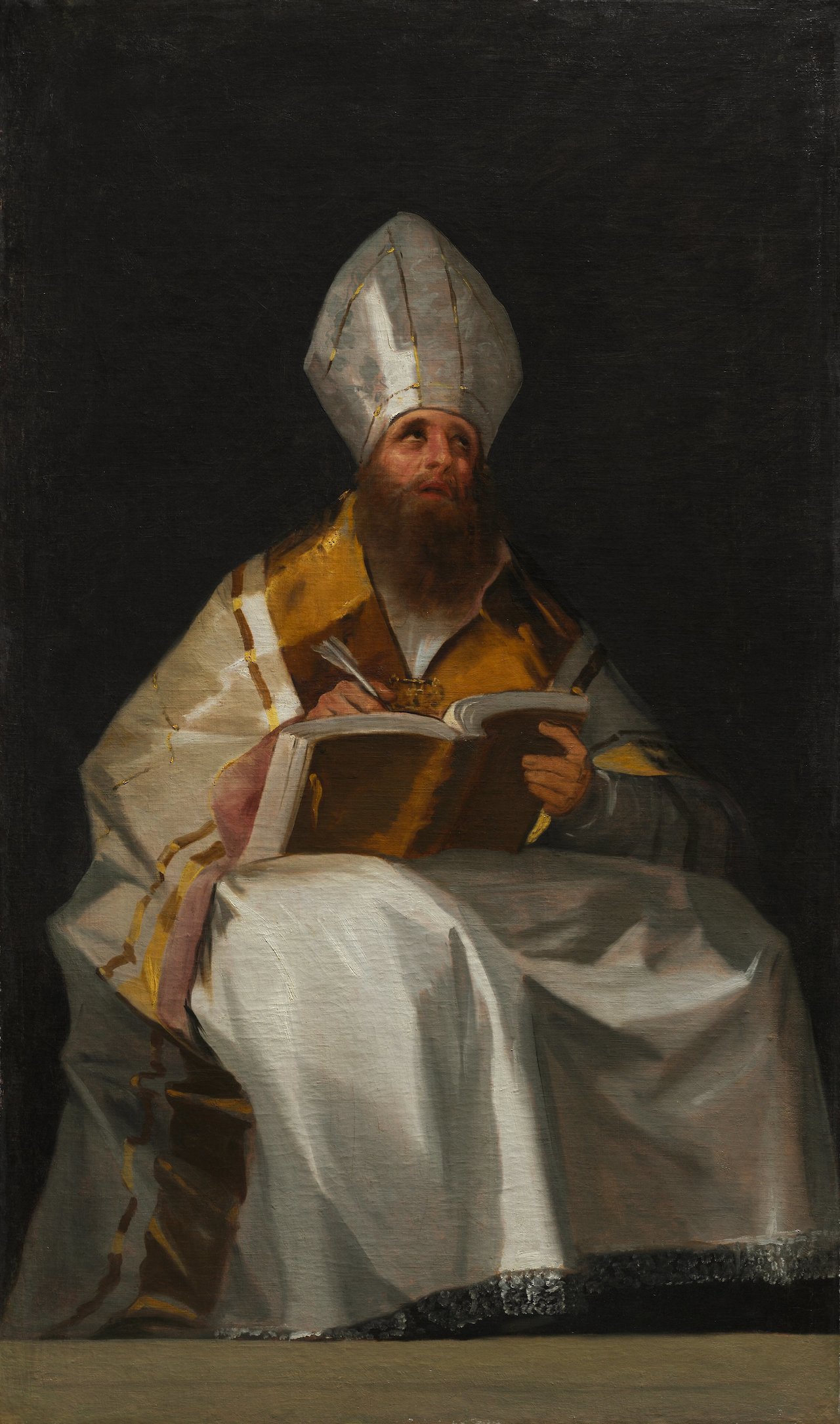
Saint Ambrose
by Francisco José de Goya y Lucientes, circa 1796–1799
- Medium
- Oil on canvas
- Dimensions
- Framed: 148.7 x 225.3 x 10.3 cm (58 9/16 x 88 11/16 x 4 1/16 in.); Unframed: 190 x 113 cm (74 13/16 x 44 1/2 in.)
- Location
- Cleveland Museum of Art
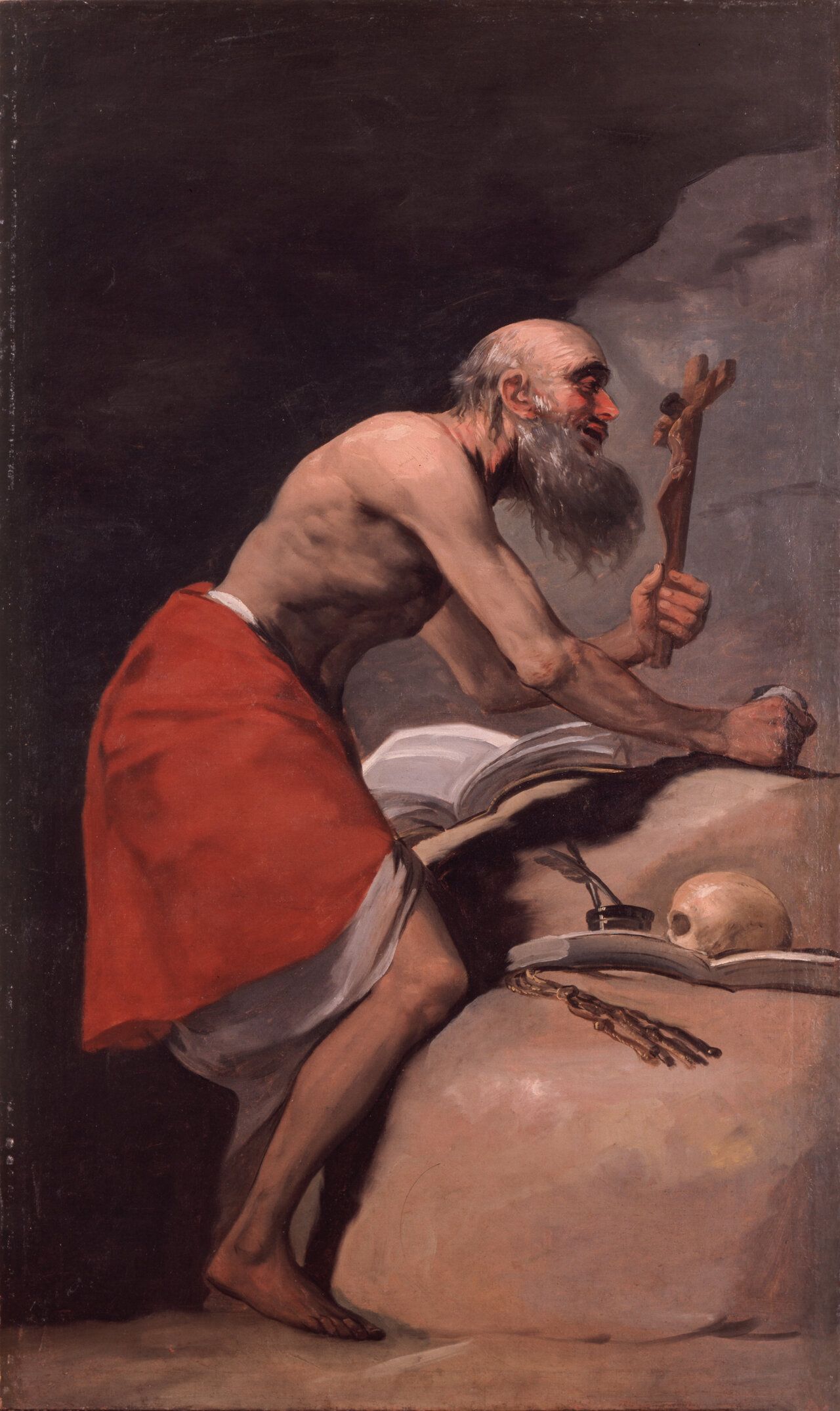
Saint Jerome in Penitence
by Francisco José de Goya y Lucientes, 1798
- Medium
- Oil on canvas
- Dimensions
- 75-1/8 x 45 in (190.8 x 114.3 cm)
- Credits
- The Norton Simon Foundation
- Location
- Norton Simon Museum
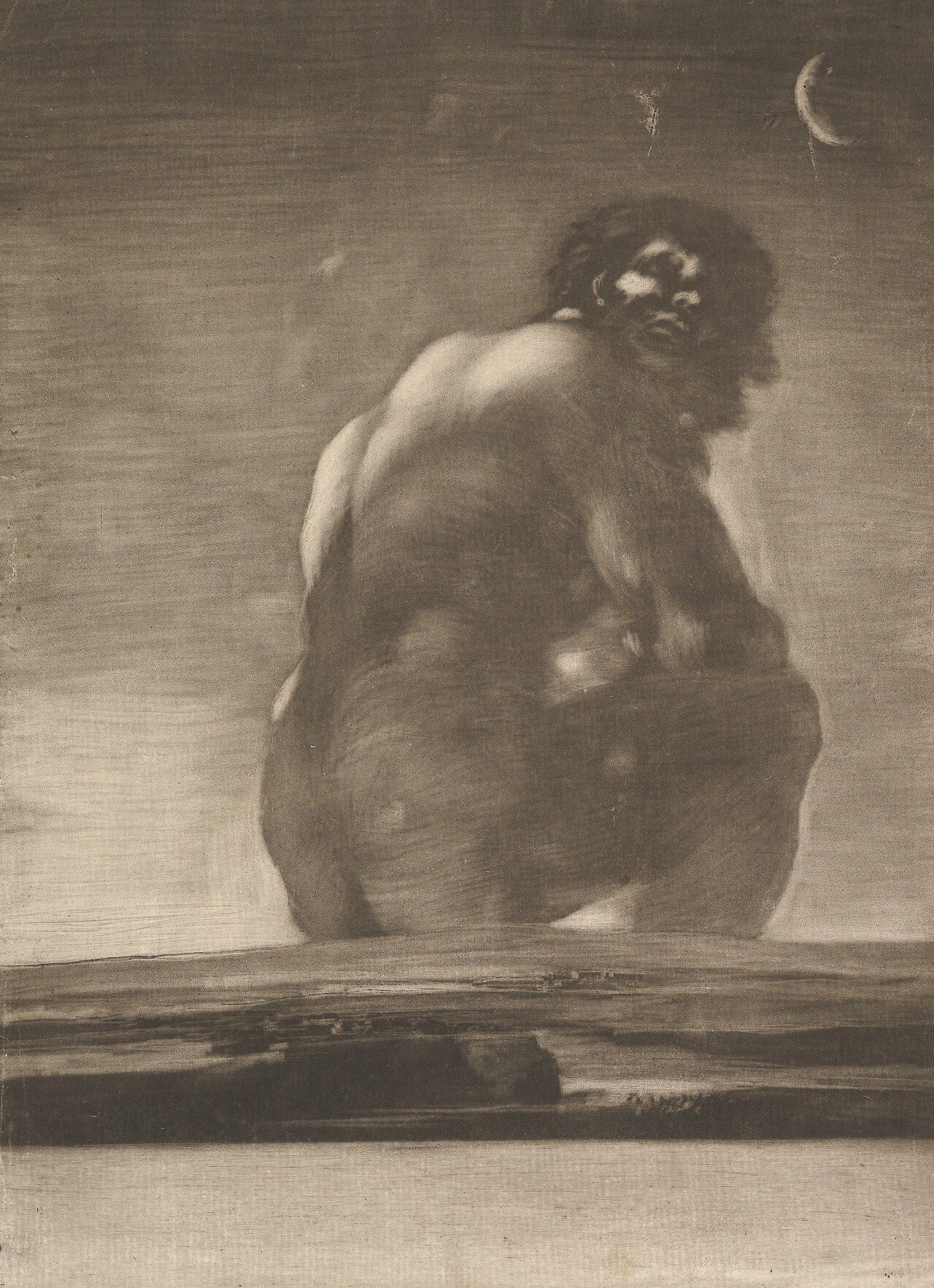
Seated Giant
by Francisco José de Goya y Lucientes, circa 1818
- Medium
- Burnished aquatint, scaper, roulette, lavis (along the top of the landscape and within the landscape)
- Dimensions
- Plate: 11 3/16 × 8 3/16 in (28.4 × 20.8 cm); Framed: 21 3/4 × 19 in (55.2 × 48.3 cm)
- Credits
- Harris Brisbane Dick Fund, 1935.
- Location
- The Metropolitan Museum of Art (The Met)
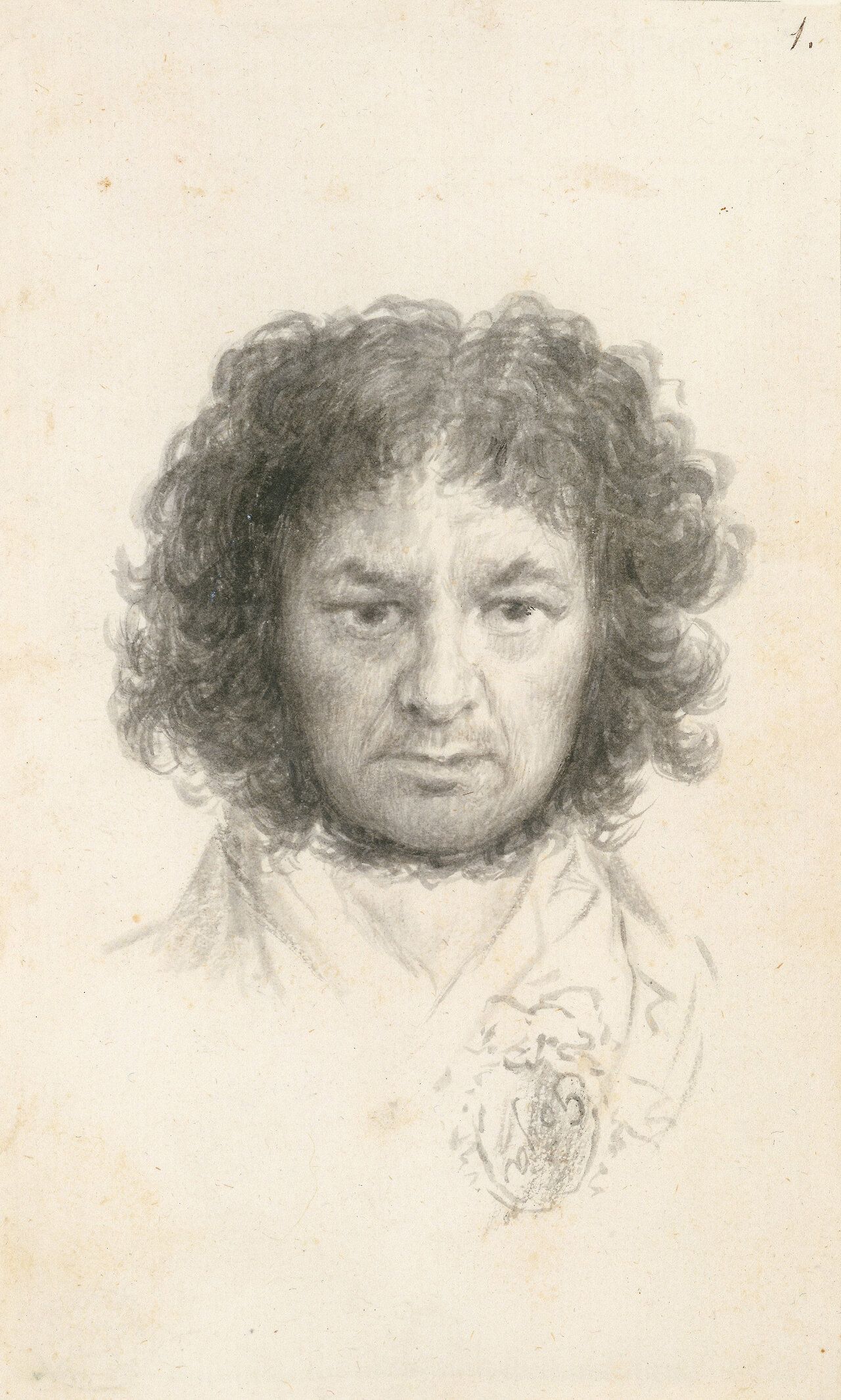
Self-portrait
by Francisco José de Goya y Lucientes, circa 1796
- Medium
- Brush and point of brush, carbon black ink, on laid paper
- Dimensions
- Sheet: 5 7/8 × 3 9/16 in (15 × 9.1 cm)
- Credits
- Harris Brisbane Dick Fund, 1935.
- Location
- The Metropolitan Museum of Art (The Met)
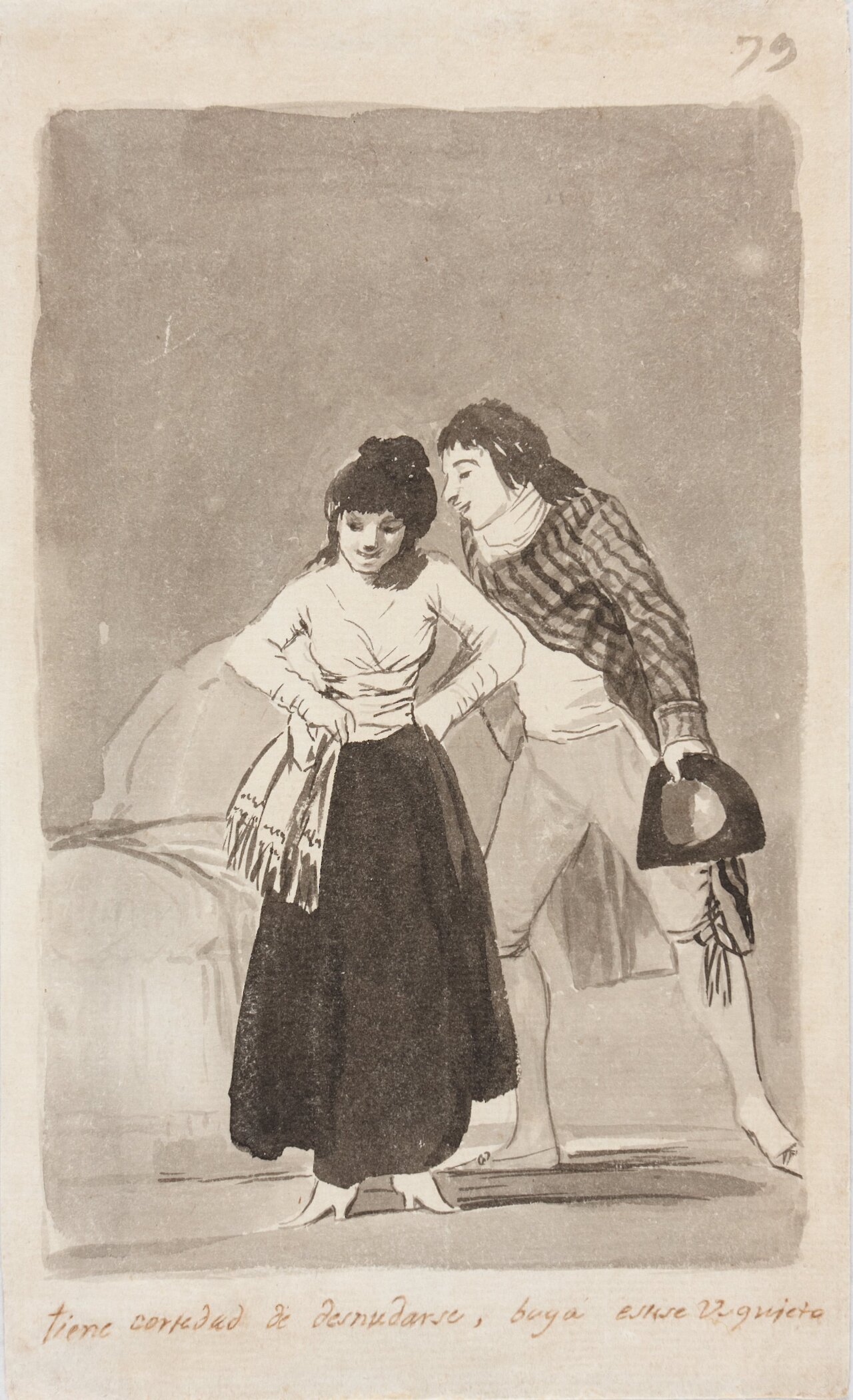
She Is Bashful About Undressing, Leave Me in Peace (tiene cortedad de desnudarse, bayá estese V. quieto)
by Francisco José de Goya y Lucientes, 1796–1797
- Medium
- Brush and carbon black ink wash on laid paper
- Dimensions
- Image: 7-5/8 x 5 in (19.5 x 12.7 cm); sheet: 9-1/8 x 5-5/8 in (23.2 x 14.2 cm)
- Credits
- Norton Simon Art Foundation
- Location
- Norton Simon Museum
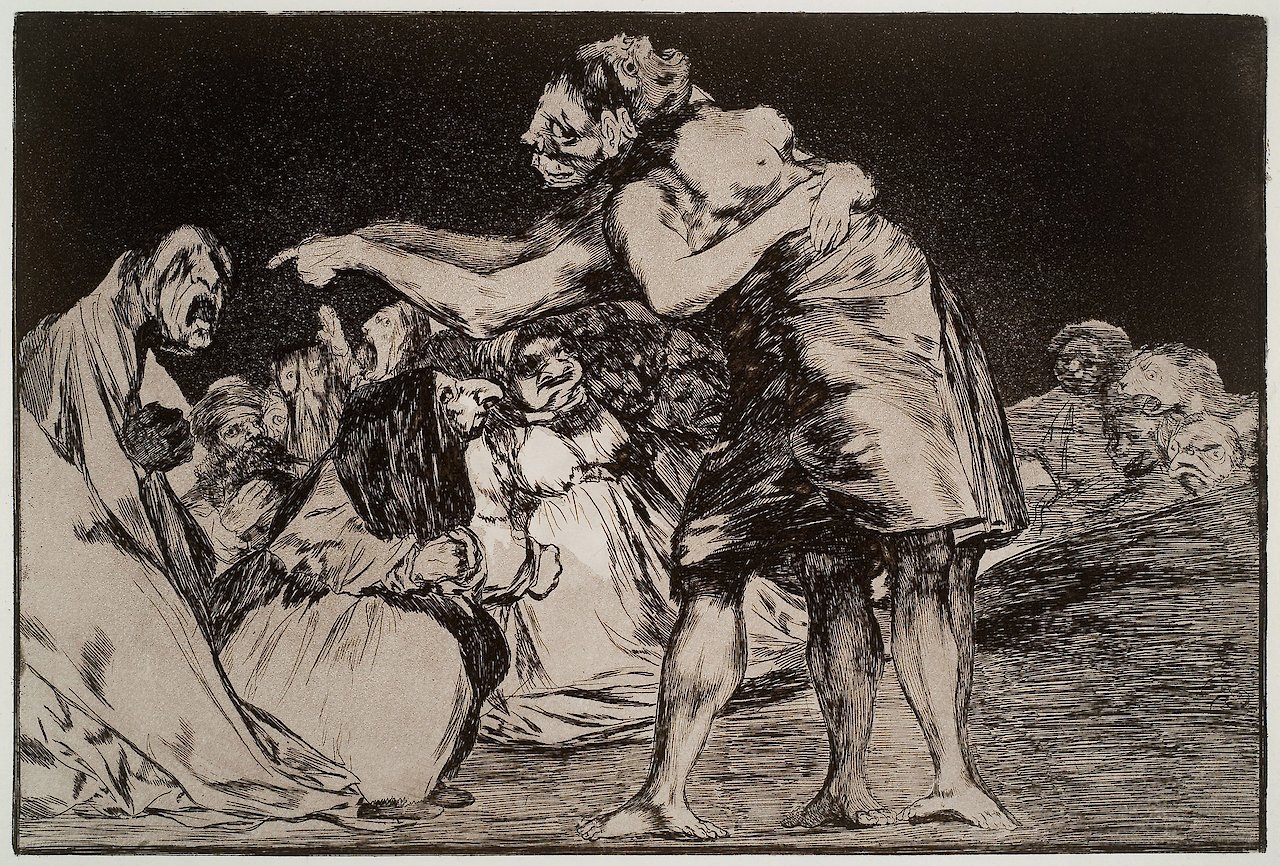
She Who is Ill Wed Never Misses a Chance to Say So
by Francisco José de Goya y Lucientes, 1864
- Medium
- Etching, aquatint and drypoint on heavy wove paper; plate 7 from the first
- Dimensions
- 8.5 x 12 1/2 in.
- Location
- Columbia Museum of Art
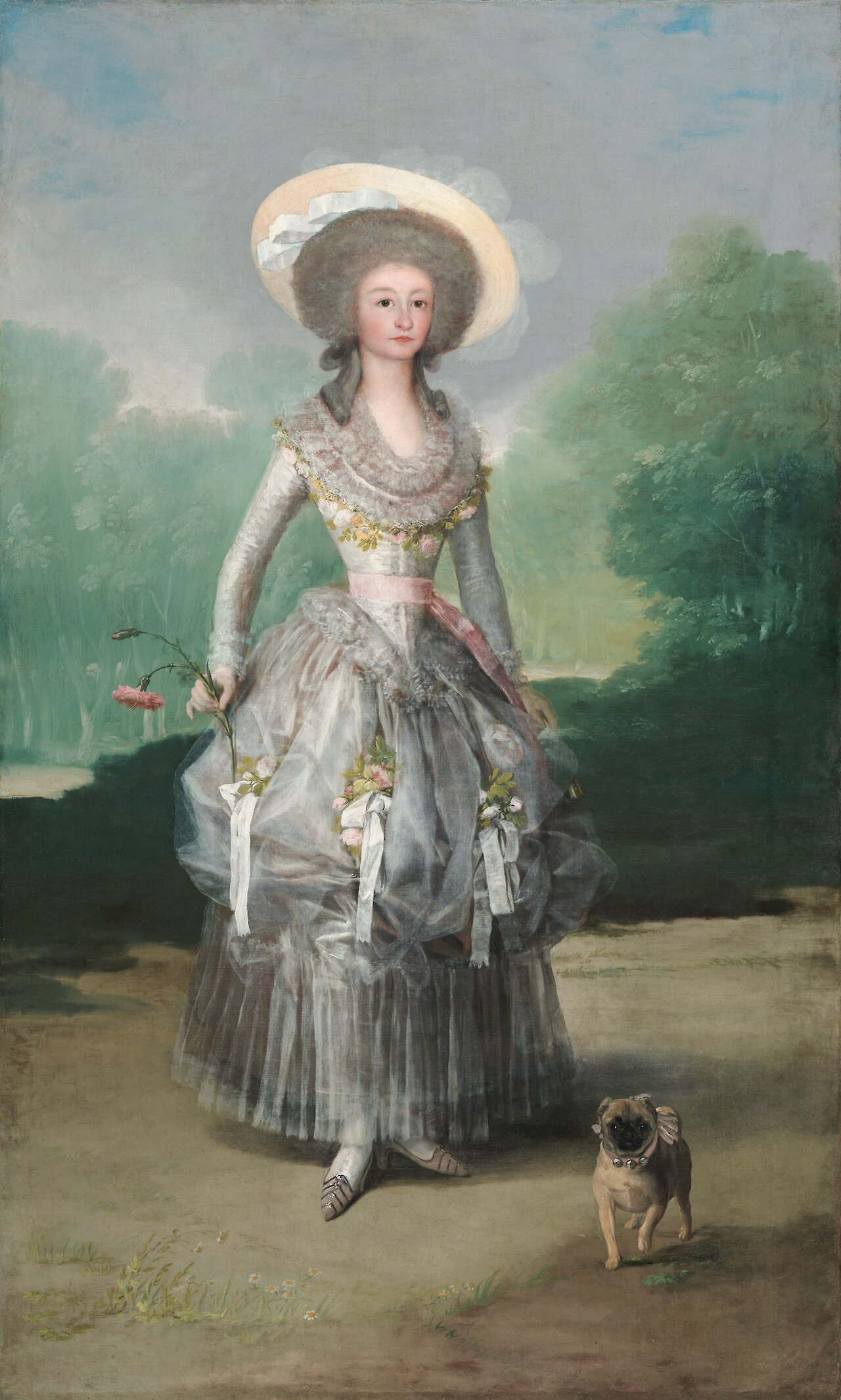
The Marquesa de Pontejos
by Francisco José de Goya y Lucientes, 1786
- Medium
- Oil on canvas
- Dimensions
- 210.3 x 127 cm (82 13/16 x 50 in)
- Credits
- Andrew W. Mellon Collection.
- Location
- National Gallery of Art
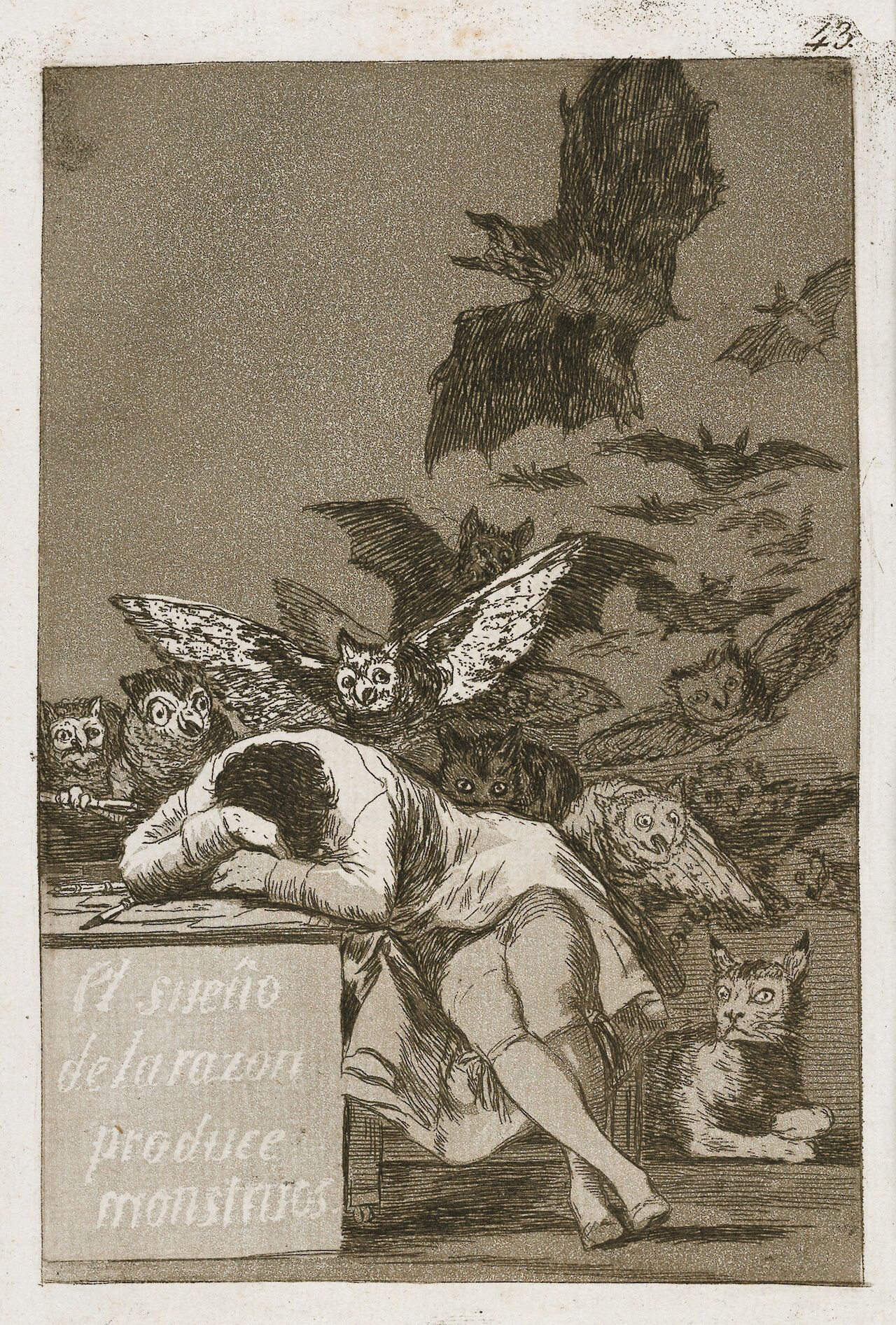
The Sleep of Reason Produces Monsters (Los Caprichos, 43)
by Francisco José de Goya y Lucientes, 1799
- Medium
- Etching and aquatint
- Dimensions
- Plate: 21.3 x 15.2 cm (8 3/8 x 6 in.); sheet: 30.8 x 20.5 cm (12 1/8 x 8 1/16 in); platemark: 21.9 x 15.2 cm (8 5/8 x 6 in)
- Credits
- Harvard Art Museums/Fogg Museum, Gift of Philip Hofer
- Location
- Harvard Art Museums
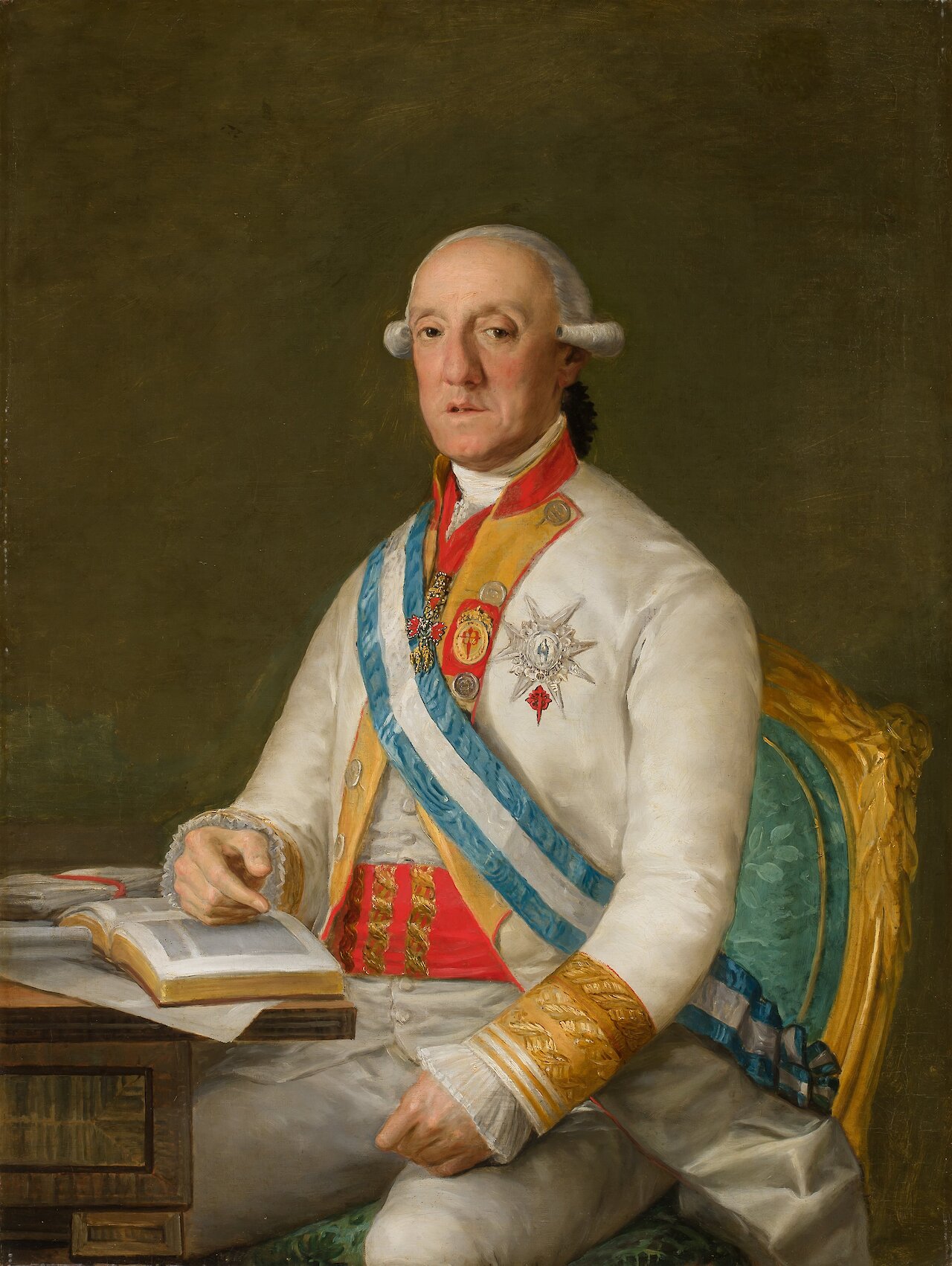
Vicente Maria de Vera de Aragon, Duque de la Roca
by Francisco José de Goya y Lucientes, circa 1795
- Medium
- Oil
- Dimensions
- 42 5/8 in x 32 1/2 in (108.27 cm x 82.55 cm)
- Location
- San Diego Museum of Art
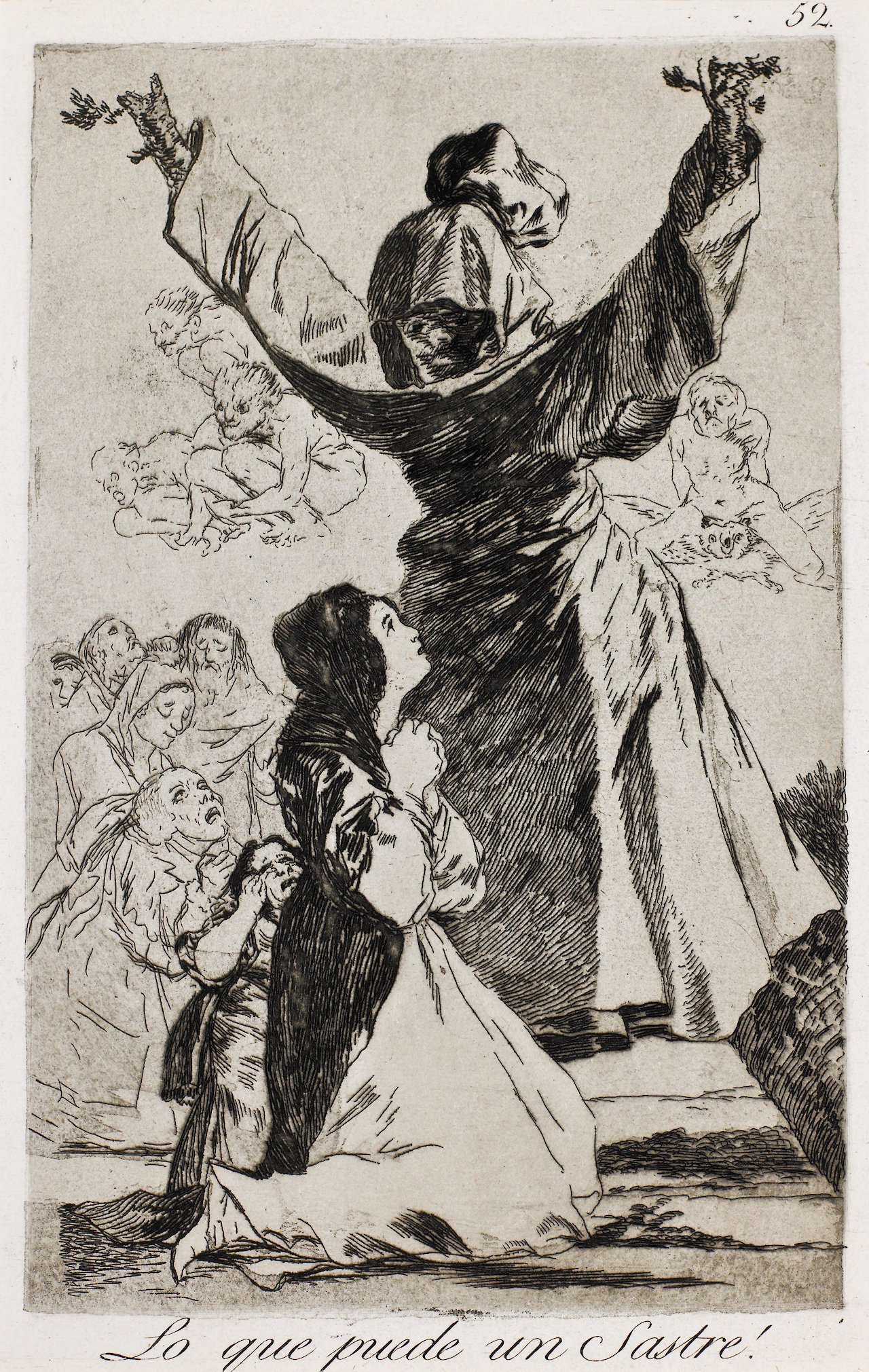
What a Tailor Can Do!
by Francisco José de Goya y Lucientes, circa 1796–1797
- Medium
- Etching and aquatint
- Dimensions
- 12 1/4 x 8 7/8 in. (31.1 x 22.5 cm)
- Location
- Harn Museum of Art
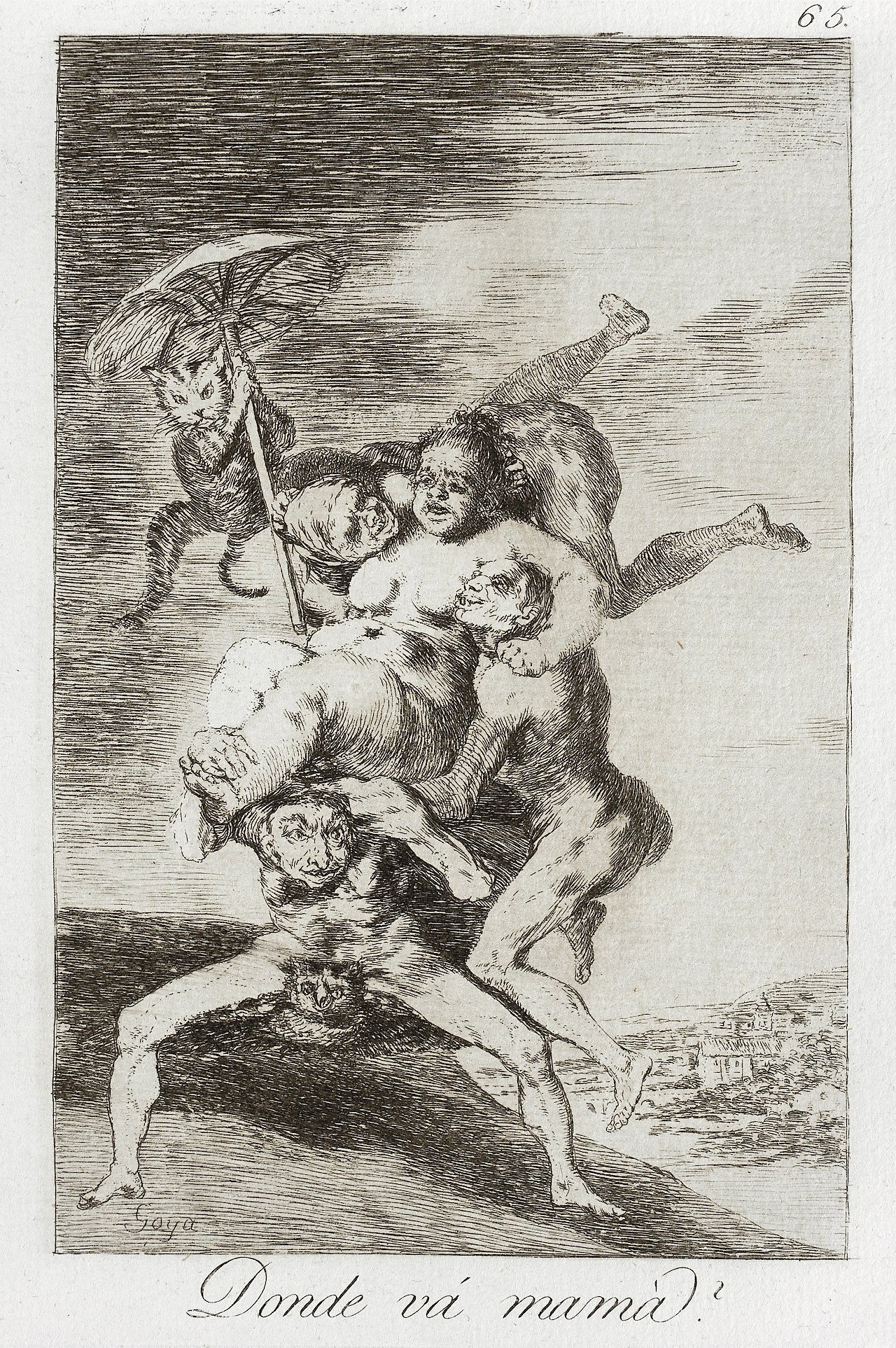
Where is Mama Going?
by Francisco José de Goya y Lucientes, circa 1796–1797
- Medium
- Etching and aquatint
- Dimensions
- 8 1/4 x 6 1/2 in. (21 x 16.5 cm)
- Location
- Harn Museum of Art
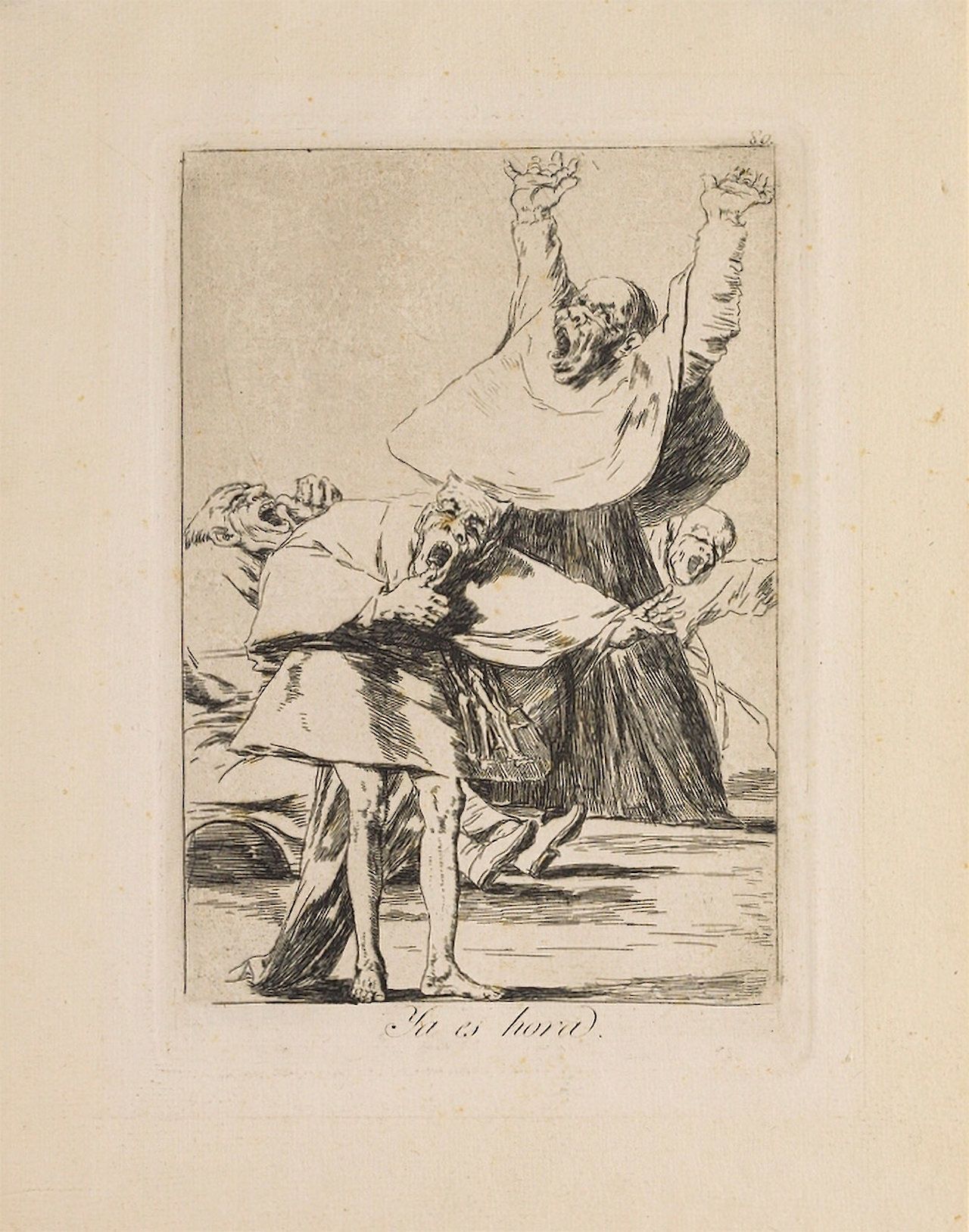
Ya es Hora (‘tis the hour, time to be off) from Los Caprichos
by Francisco José de Goya y Lucientes, 1799
- Medium
- Etching and aquatint
- Dimensions
- Image: 7 3/4 x 5 3/8 in (19.685 x 13.6525 cm); Sheet: 11 1/2 x 8 7/8 in (29.21 x 22.5425 cm)
- Location
- Allentown Art Museum
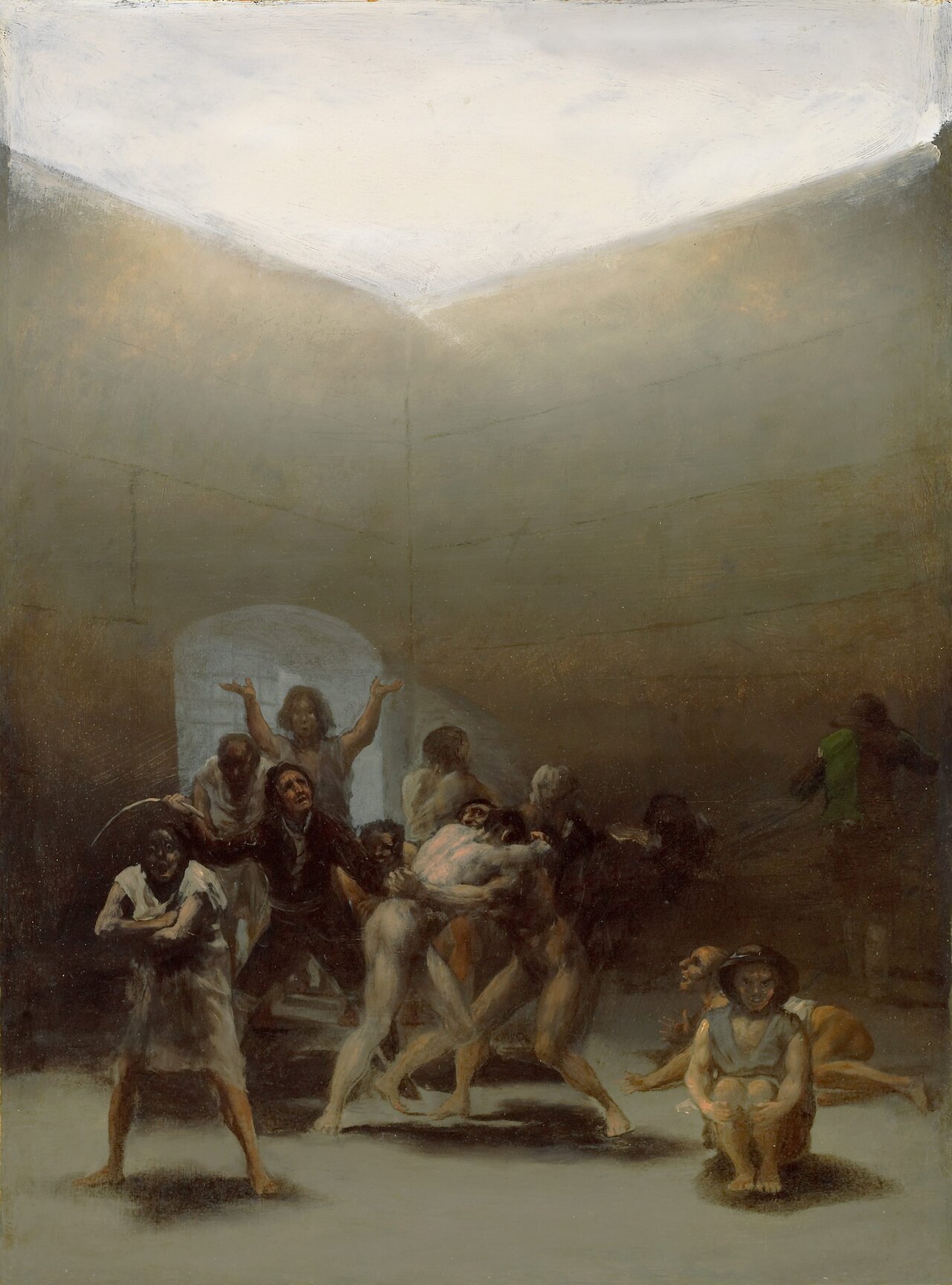
Yard with Madmen
by Francisco José de Goya y Lucientes, 1794
- Medium
- Oil on tin-plated iron
- Dimensions
- 16 7/8 x 12 3/8 in (42.9 x 31.4 cm)
- Credits
- Meadows Museum, SMU, Dallas. Algur H. Meadows Collection, MM.67.01. Photography by Michael Bodycomb.
- Location
- Meadows Museum
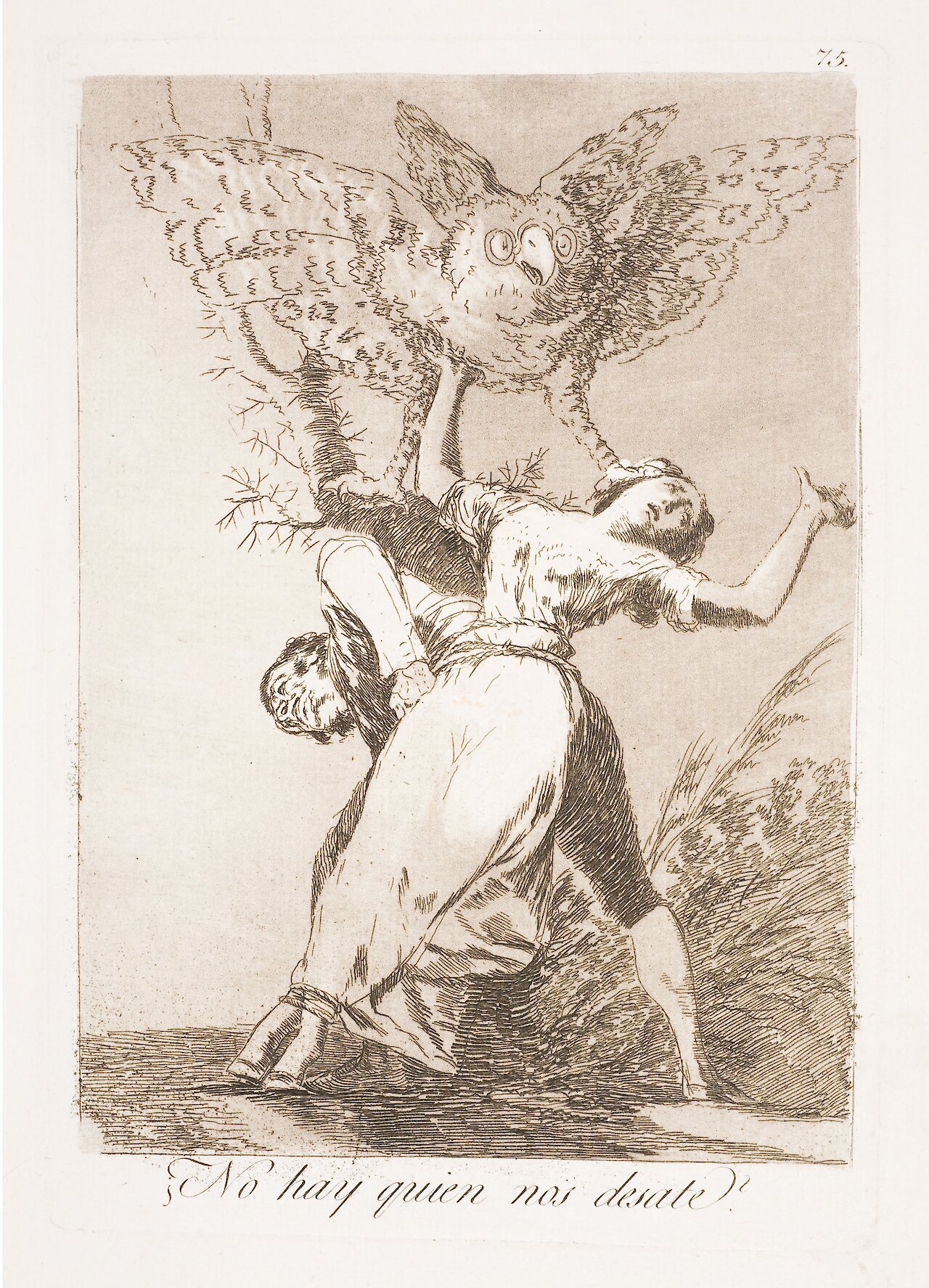
¿No hay quien nos desate? (Is there no one to untie us?)
by Francisco José de Goya y Lucientes, 1797–1798
- Medium
- Etching and aquatint on laid paper
- Dimensions
- 7-1/2 x 5-5/16 inches
- Credits
- Special Purchase, Friends of the Museum of Art and the Museum of Art Council. © Jordan Schnitzer Museum of Art – University of Oregon
- Notes
From Los Caprichos
- Location
- Jordan Schnitzer Museum of Art
Gris, Juan
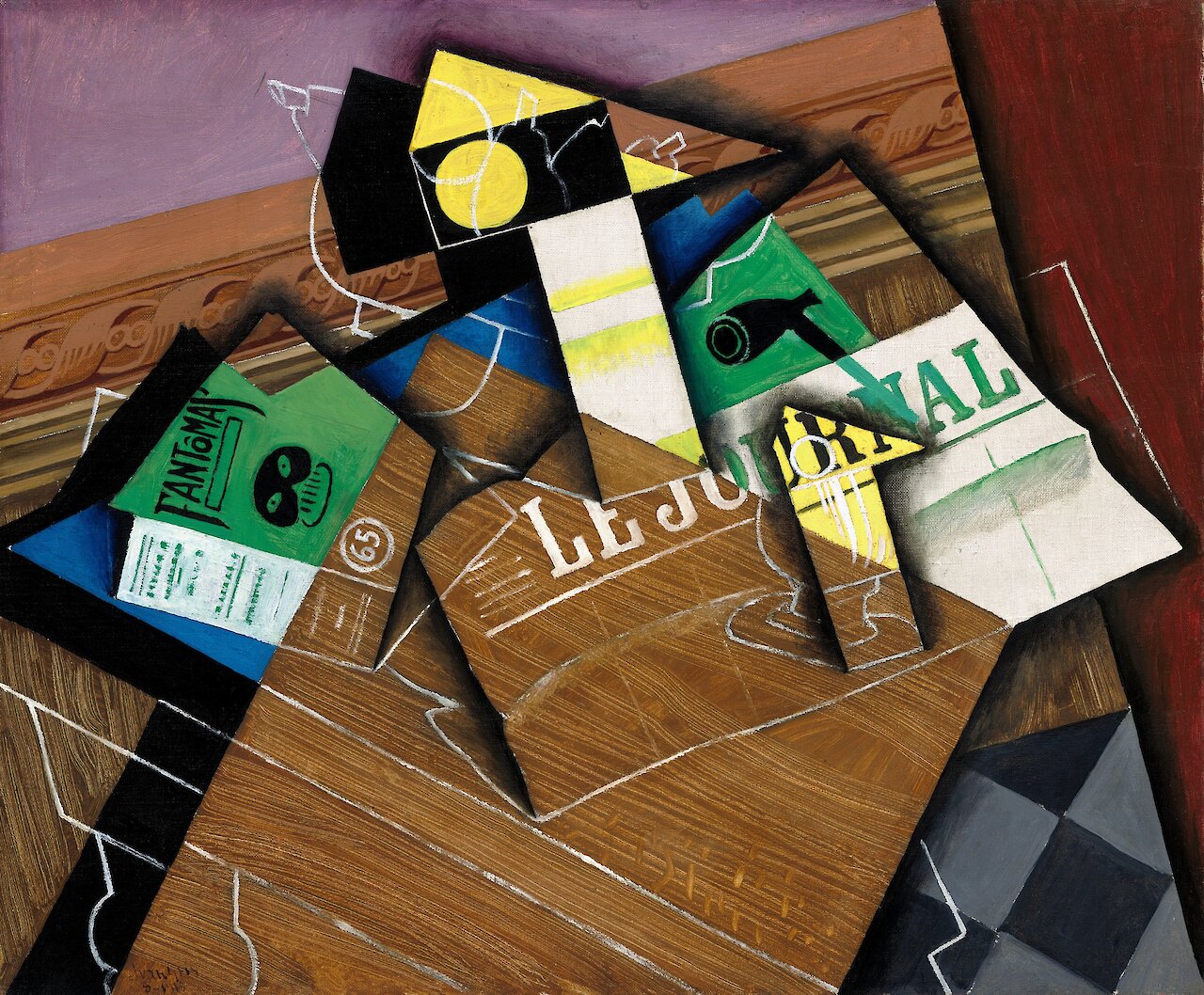
Fantômas
by Juan Gris, 1915
- Medium
- Oil on canvas
- Dimensions
- 59.8 x 73.3 cm (23 9/16 x 28 7/8 in)
- Credits
- Chester Dale Fund.
- Location
- National Gallery of Art
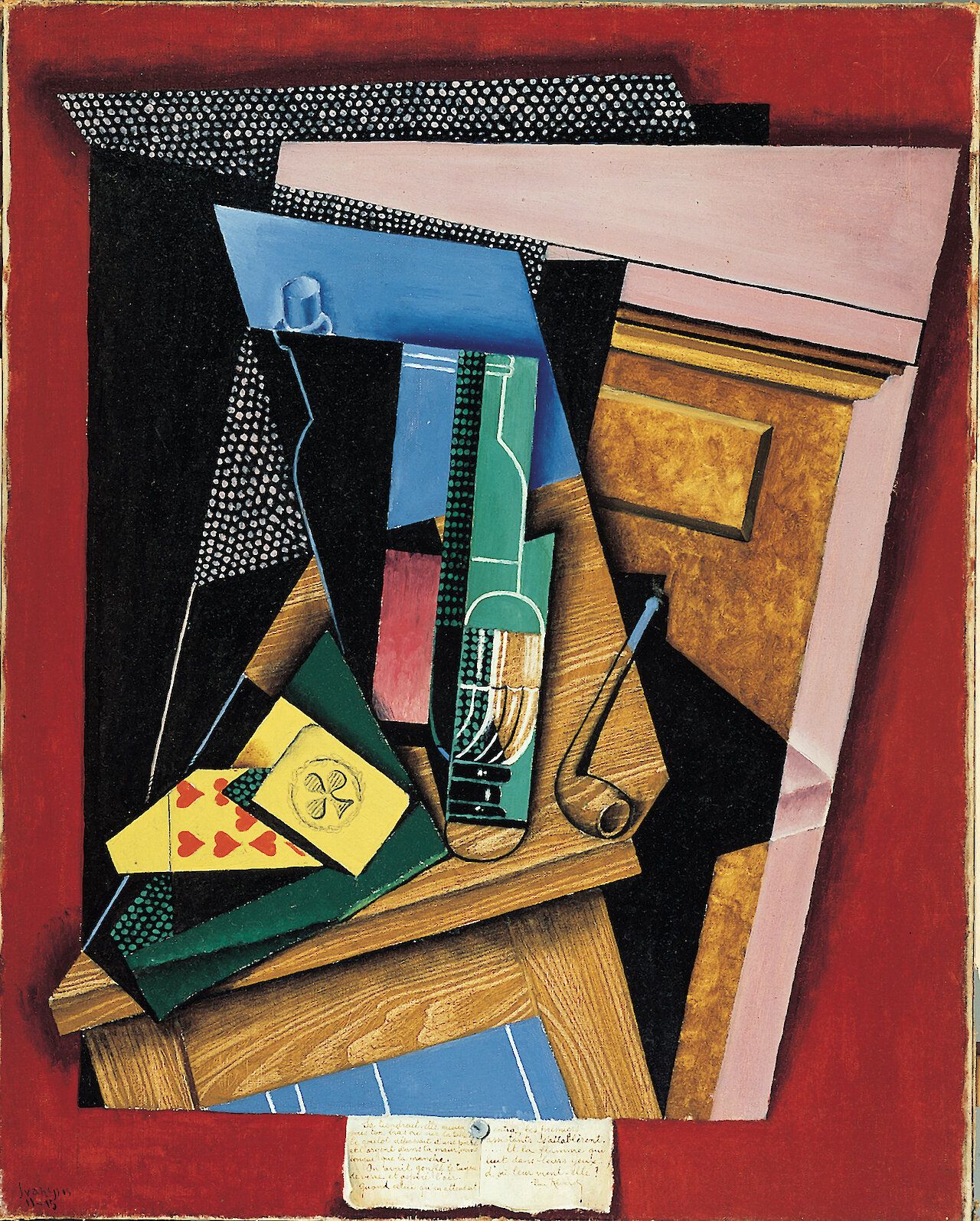
Still Life with a Poem
by Juan Gris, 1915
- Medium
- Oil on canvas
- Dimensions
- 31-3/4 x 25-1/2 in (80.6 x 64.8 cm)
- Credits
- Norton Simon Art Foundation
- Location
- Norton Simon Museum
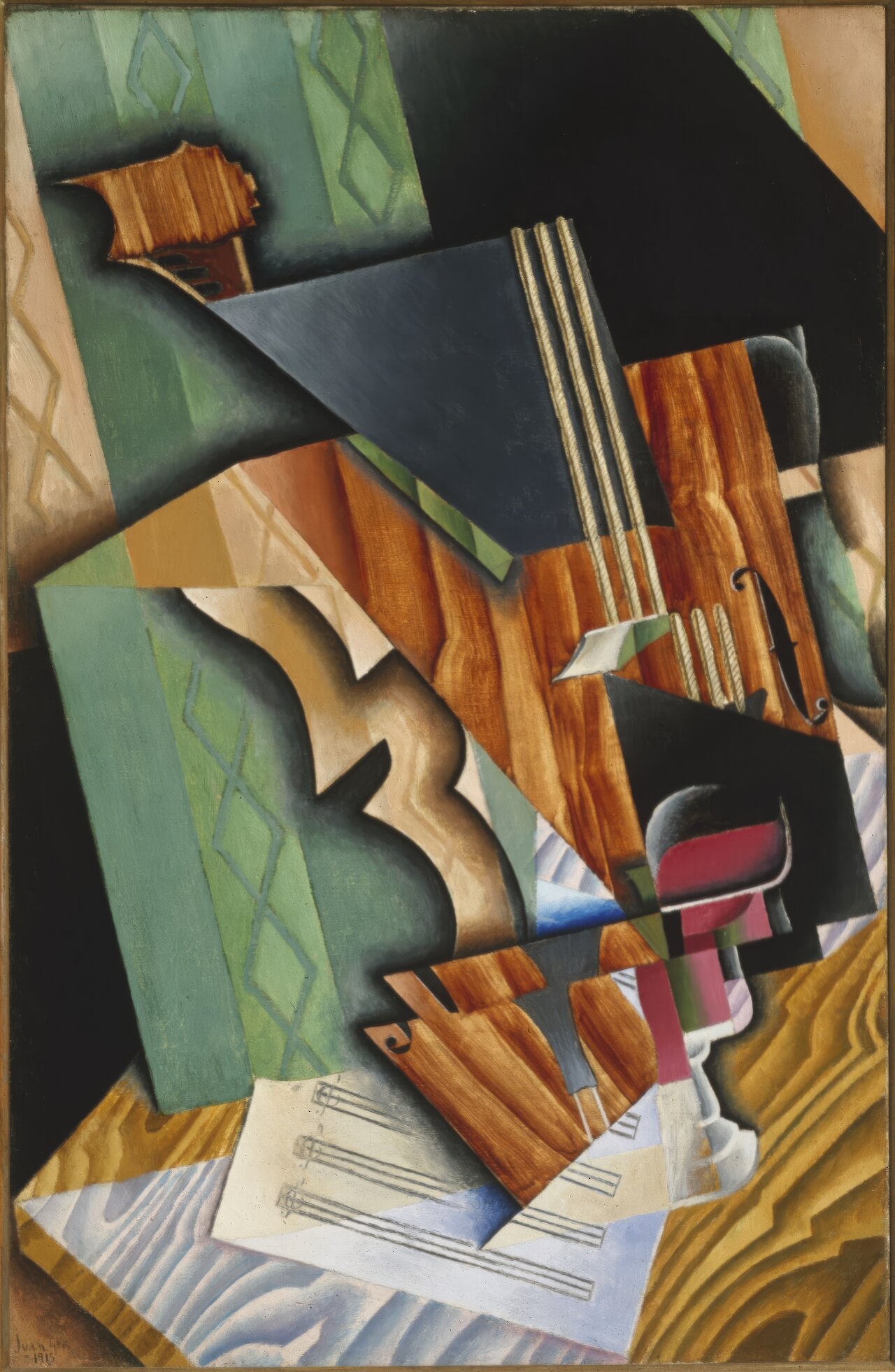
Violin and Glass
by Juan Gris, 1915
- Medium
- Oil on canvas
- Dimensions
- Sight: 91.44 x 59.69 cm (36 x 23 1/2 in)
- Credits
- Harvard Art Museums/Fogg Museum, Gift of Mr. and Mrs. Joseph Pulitzer, Jr.
- Location
- Harvard Art Museums
Herrera el Mozo, Francisco de
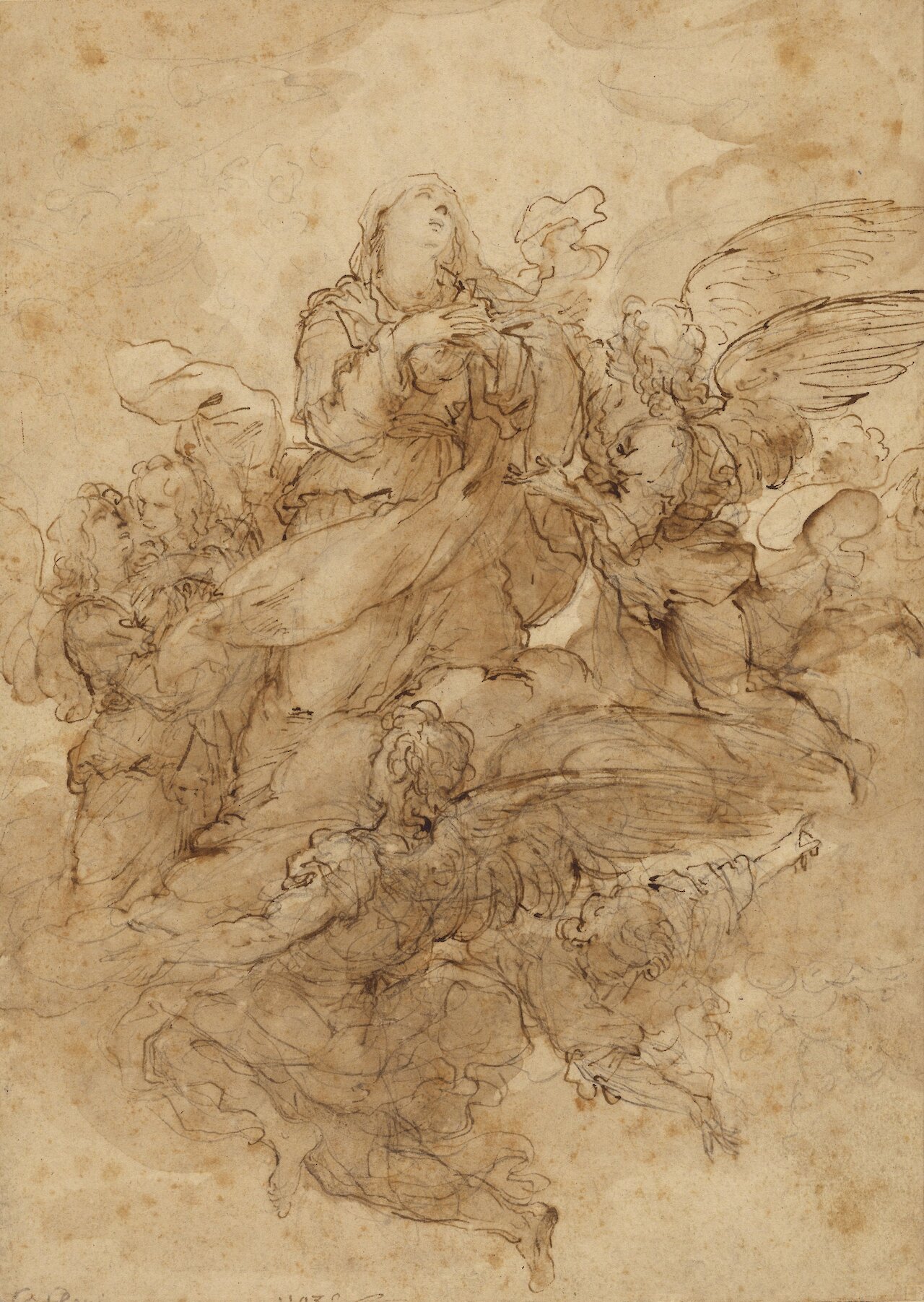
The Assumption of the Virgin
by Francisco de Herrera el Mozo, circa 1648–1653
- Medium
- Pen and brown ink, brown wash over black chalk
- Dimensions
- 30.6 × 21.7 cm (12 1/16 × 8 9/16 in)
- Notes
Through lively penwork, de Herrera imparted a sense of movement to the substantial figure of the Virgin and the stable, classical pyramid form of the group. The artist's fertile imagination worked quickly; after doing some sketching with black chalk, he applied free-flowing, crisscrossing, tangled threads of ink ranging from the dark squiggles of the Virgin's drapery to the light tracings on the angels' robes below. The fluent washes add drama to the composition.
- Location
- J. Paul Getty Museum
Juan van der, Hamen y León
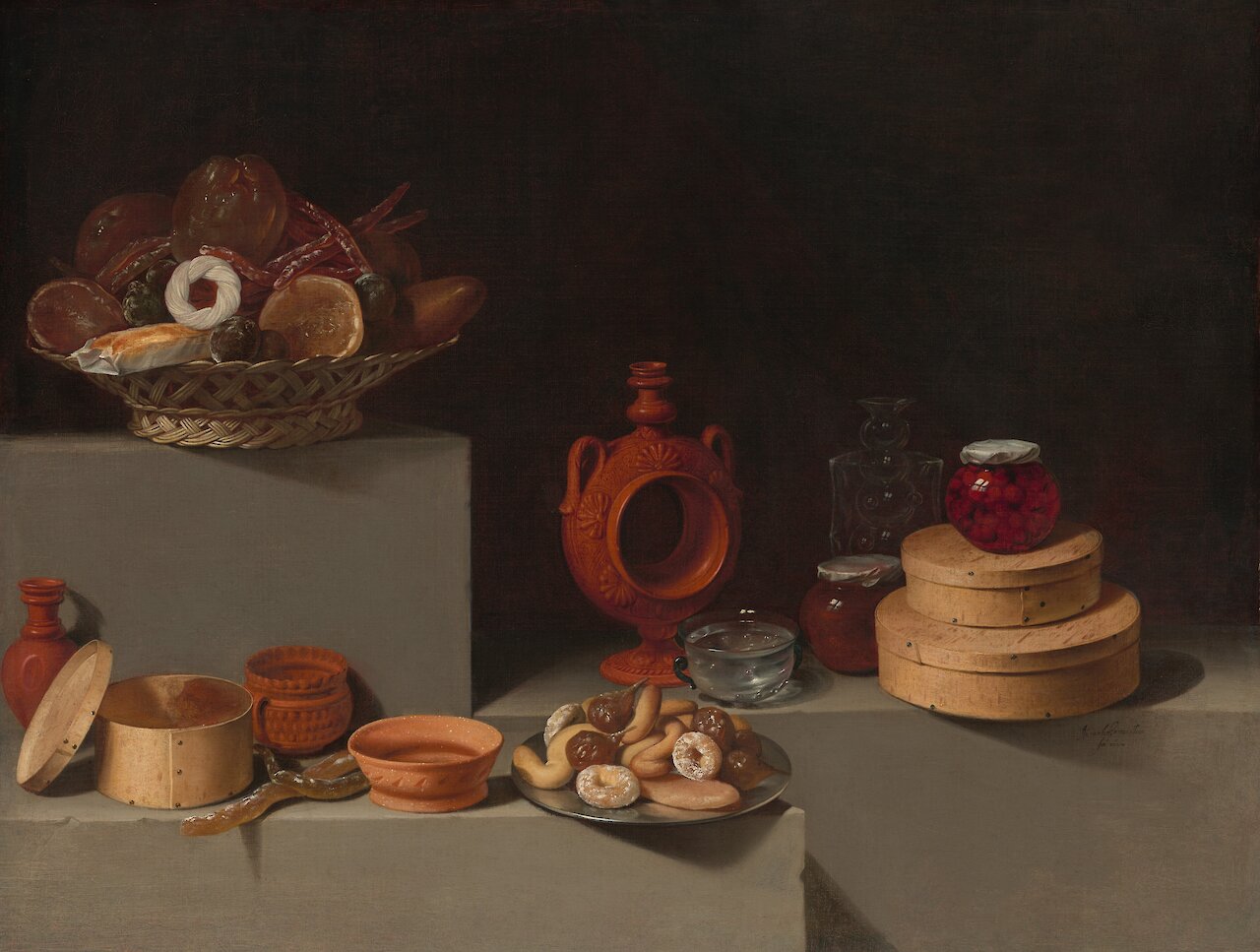
Still Life with Sweets and Pottery
by Juan van der Hamen y León, 1627
- Medium
- Oil on canvas
- Dimensions
- 84.5 x 112.7 cm (33 1/4 x 44 3/8 in)
- Credits
- Samuel H. Kress Collection.
- Location
- National Gallery of Art
Juliá, Eusebio
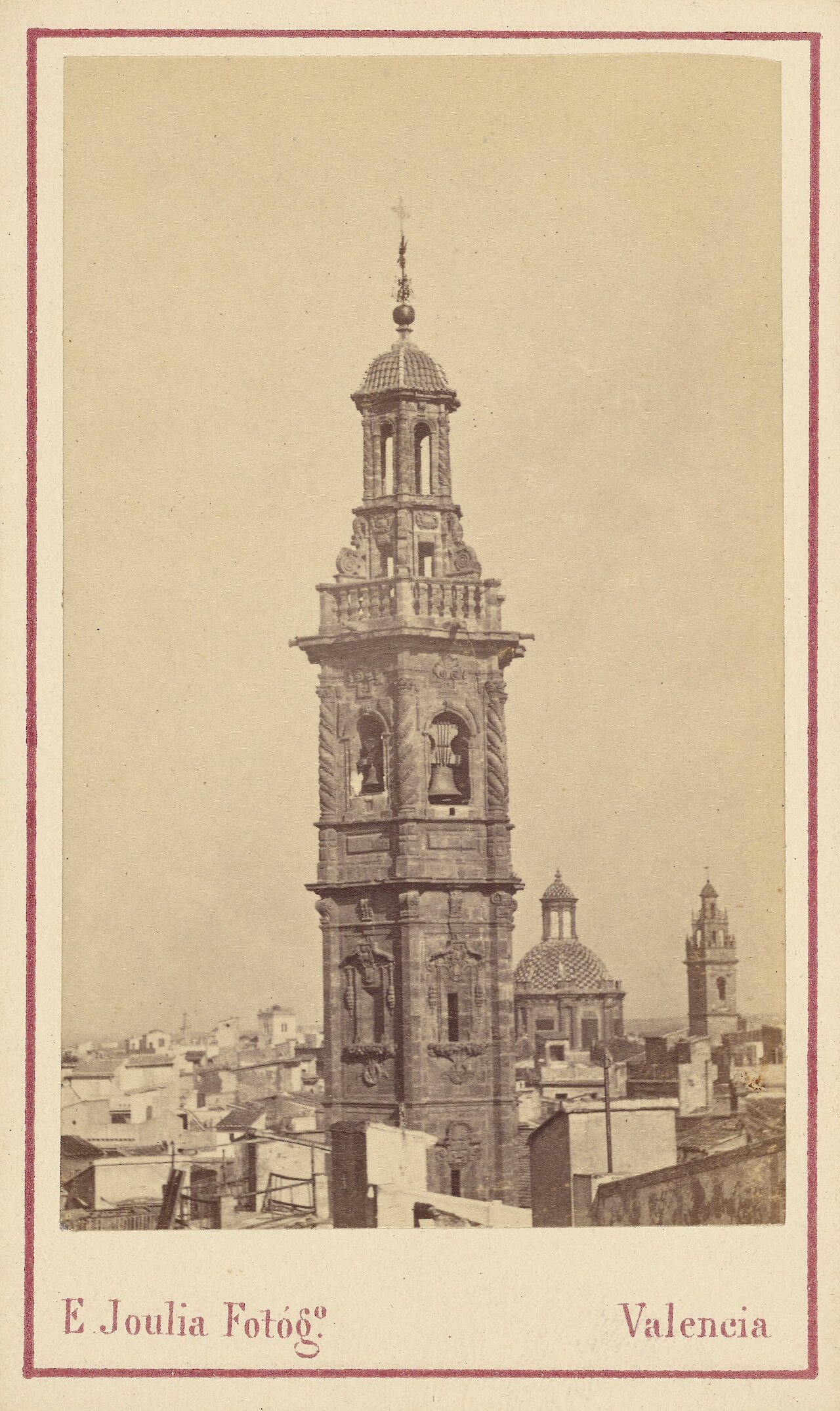
Leonardo, José
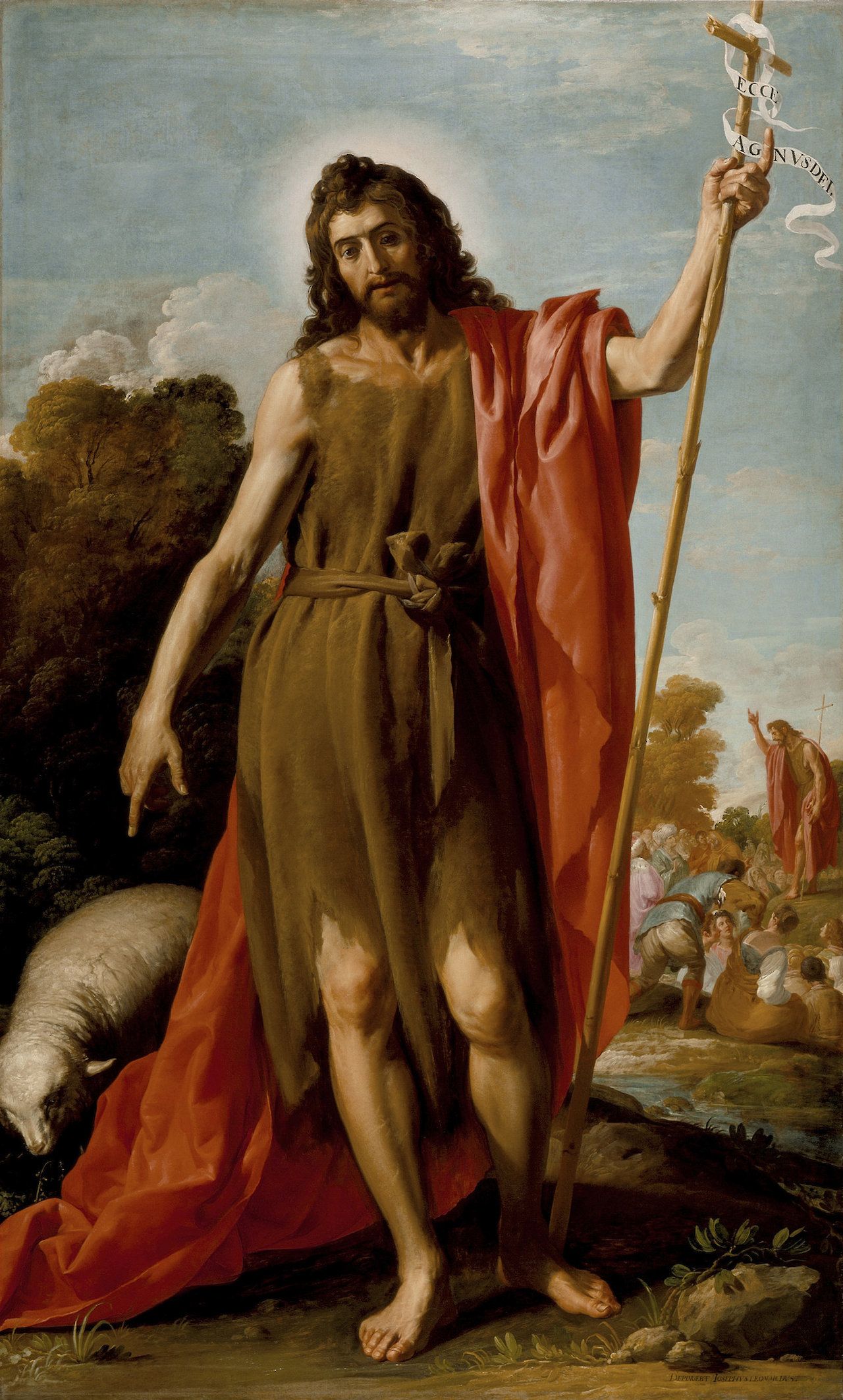
Saint John the Baptist in the Wilderness
by José Leonardo, circa 1635
- Medium
- Oil on canvas
- Dimensions
- 77 × 46 3/4 in (195.58 × 118.75 cm)
- Location
- LACMA
López y Portaña, Vicente
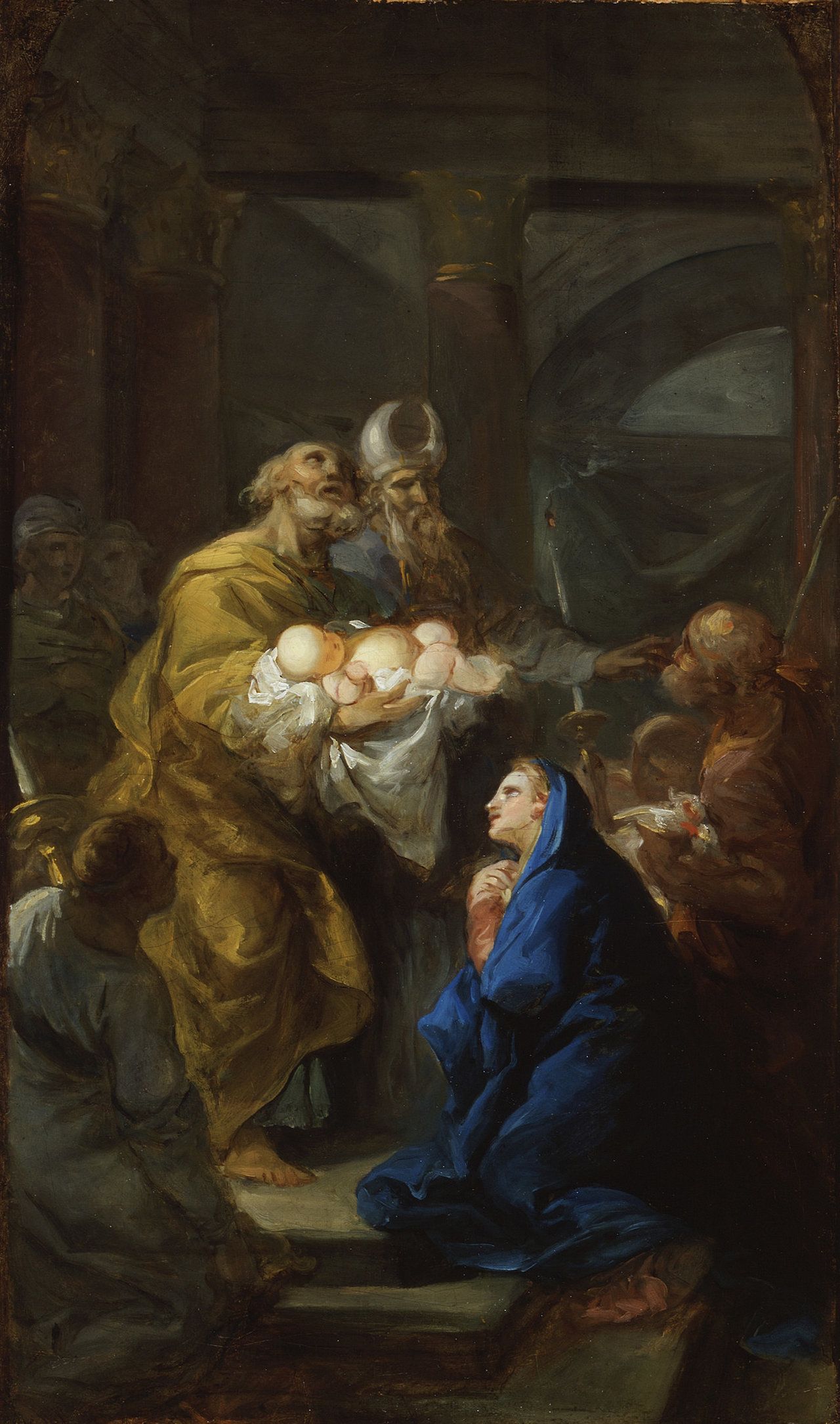
Presentation of Christ in the Temple
by Vicente López y Portaña, circa 1745–1746
- Medium
- Oil on canvas
- Dimensions
- 22 × 15 in (55.88 × 38.1 cm)
- Location
- LACMA
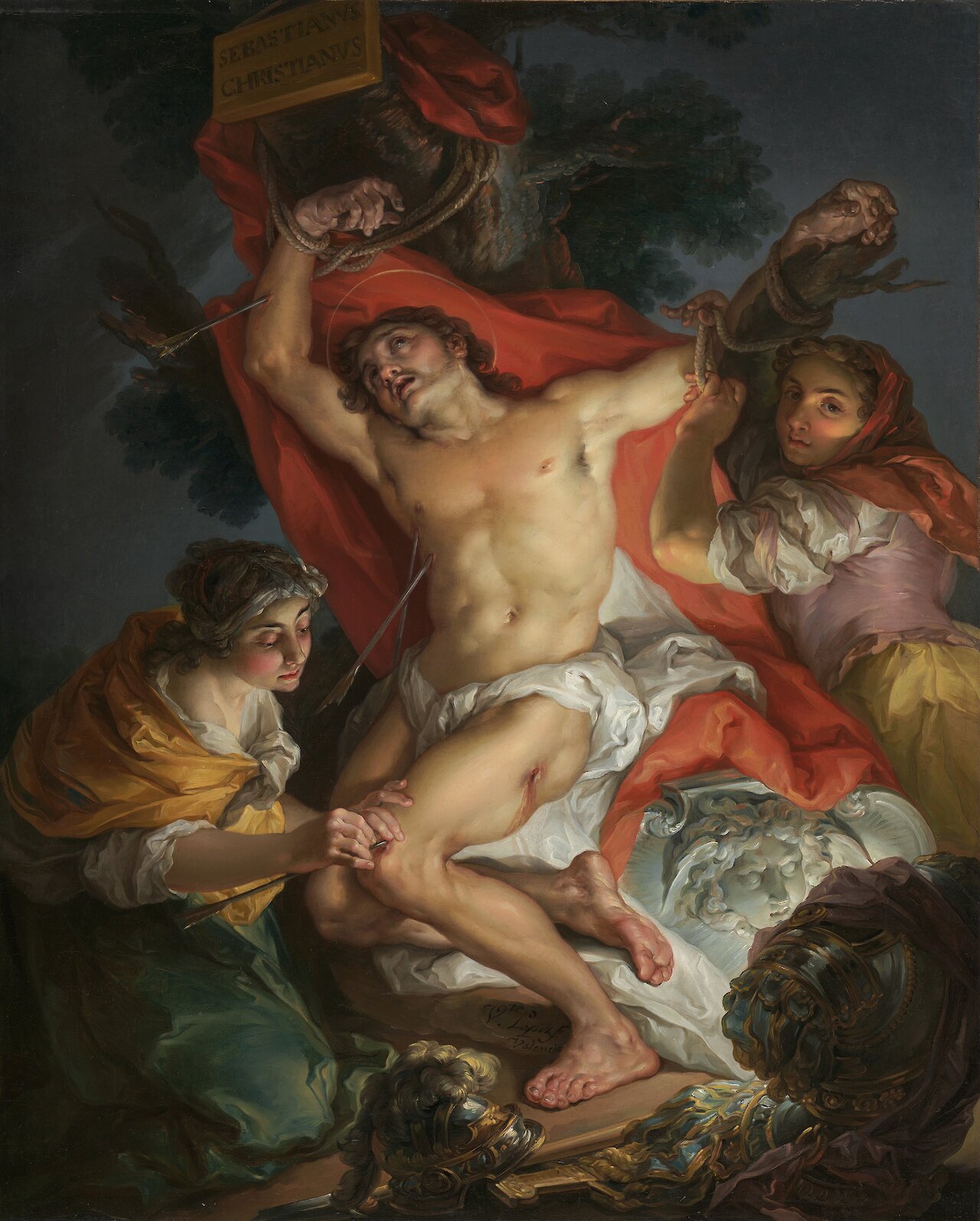
Saint Sebastian Tended by Saint Irene
by Vicente López y Portaña, 1795–1800
- Medium
- Oil on canvas
- Dimensions
- Unframed: 78.7 × 64.5 cm (31 × 25 3/8 in); framed: 91.4 × 63.8 × 4.8 cm (36 × 25 1/8 × 1 7/8 in)
- Credits
- Gift of Stanley Moss in honor of John Walsh
- Notes
This painting illustrates the Roman widow Irene nursing Saint Sebastian back to health after he was discovered to be a Christian and shot with arrows by Roman archers. Writhing in pain, Saint Sebastian looks heavenward as Saint Irene pulls arrows from his pierced body. Vicente López y Portaña dynamically composed the figure of Sebastian, with one arm tied above his head and his other arm held by an attendant, in order to more clearly display the wounds on his upper body and to allude to the martyrdom of Christ. Sebastian's bent leg reveals the bleeding gash from which Irene has already removed one arrow. As she leans toward Sebastian's knee, she carefully pulls the saint's flesh in order to extract a second arrow. In the foreground, the depiction of the armor and weapons Sebastian wore as a military captain signals that this event occurred in ancient Rome.
López y Portaña's luscious palette and creamy application of paint contrast with the drama and emotion of this religious story. Like Andrea Lilio's Figures Tending to the Wounded Saint Sebastian, this painting differs from representations that show the Saint bound to a tree or pillar, moments after the attack.
- Location
- J. Paul Getty Museum
Madrazo y Garreta, Raimundo de
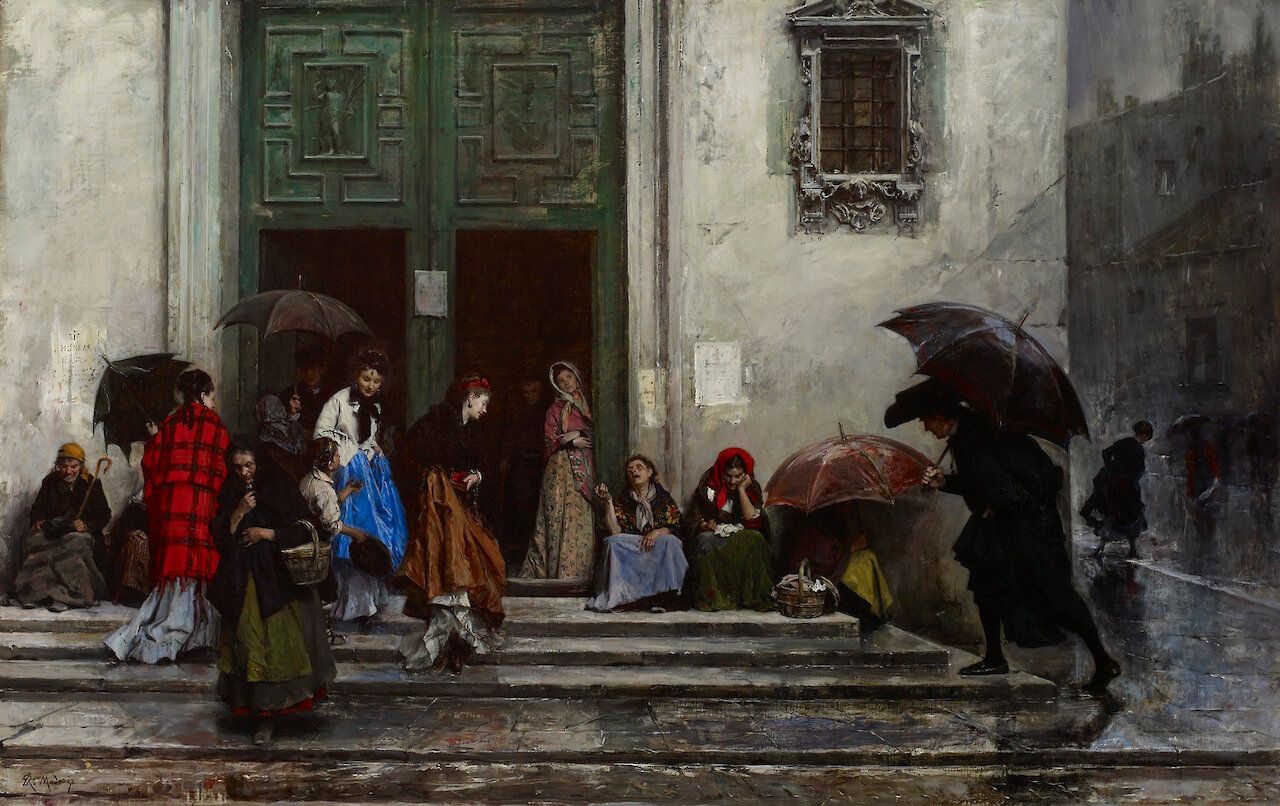
Coming Out of Church
by Raimundo de Madrazo y Garreta, circa 1875
- Medium
- Oil on canvas
- Dimensions
- 25 3/16 x 39 3/8 in (64 x 100.01 cm); Framed: 37 13/16 × 51 15/16 × 4 15/16 in (96 × 132 × 12.5 cm)
- Credits
- Acquired by William T. Walters, 1892
- Location
- Walters Art Museum
Maella, Mariano Salvador
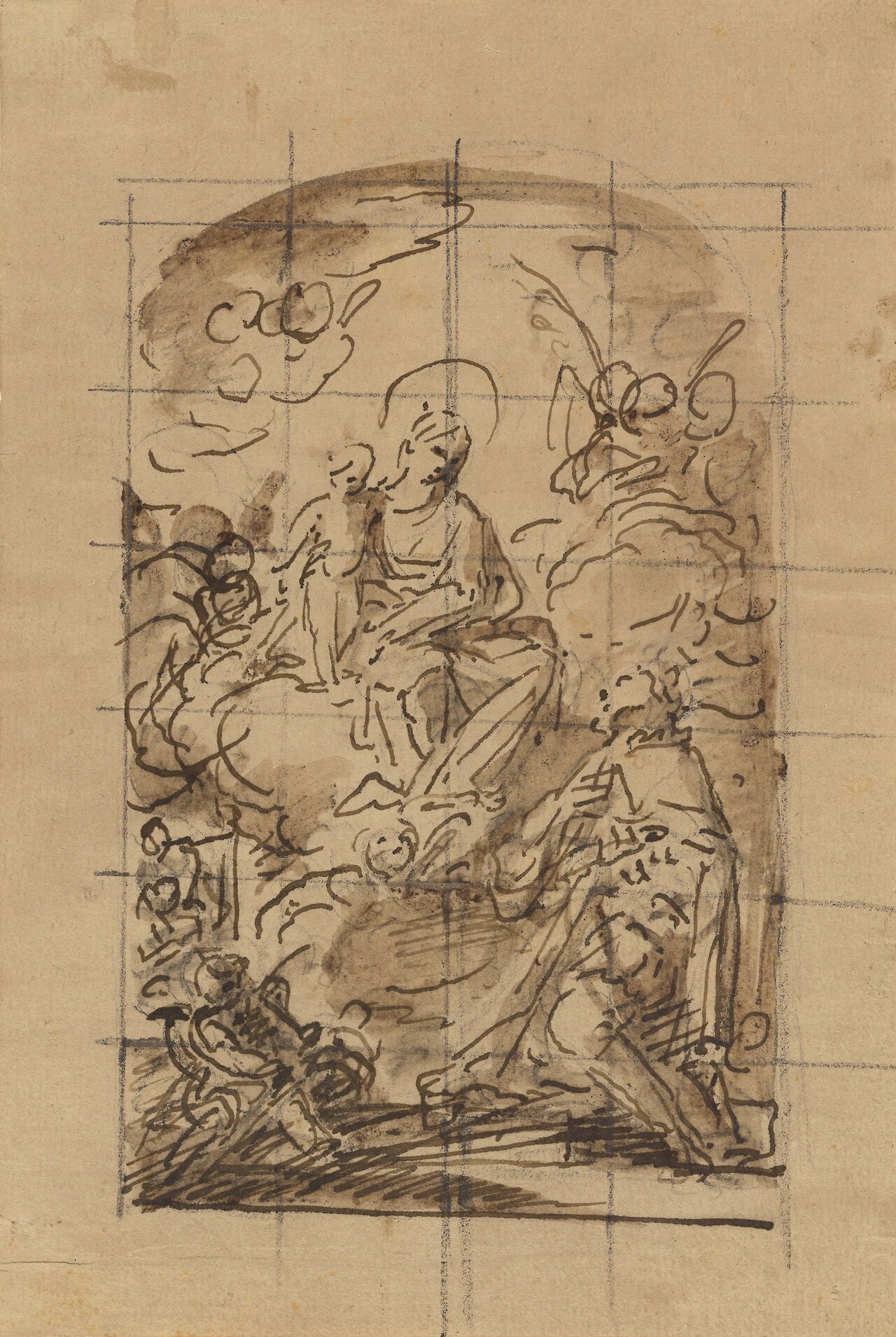
The Apparition of the Virgin and Child to Saint Louis of France
by Mariano Salvador Maella, circa 1780–1790
- Medium
- Pen and brown ink and brown wash over black chalk; squared in black chalk
- Dimensions
- 21 × 14.4 cm (8 1/4 × 5 11/16 in)
- Notes
Saint Fernando gazes upward, paying homage to a vision of the Virgin Mary and Christ Child floating on a pillow of clouds surrounded by winged putti. The arched top and the squaring suggest that the artist planned a painted altarpiece.
The quick, loose strokes merely outlining the figures and the broadly applied wash alluding to their volume indicate that this preliminary drawing was made to work out the placement of the various characters. While the artist focused on the poses and gestures of the Virgin, Child, and saint, he ignored other, more intricate details. He simply suggested Jesus' features with a small dot for his eye and a single line indicating hair. Simple circles and arched lines suggest the heads and wings of the putti.
- Location
- J. Paul Getty Museum
Maestro Bartolomé
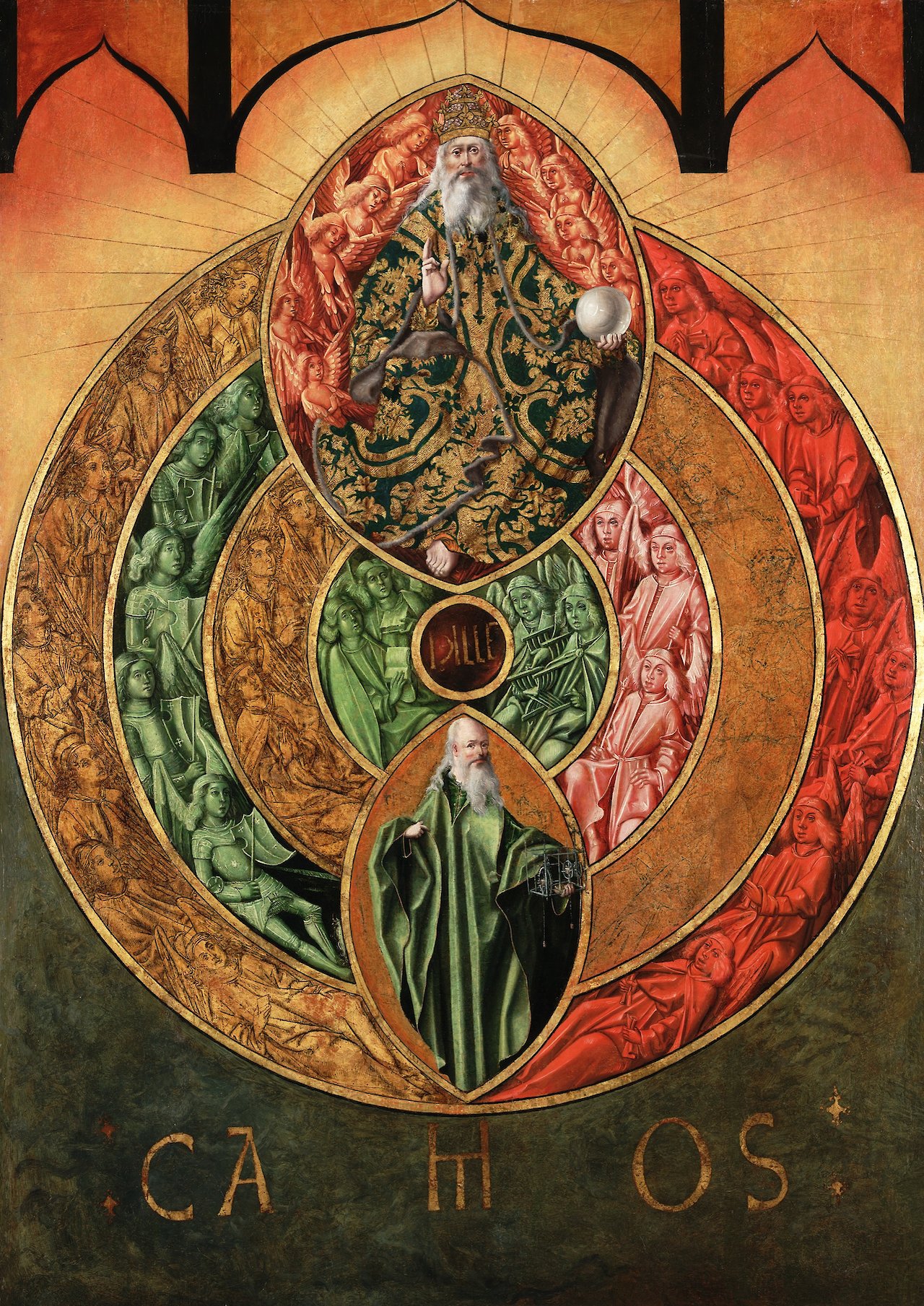
Chaos
by Maestro Bartolomé, circa 1493
- Medium
- Oil on panel
- Dimensions
- 60.7 x 43.7 in
- Credits
- University of Arizona Museum of Art, Tucson, Arizona, Gift of Samuel H. Kress Foundation, 1961.013.030
- Location
- University of Arizona Museum of Art
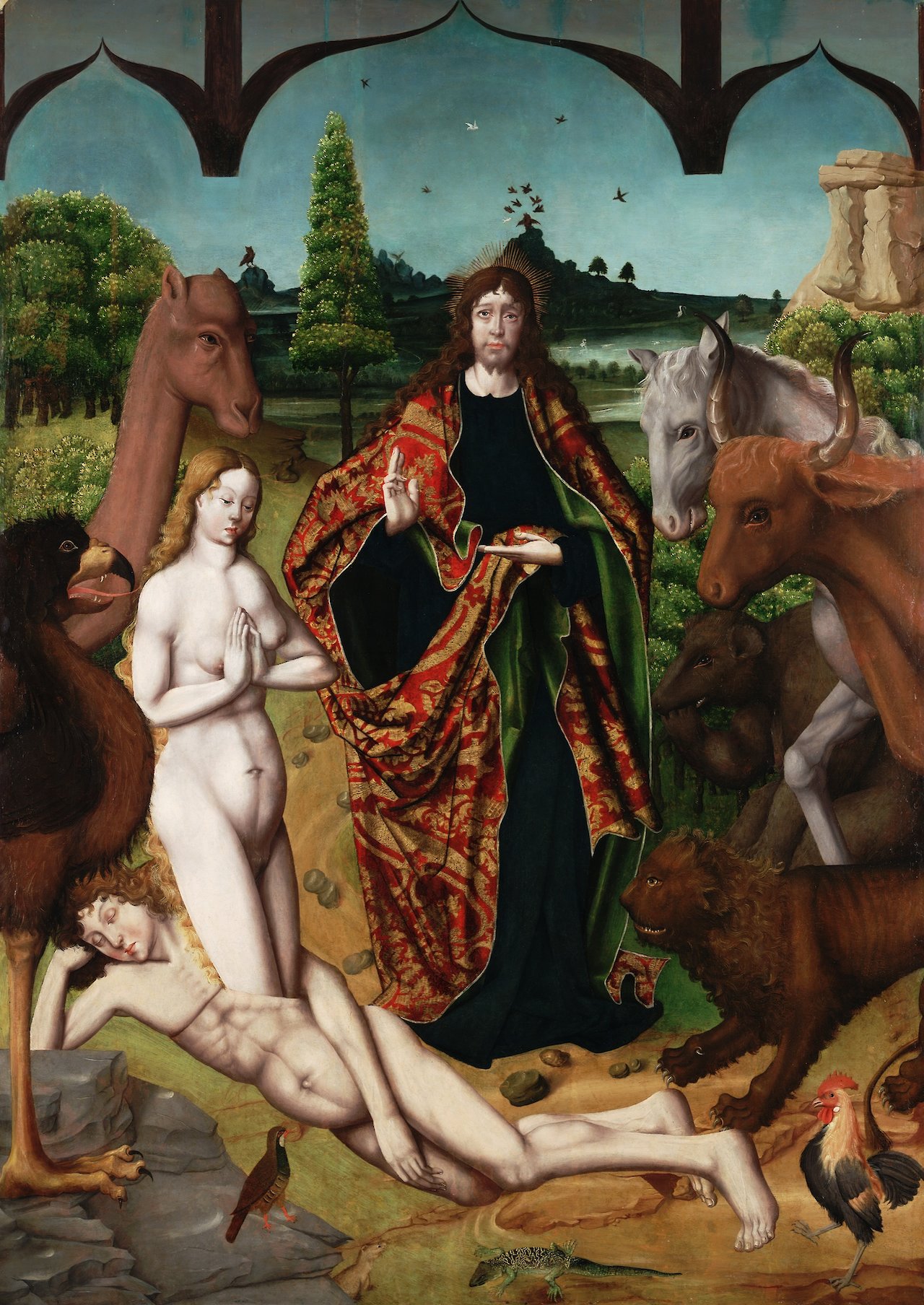
The Creation of Eve
by Maestro Bartolomé, circa 1493
- Medium
- Oil on panel
- Dimensions
- 60.9 x 43.4 in
- Credits
- University of Arizona Museum of Art, Tucson, Arizona, Gift of Samuel H. Kress Foundation, 1961.013.031
- Location
- University of Arizona Museum of Art
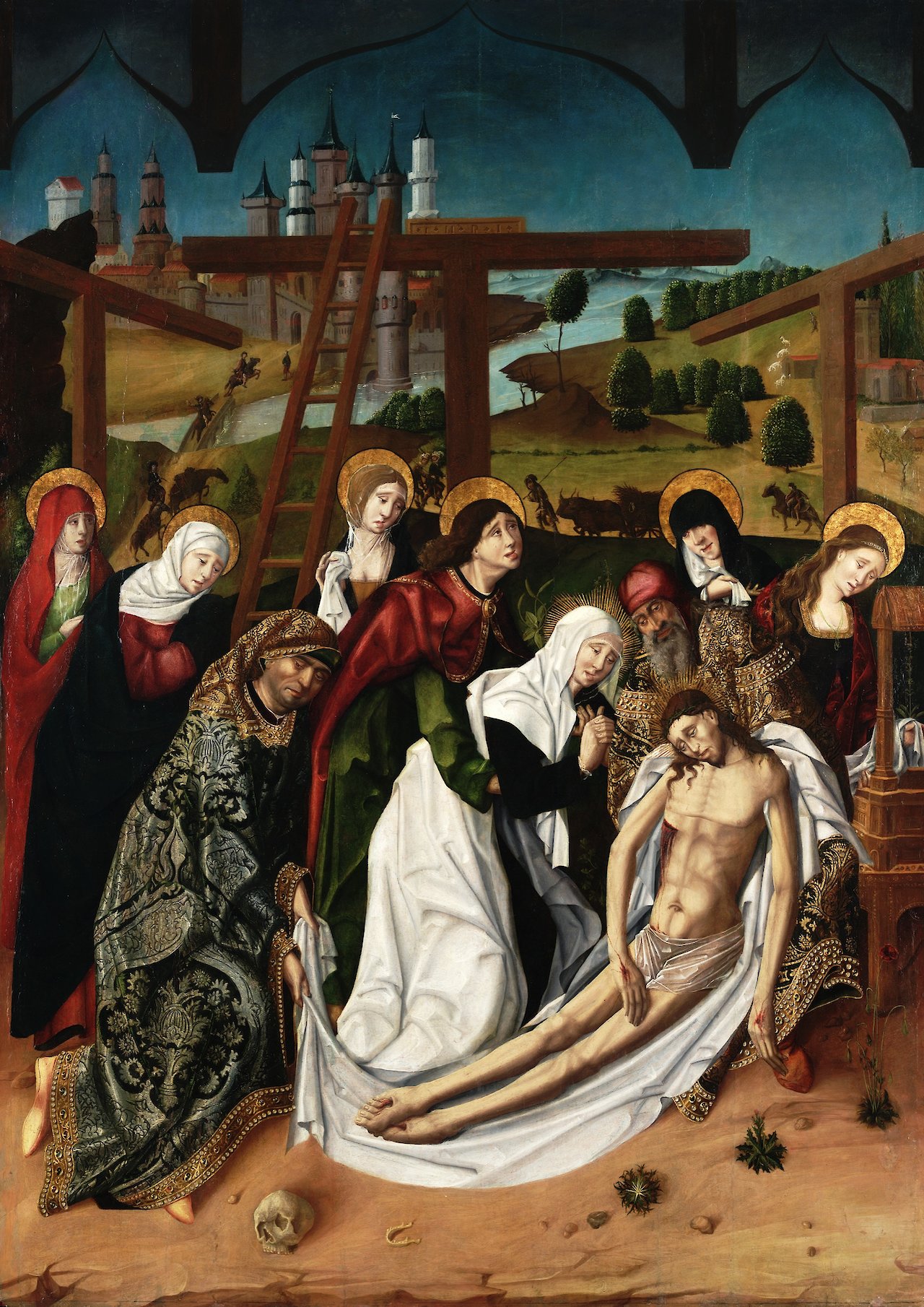
The Deposition
by Maestro Bartolomé, circa 1480–1488
- Medium
- Oil on panel
- Dimensions
- 62 x 44.2 in
- Credits
- University of Arizona Museum of Art, Tucson, Arizona, Gift of Samuel H. Kress Foundation, 1961.013.050
- Location
- University of Arizona Museum of Art
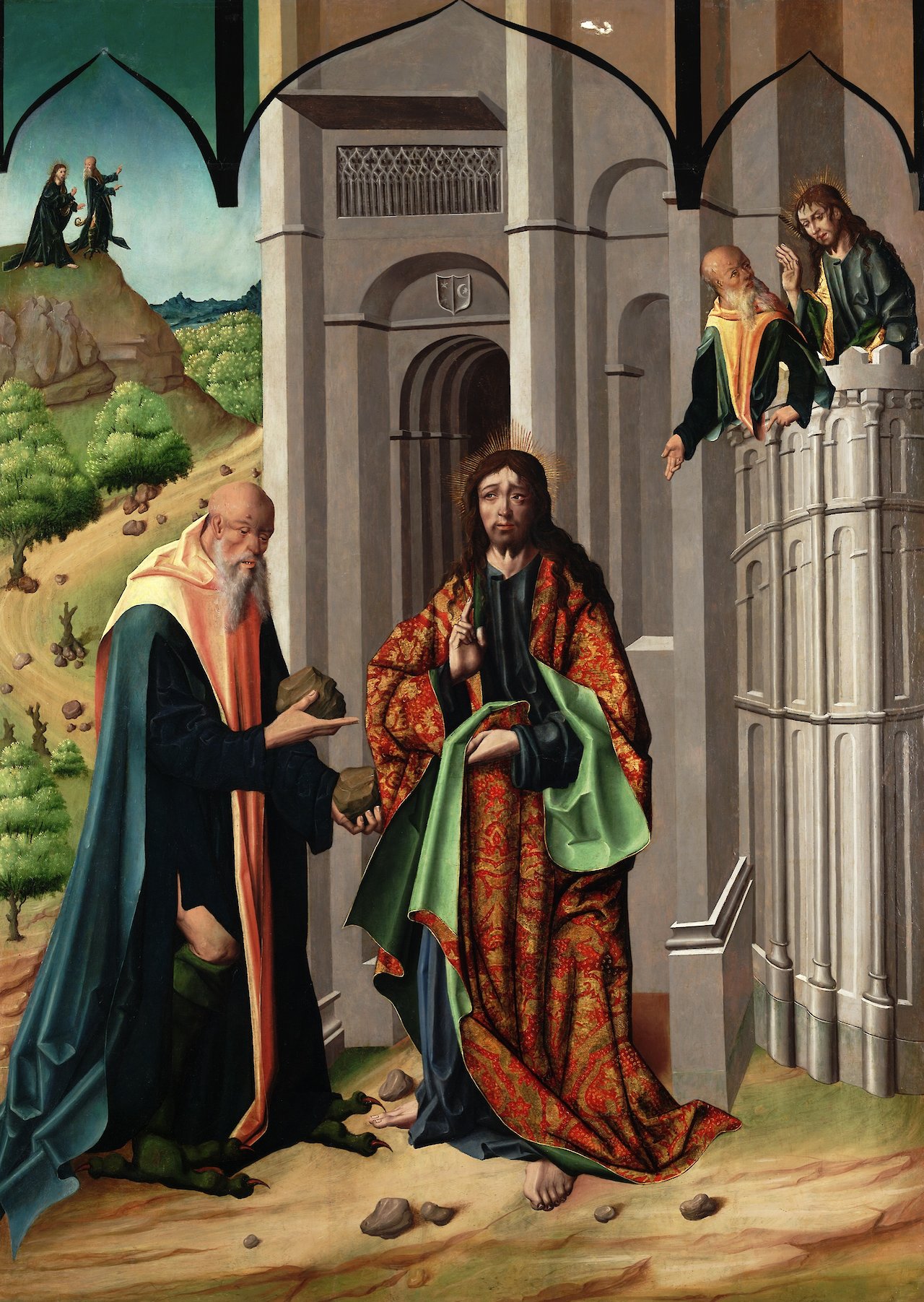
The Temptations of Christ
by Maestro Bartolomé, circa 1493
- Medium
- Oil on panel
- Dimensions
- 61 x 43.5 in
- Credits
- University of Arizona Museum of Art, Tucson, Arizona, Gift of Samuel H. Kress Foundation, 1961.013.034
- Location
- University of Arizona Museum of Art
Maíno, Juan Bautista
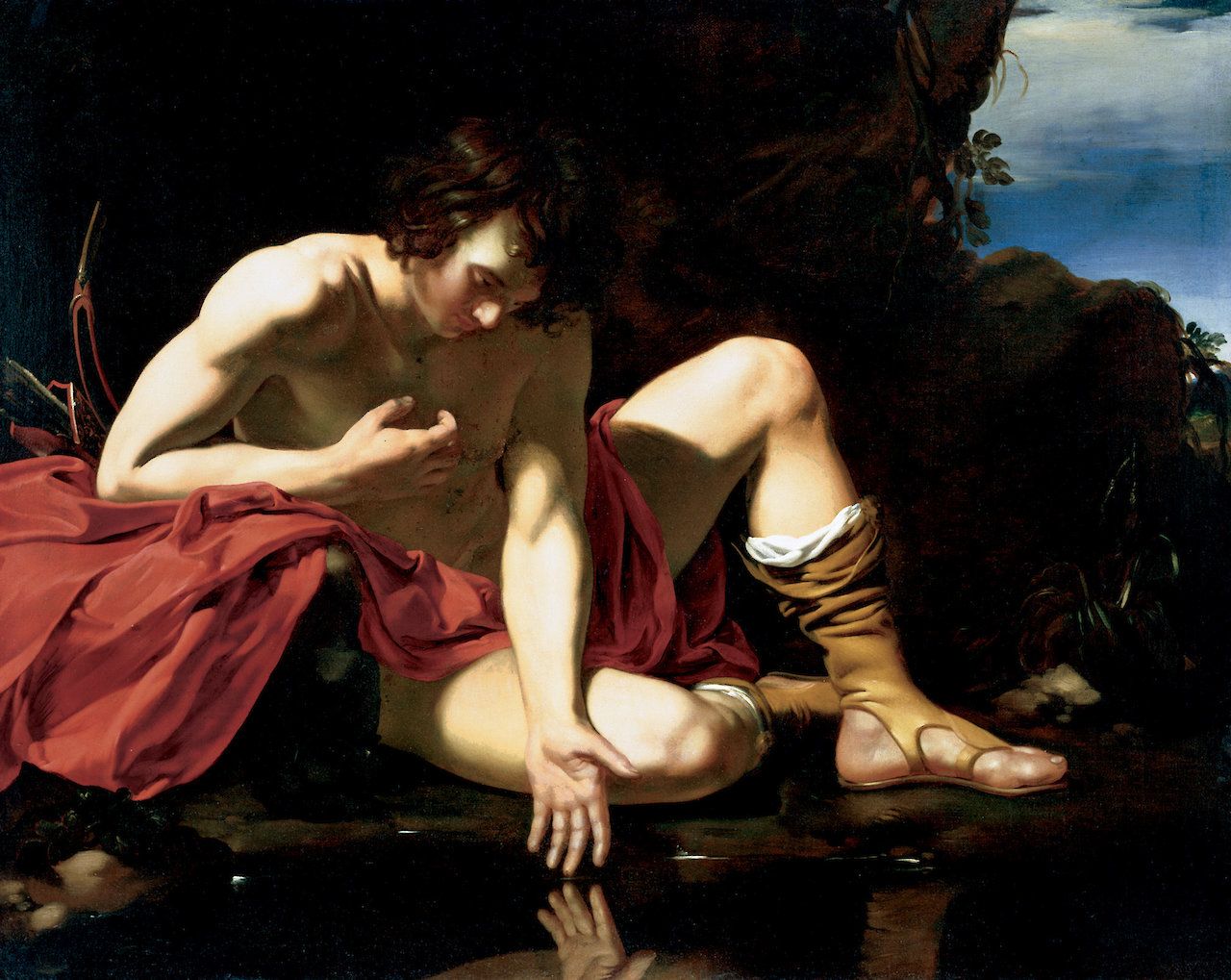
Narcissus
by Juan Bautista Maíno, circa 1600–1610
- Medium
- Oil on canvas
- Location
- John and Mable Ringling Museum of Art
Martorell, Bernat
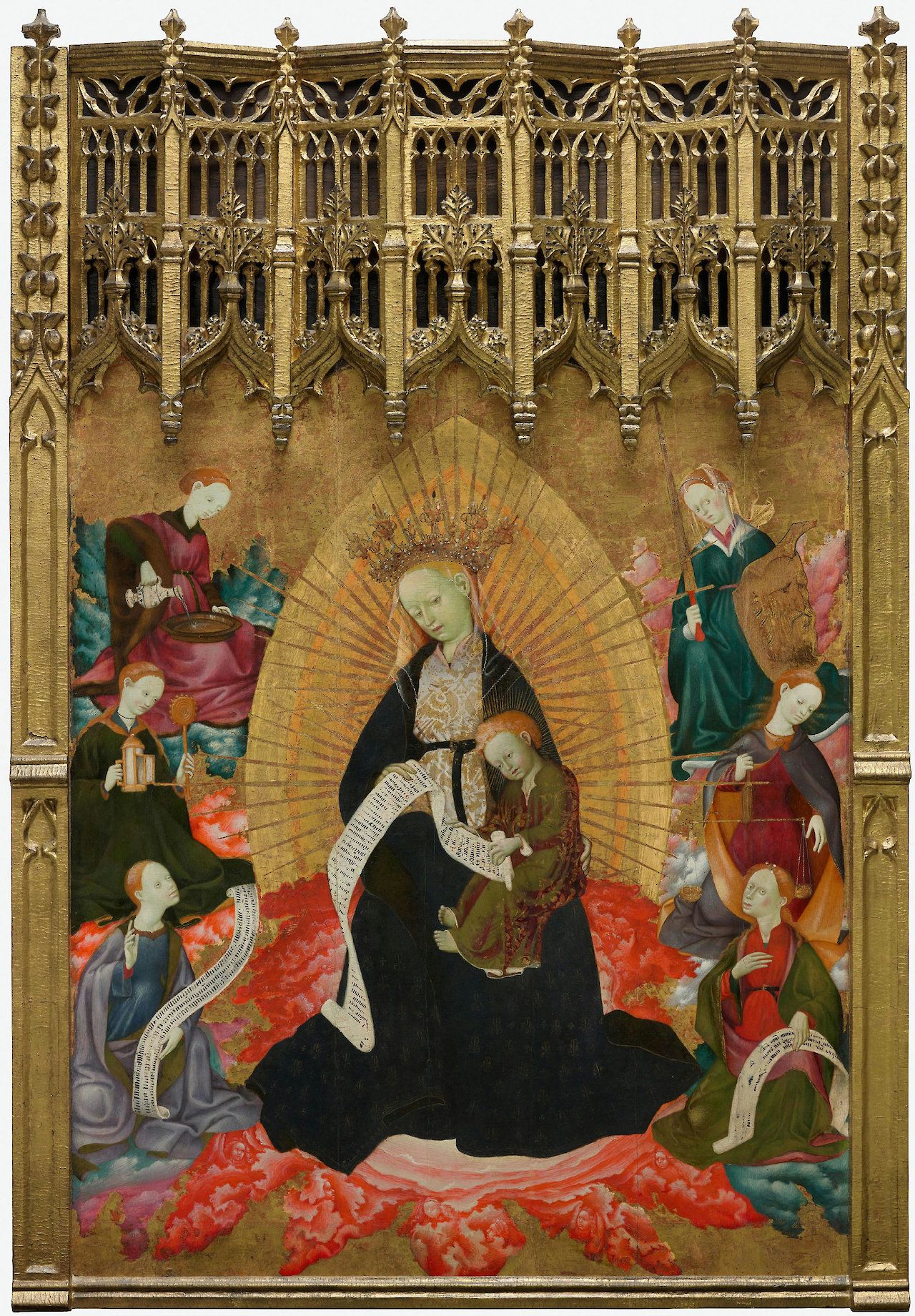
Enthroned Virgin and Child with Personifications of the Virtues of Temperance, Fortitude, Justice, and Prudence
by Bernat Martorell, circa 1434–1437
- Medium
- Egg tempera and tooled gold on oak panel
- Dimensions
- 60 3/4 × 42 1/4 in (154.3 × 107.3 cm)
- Credits
- John G. Johnson Collection, 1917
- Location
- Philadelphia Museum of Art
Massari, Alejandro
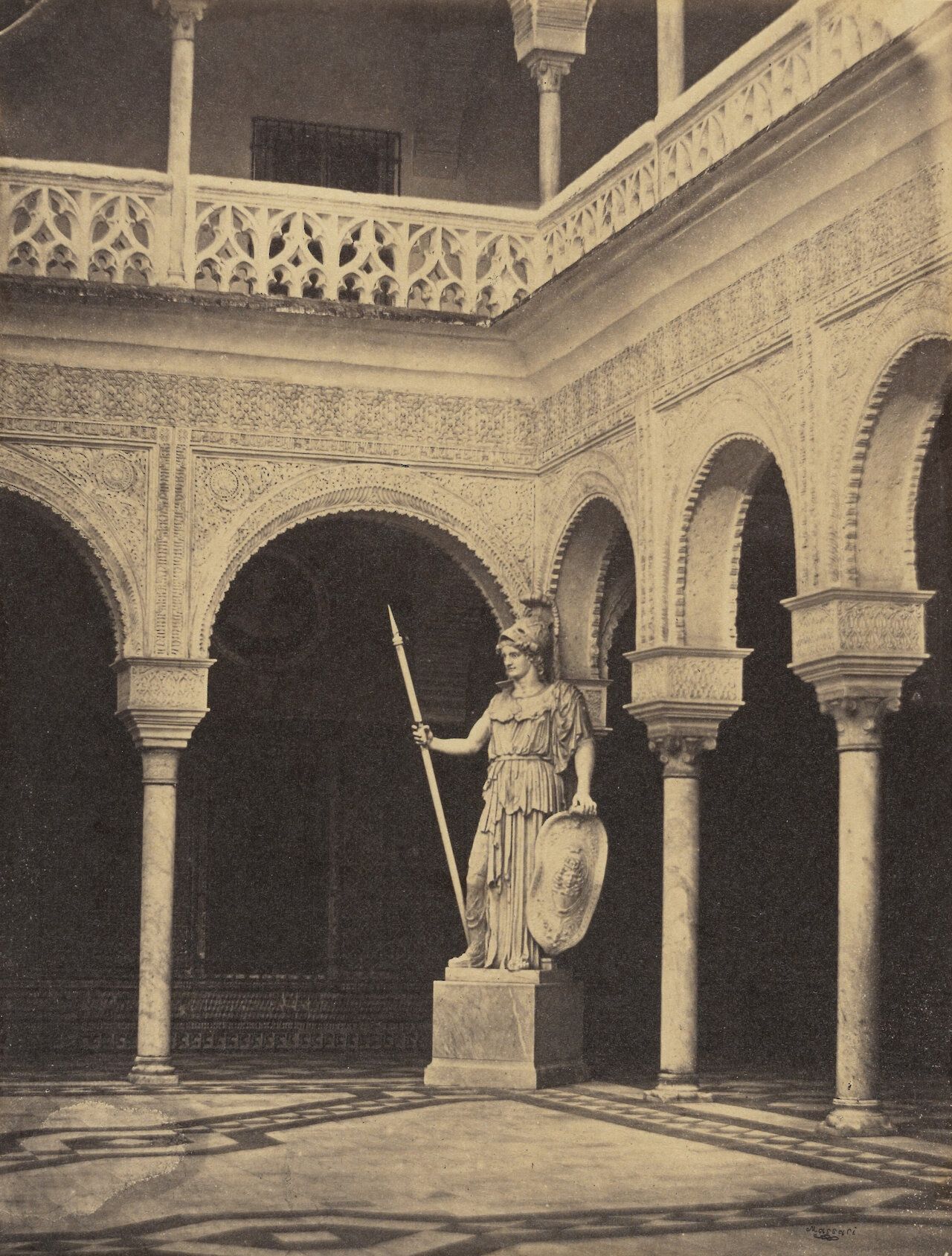
Sevilla. Del patio de la Casa de Pilatos
by Alejandro Massari, circa 1857
- Medium
- Albumen silver print
- Dimensions
- Image: 20.5 × 15.7 cm (8 1/16 × 6 3/16 in); mount: 41.8 × 32.4 cm (16 7/16 × 12 3/4 in)
- Notes
Interior courtyard with a statue of a figure holding a spear and shield on a pedestal. The courtyard has rows of arches and an ornately designed balcony on the second level.
- Location
- J. Paul Getty Museum
Masson, Luis Leon
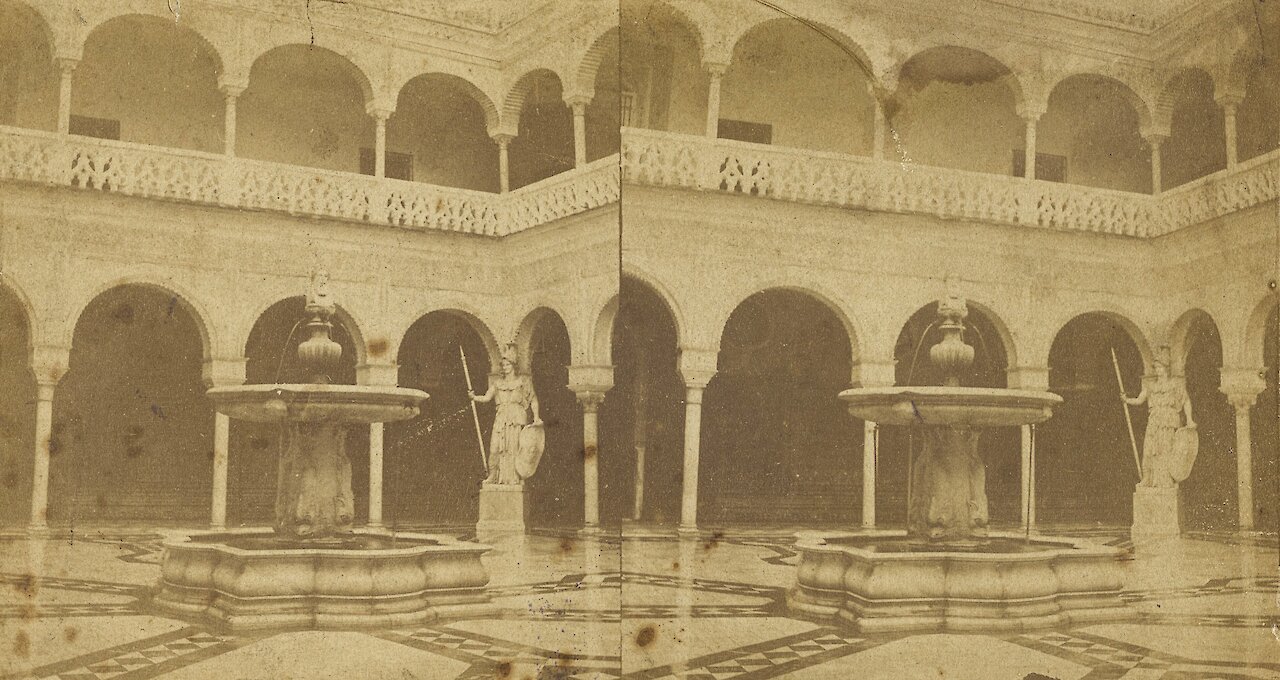
Sevilla, Casa de Pilatos Patio
by Luis Leon Masson, circa 1860–1870
- Medium
- Albumen silver print
- Notes
Gift of Weston J. and Mary M. Naef
- Location
- J. Paul Getty Museum
Master of Osma
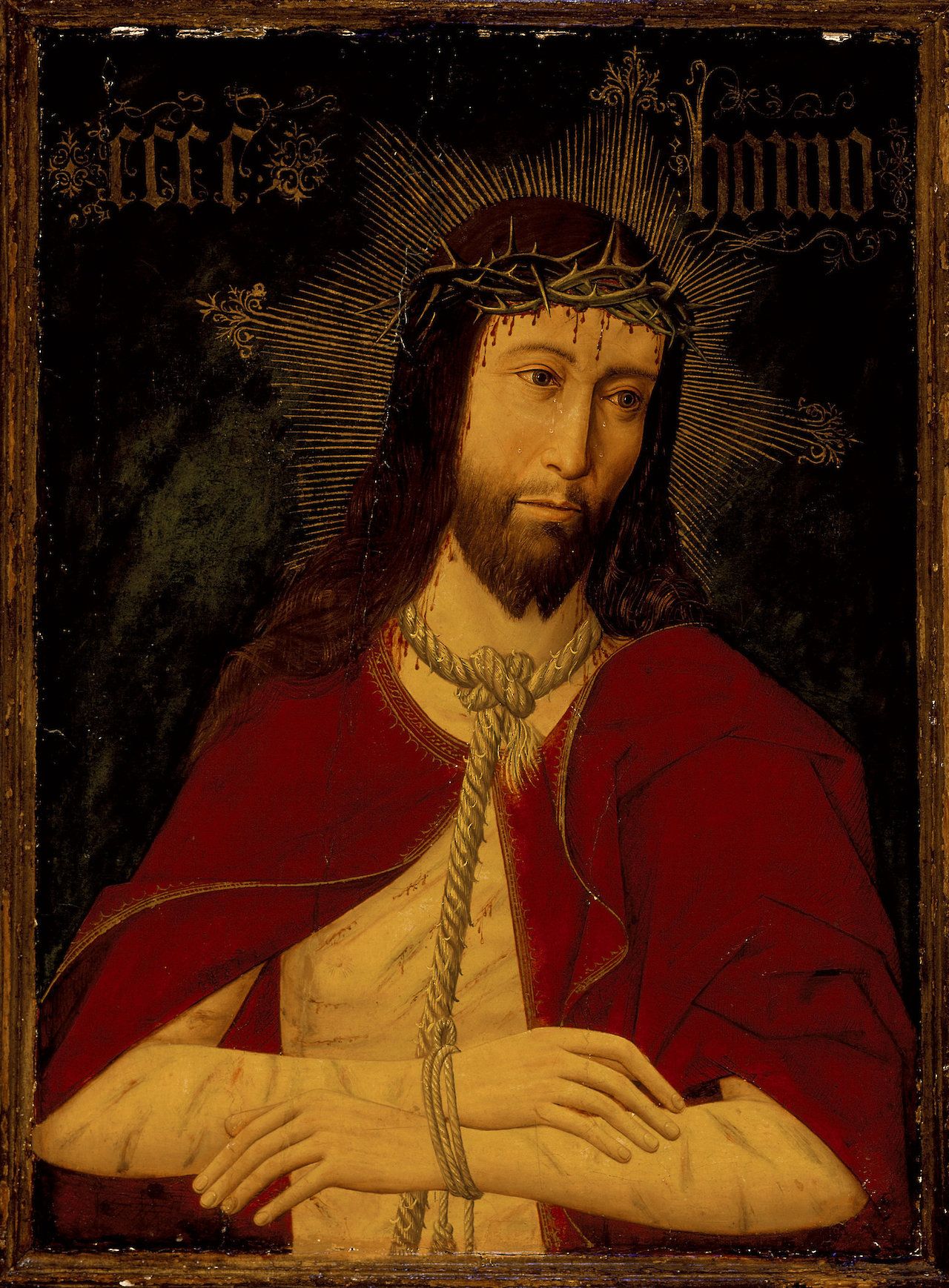
Christ with the Crown of Thorns
by Master of Osma, circa 1500
- Medium
- Tempera on panel
- Dimensions
- 29 × 24 1/2 in (73.66 × 62.23 cm)
- Location
- LACMA
Master of Rubielos de Mora
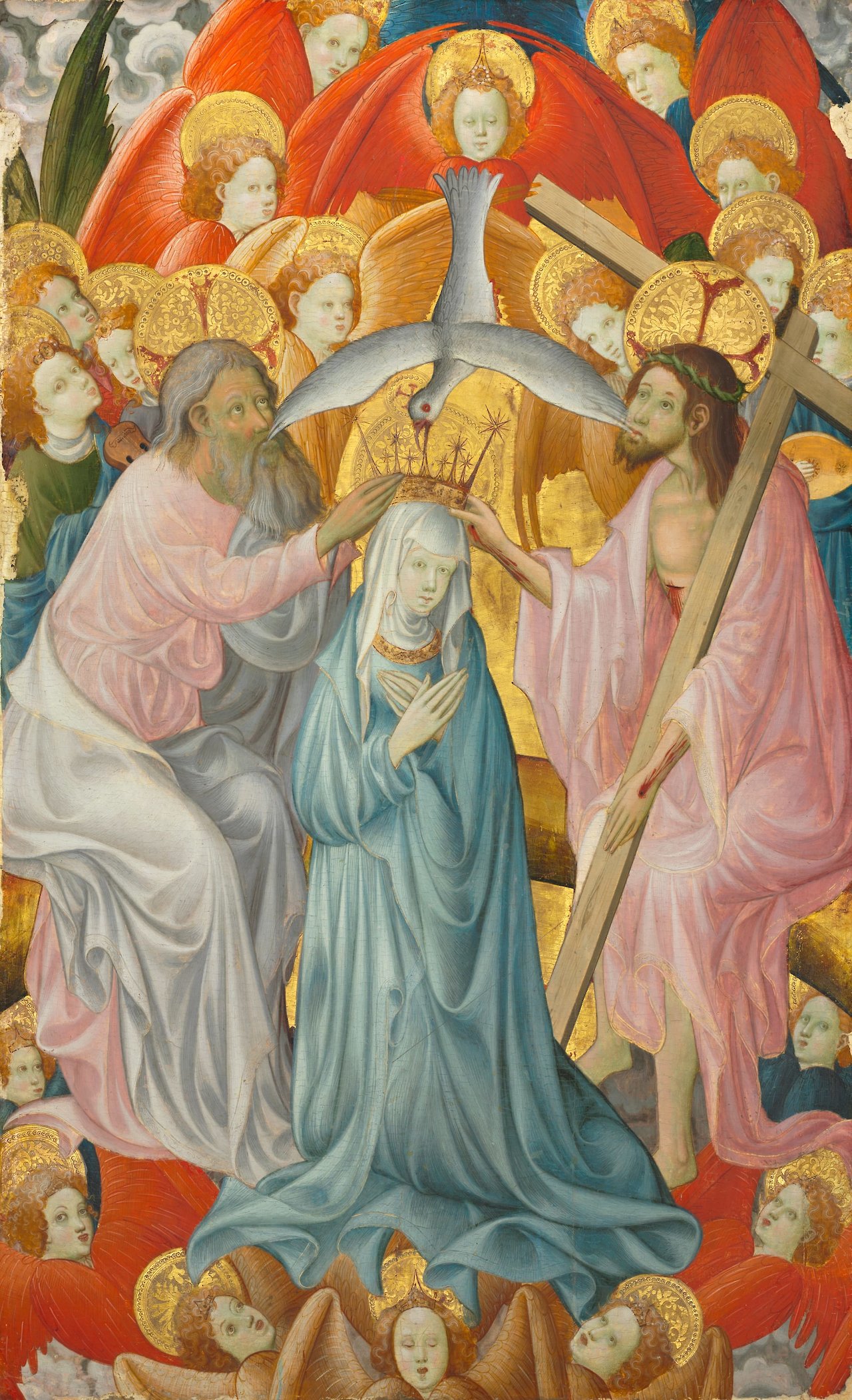
The Coronation of the Virgin with the Trinitys
by Master of Rubielos de Mora, 1400
- Medium
- Oil on panel
- Dimensions
- Framed: 158.4 x 101.5 x 9.5 cm (62 3/8 x 39 15/16 x 3 3/4 in.); Overall: 144.6 x 91.4 cm (56 15/16 x 36 in.)
- Location
- Cleveland Museum of Art
Master of the Catholic Kings
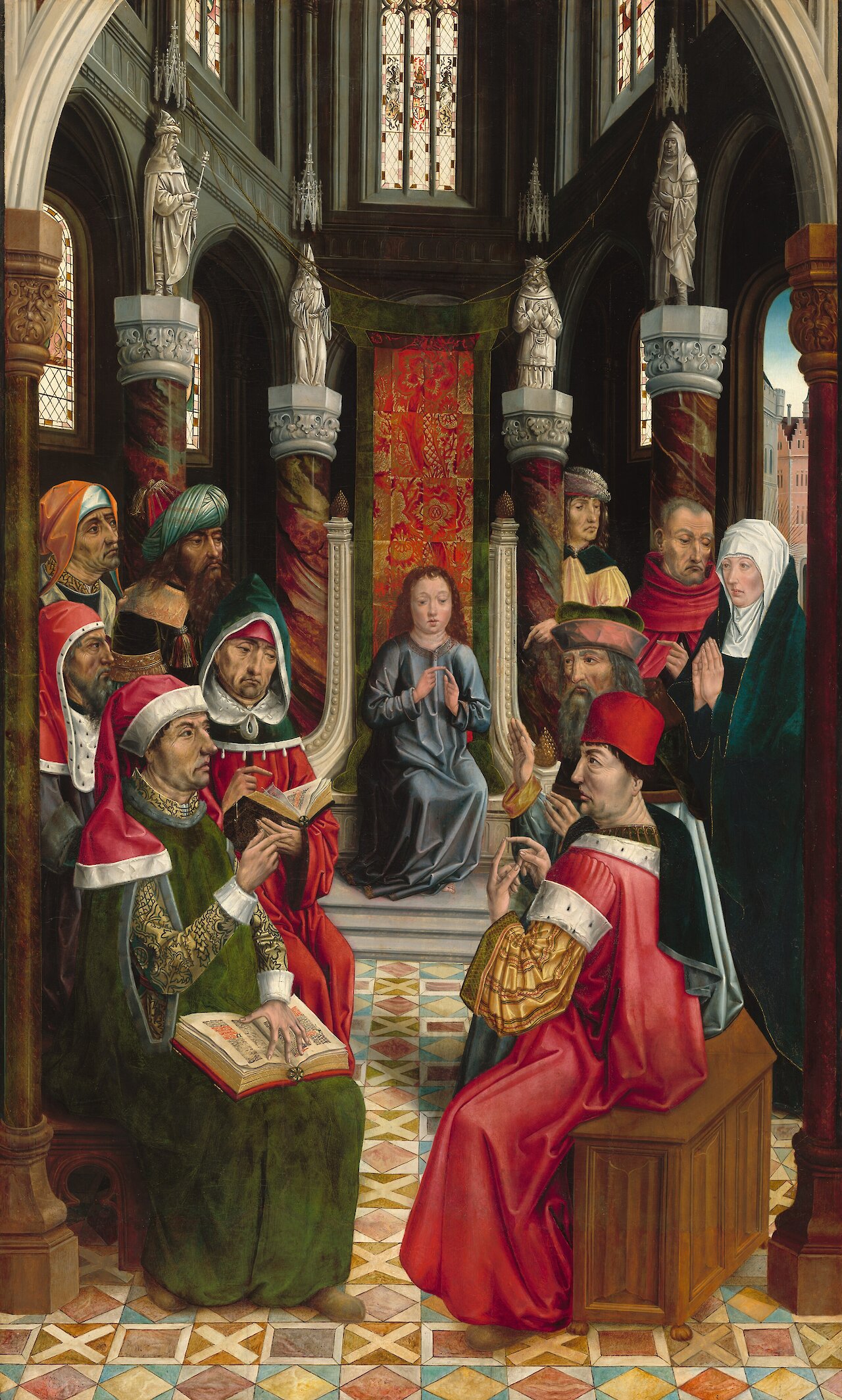
Christ among the Doctors
by Master of the Catholic Kings, circa 1495–1497
- Medium
- Oil on panel
- Dimensions
- 136.2 x 93 cm (53 5/8 x 36 5/8 in)
- Credits
- Samuel H. Kress Collection.
- Location
- National Gallery of Art
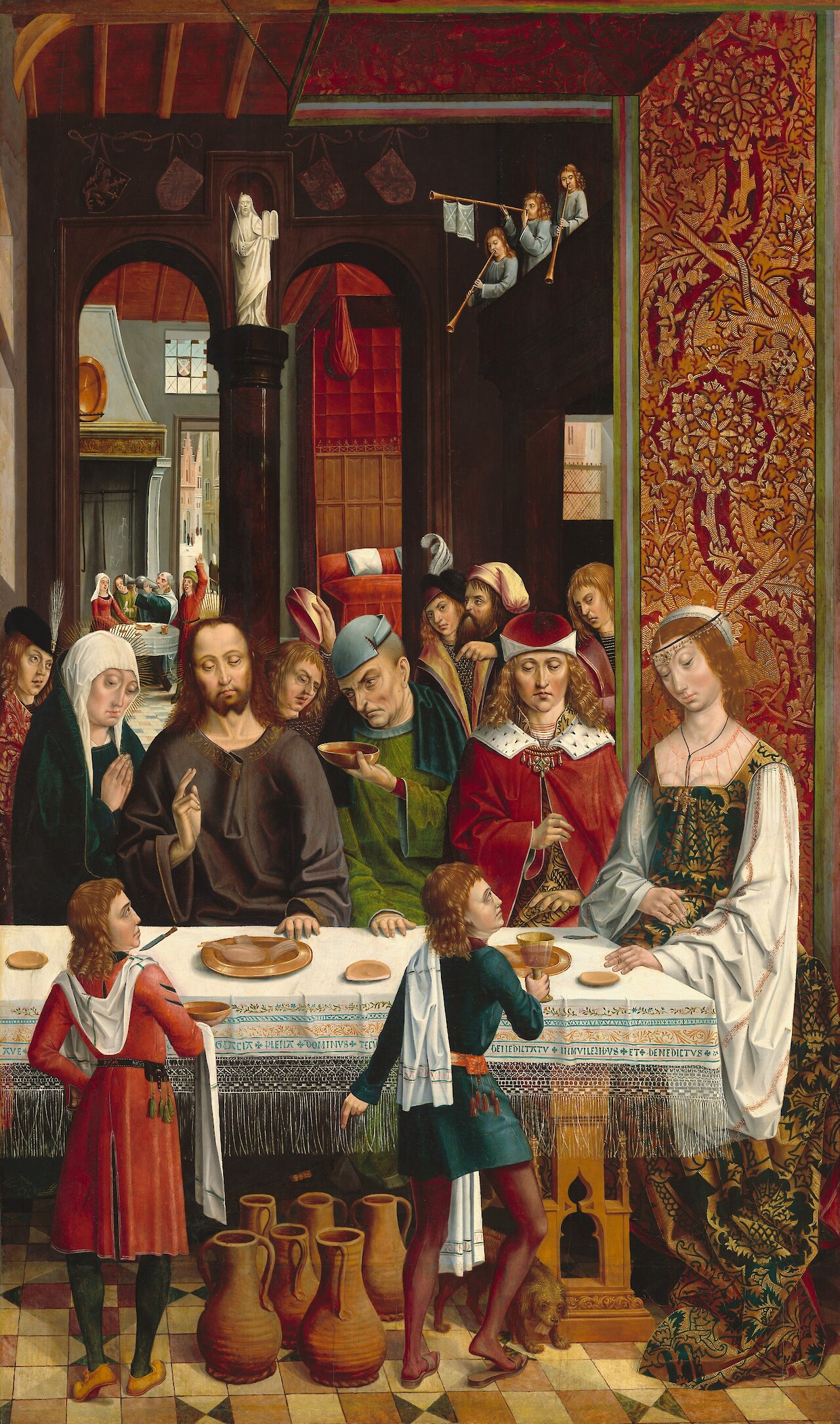
The Marriage at Cana
by Master of the Catholic Kings, circa 1495–1497
- Medium
- Oil on panel
- Dimensions
- 137.1 x 92.7 cm (54 x 36 1/2 in)
- Credits
- Samuel H. Kress Collection.
- Location
- National Gallery of Art
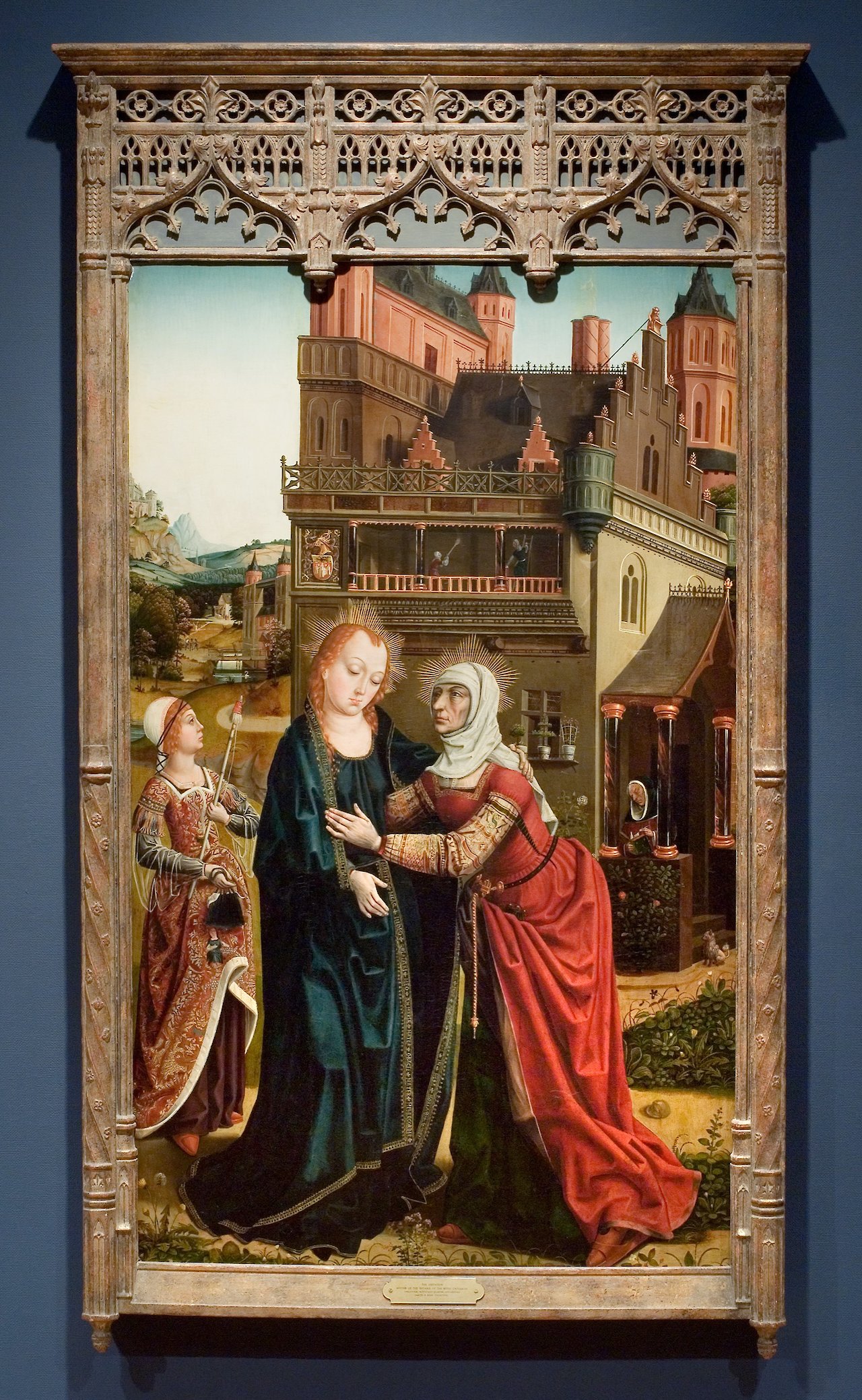
The Visitation
by Master of the Catholic Kings, circa 1496–1497
- Medium
- Oil on panel
- Dimensions
- 61 x 37.5 in
- Credits
- University of Arizona Museum of Art, Tucson, Arizona, Gift of Samuel H. Kress Foundation, 1961.013.022
- Location
- University of Arizona Museum of Art
Master of the Cypresses
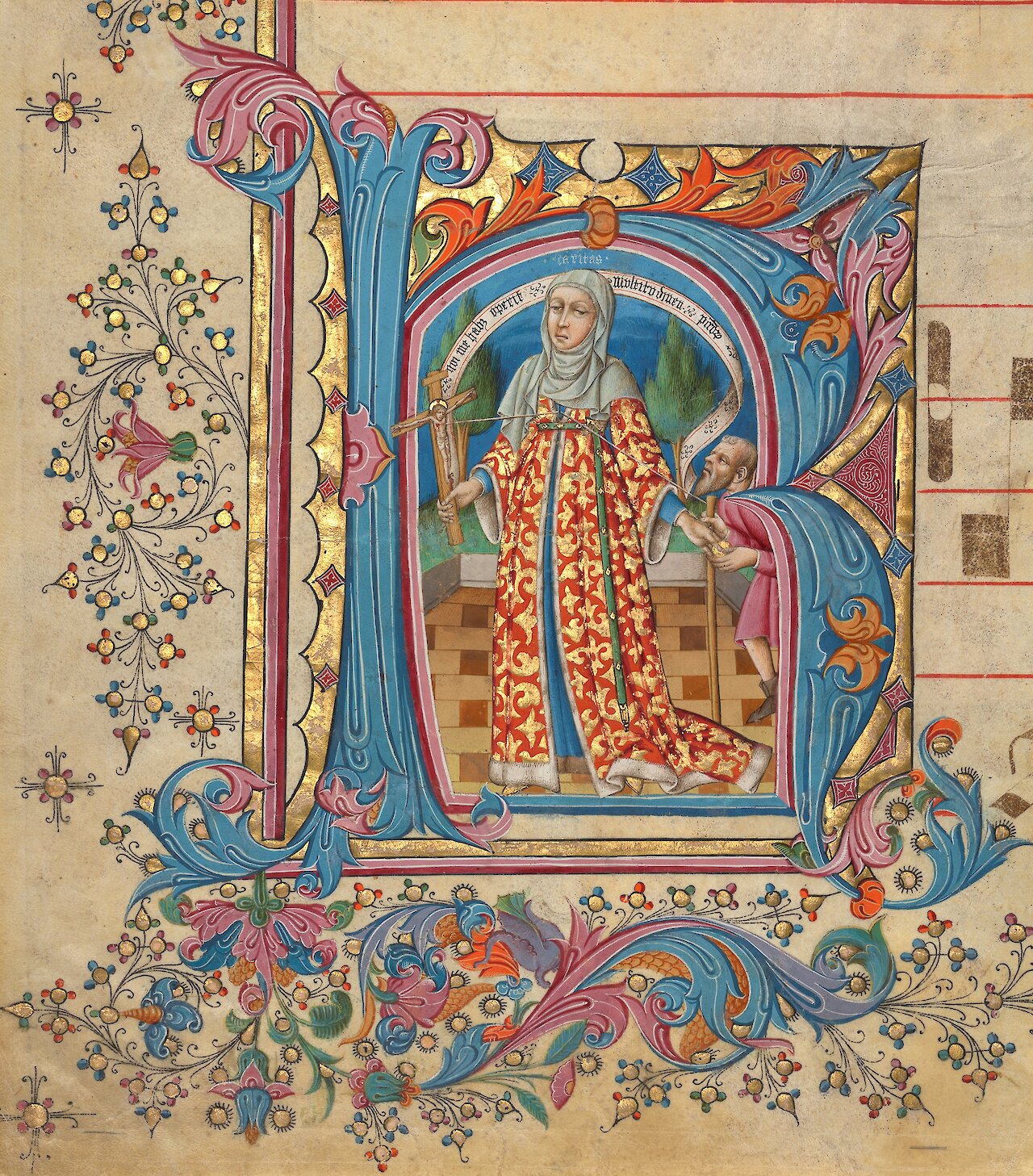
Historiated Initial from a Gradual
by Master of the Cypresses, circa 1430–1440
- Medium
- Tempera colors, gold leaf, and ink
- Dimensions
- Leaf: 36 × 31.5 cm (14 3/16 × 12 3/8 in)
- Notes
At the core of this manuscript leaf is an ornate decorative initial, a lavish letter "K" that serves as a visual ode to the virtue of Caritas, or love. The illustration depicts Charity as a richly attired woman, symbolizing the divine nature of God's love. The initial is intricately adorned with elaborate patterns and flourishes, a hallmark of the style associated with the Master of the Cypresses (active in the 1430s), an artist renowned for ornate design.
Believed to be the work of Pedro de Toledo (active in 1434), who was documented as an artist at Seville Cathedral during the 1430s, de Toledo was bestowed the title of "Master" by art historian Diego Angulo Íñiguez (1901–1986) in 1428.
Set against a deep blue backdrop, the letter "K" gleams resplendently in gold, with its intricate curves and lines meticulously rendered. Within the letter, two figures locked in an intimate embrace symbolize profound love and unwavering devotion. Caritas, or Charity, holding a crucifix in her right hand, tenderly extends a singular gold coin to the beggar before her. The intersecting geometric lines elegantly connect three essential elements of the Trinity: Charity's heart, the beggar's staff, and Christ's wound, symbolizing divine salvation through God's boundless charity.
- Location
- J. Paul Getty Museum
Mateu, Jaume
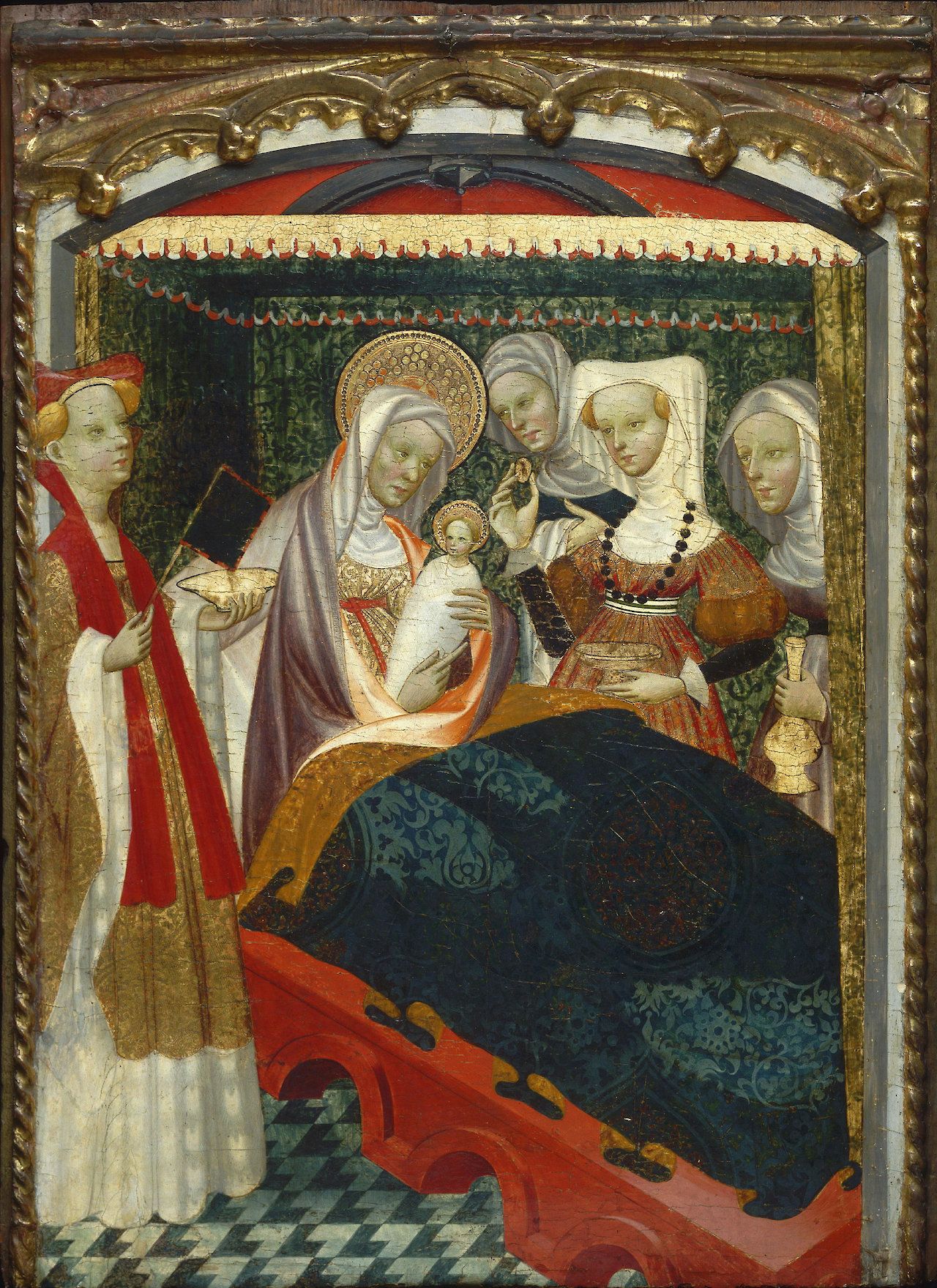
The Birth of the Virgin
by Jaume Mateu, circa 1450
- Medium
- Tempera and tooled gold on panel
- Dimensions
- 31 × 22 3/4 in (78.7 × 57.8 cm)
- Credits
- John G. Johnson Collection, 1917
- Location
- Philadelphia Museum of Art
Meléndez, Luis
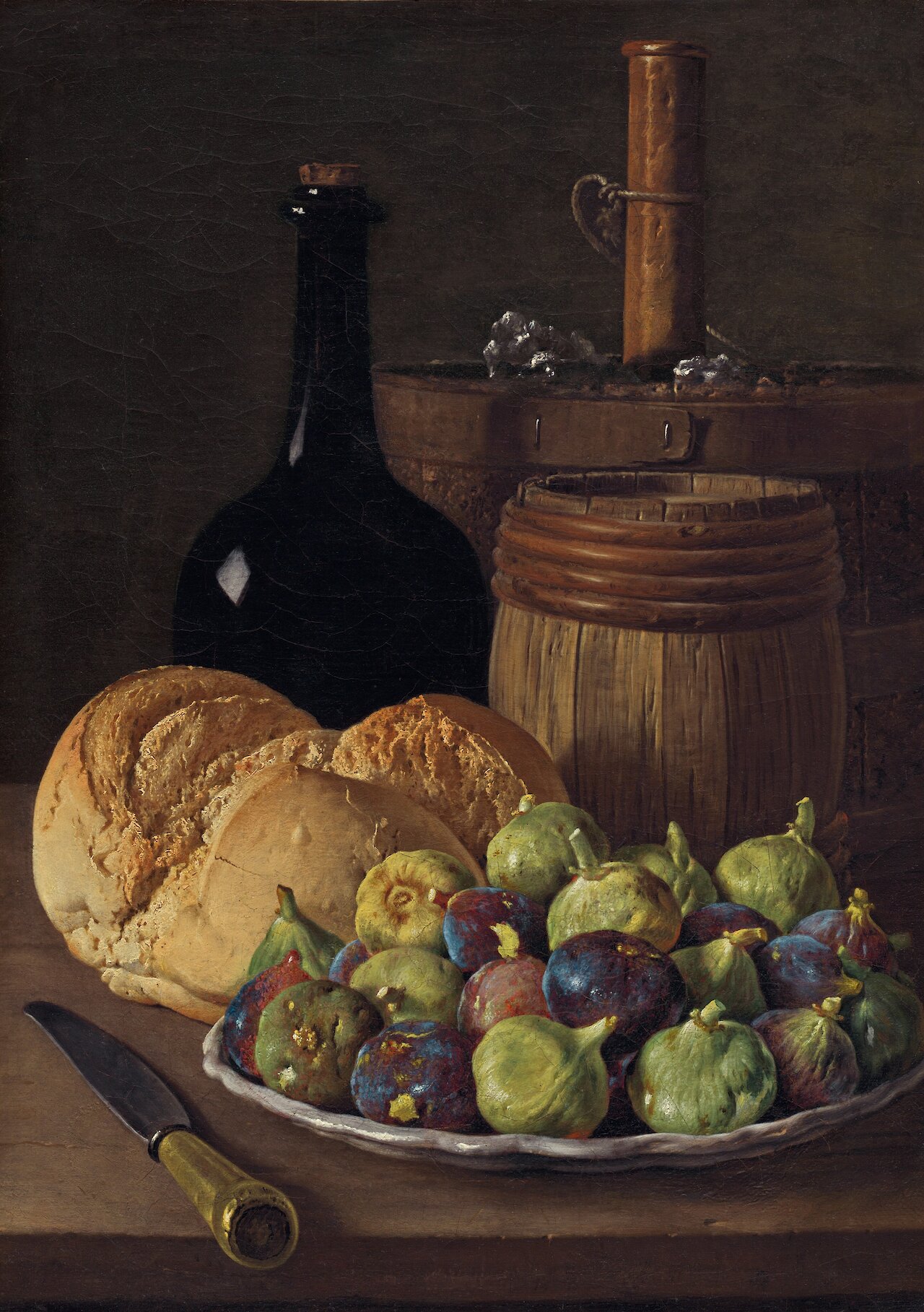
Still Life with Figs and Bread
by Luis Meléndez, 1770
- Medium
- Oil on canvas
- Dimensions
- 47.6 x 34 cm (18 3/4 x 13 3/8 in)
- Credits
- Patrons’ Permanent Fund.
- Location
- National Gallery of Art
Miró, Joan
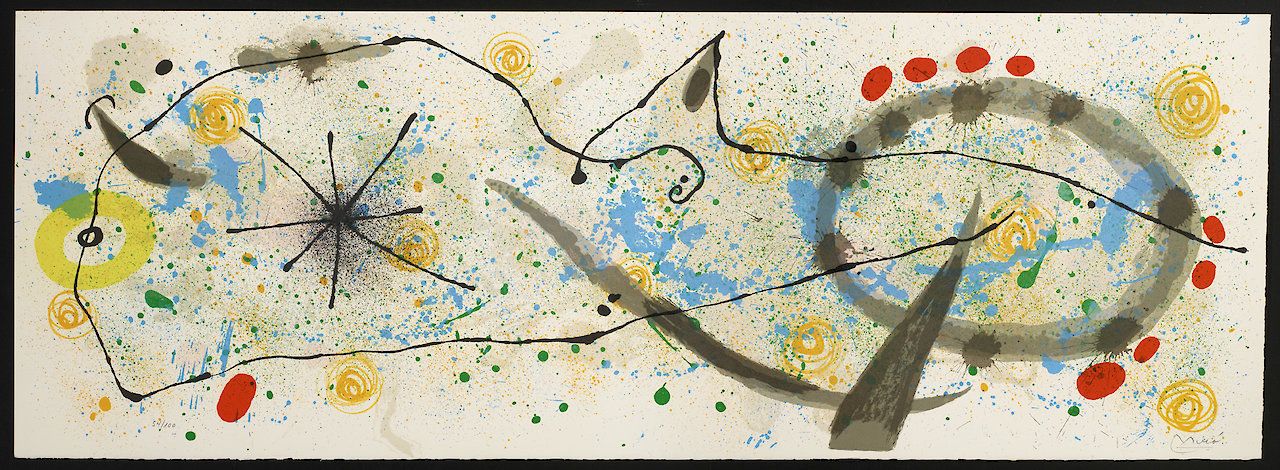
(The Yellow Broder) from Le Lezard aux Plumes d’Or
by Joan Miró, 1967
- Medium
- Lithograph
- Dimensions
- Sheet: 13 x 39 in (33.02 x 99.06 cm)
- Location
- Allentown Art Museum
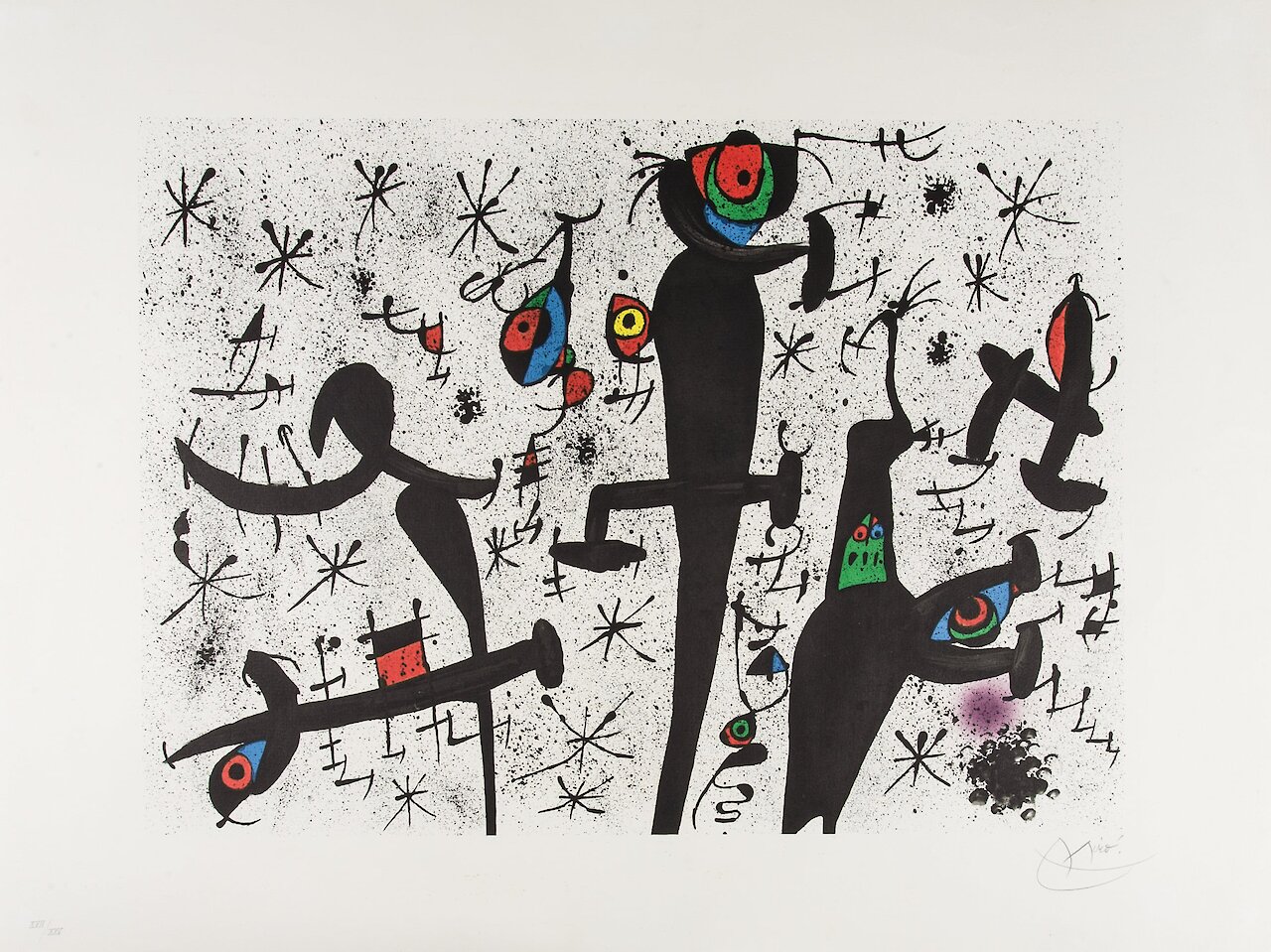
Abstract Composition (Black and Color forms)
by Joan Miró, 1971
- Medium
- Color lithograph on Guarro paper
- Dimensions
- 39-1/2 x 29-1/2 inches
- Credits
- Gift of Dr. Robert and Margaret Leary. © Jordan Schnitzer Museum of Art – University of Oregon
- Notes
Edition XVII/XXV
- Location
- Jordan Schnitzer Museum of Art
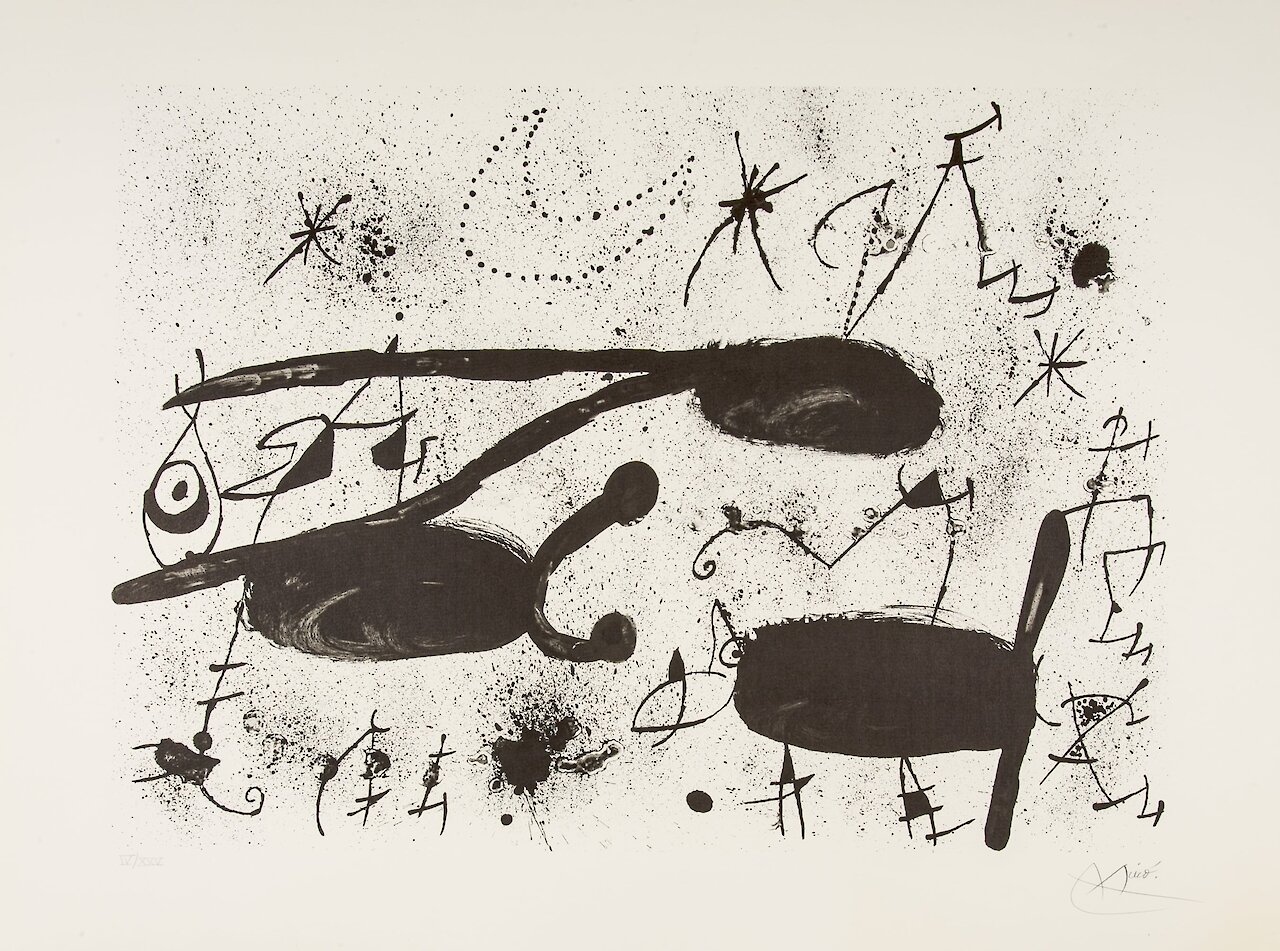
Abstract Composition (Black and White)
by Joan Miró, circa 1970
- Medium
- Lithograph
- Dimensions
- 39-3/8 x 29-1/2 inches
- Credits
- Courtesy of Dr. Robert and Margaret Leary. © Jordan Schnitzer Museum of Art — University of Oregon
- Notes
Plate 7 from Homenatge à Joan Prats
- Location
- Jordan Schnitzer Museum of Art
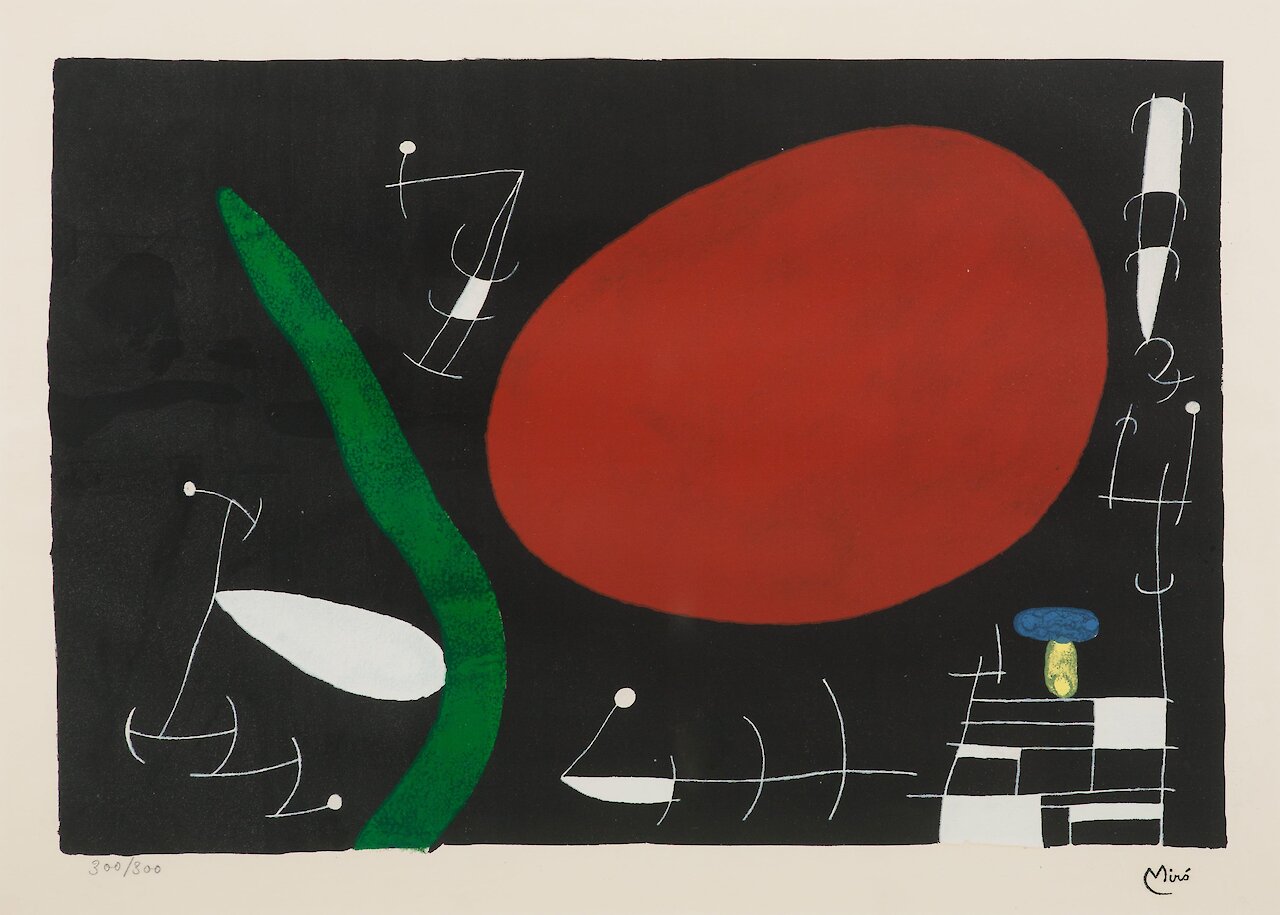
Abstract Forms
by Joan Miró, circa 1967
- Medium
- Ink on paper
- Dimensions
- 22 x 29 inches
- Credits
- Gift of Eiko Politz. © Jordan Schnitzer Museum of Art – University of Oregon
- Notes
Edition 300/300
- Location
- Jordan Schnitzer Museum of Art
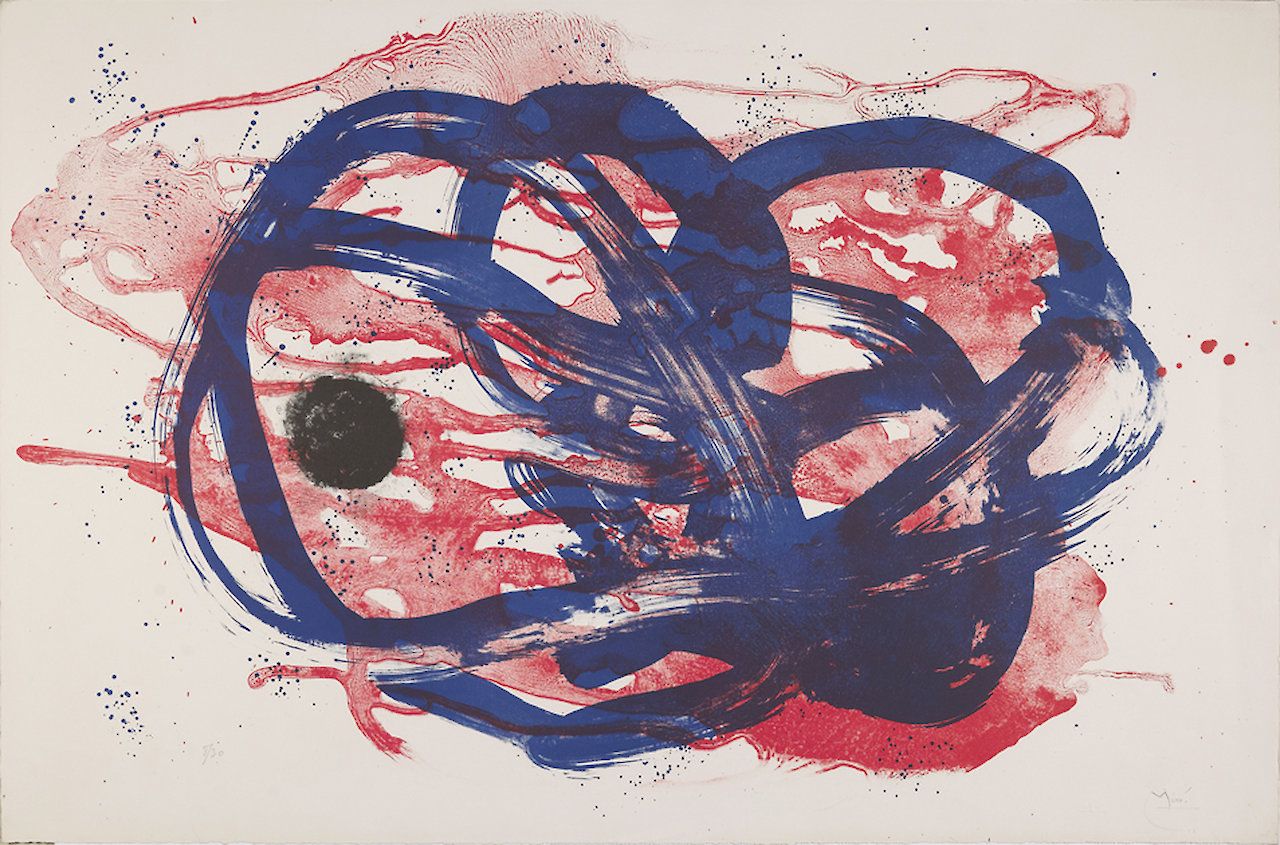
Bleu Sur Lavis Rouge
by Joan Miró, 1961
- Medium
- Color lithograph
- Dimensions
- Sheet: 26 1/8 x 39 3/4 in (66.3575 x 100.965 cm)
- Location
- Allentown Art Museum
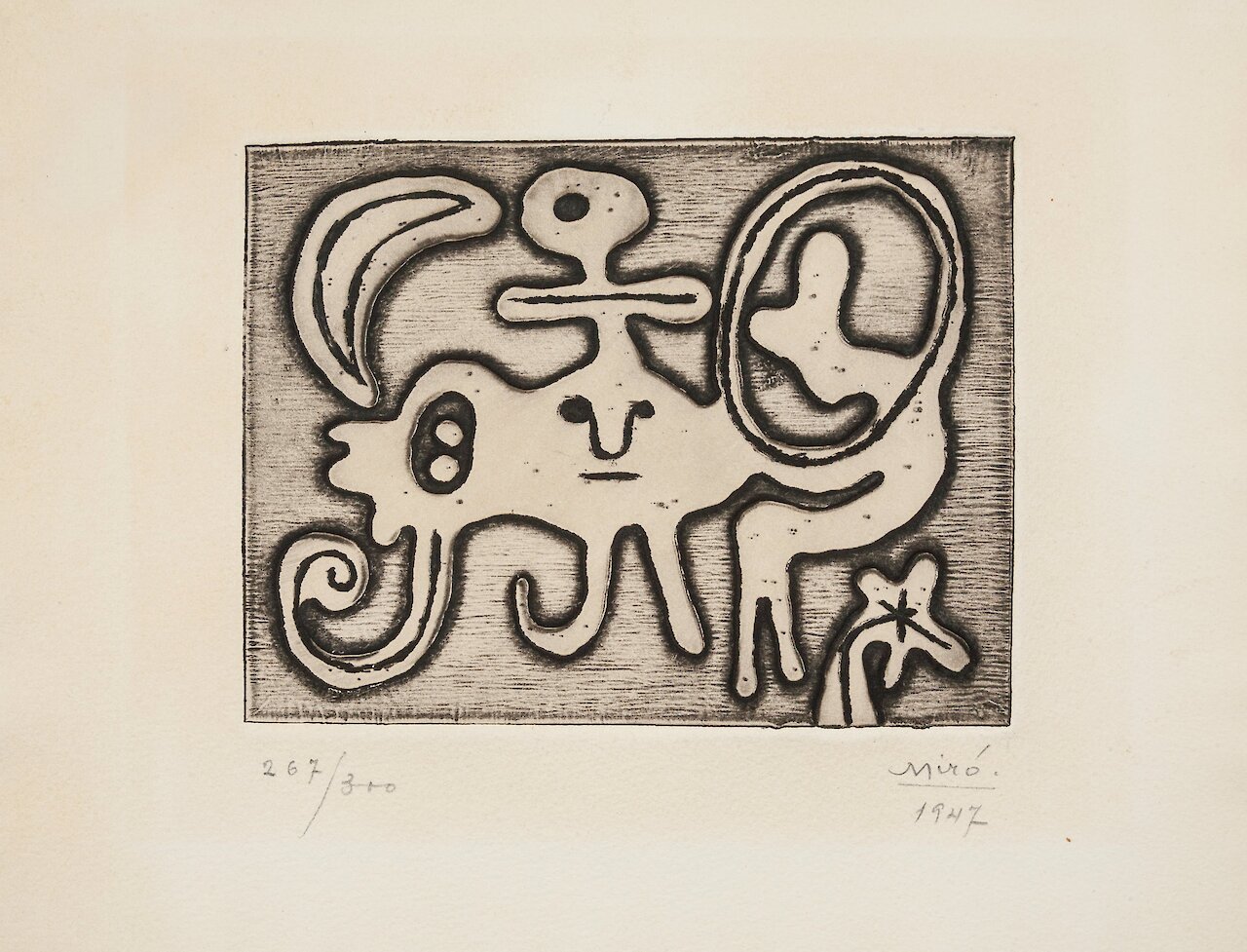
Femme et Oiseau Devant la Lune
by Joan Miró, circa 1947
- Medium
- Ink on paper
- Dimensions
- Image: 4-3/8 x 5-3/4 inches
- Credits
- Gift of Dr. Roger and Karen Michalsen. © Jordan Schnitzer Museum of Art – University of Oregon
- Notes
Edition 267/300
- Location
- Jordan Schnitzer Museum of Art
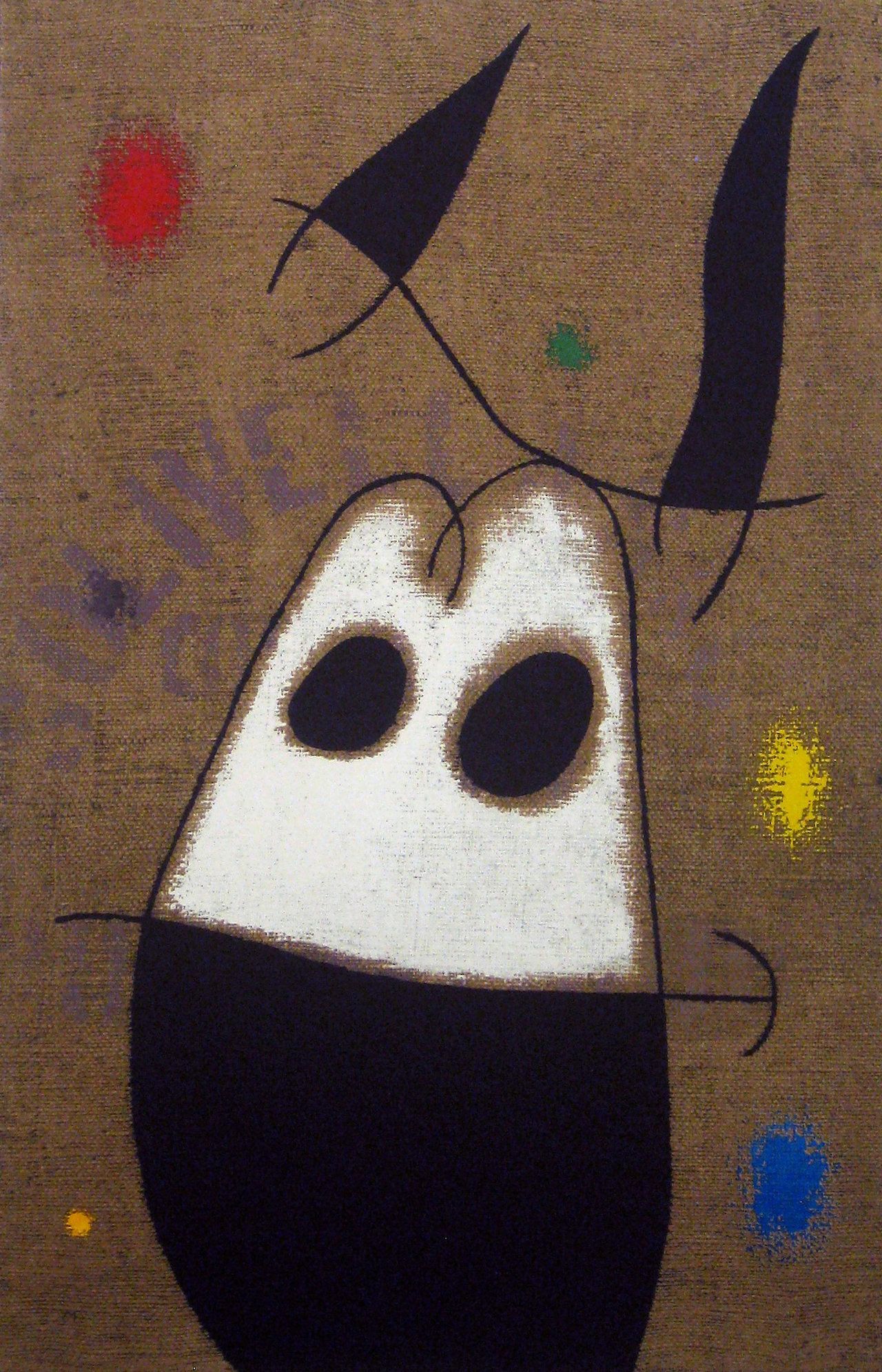
Femmes
by Joan Miró, 1965
- Medium
- Lithograph
- Dimensions
- 92 x 60cm
- Location
- John and Mable Ringling Museum of Art
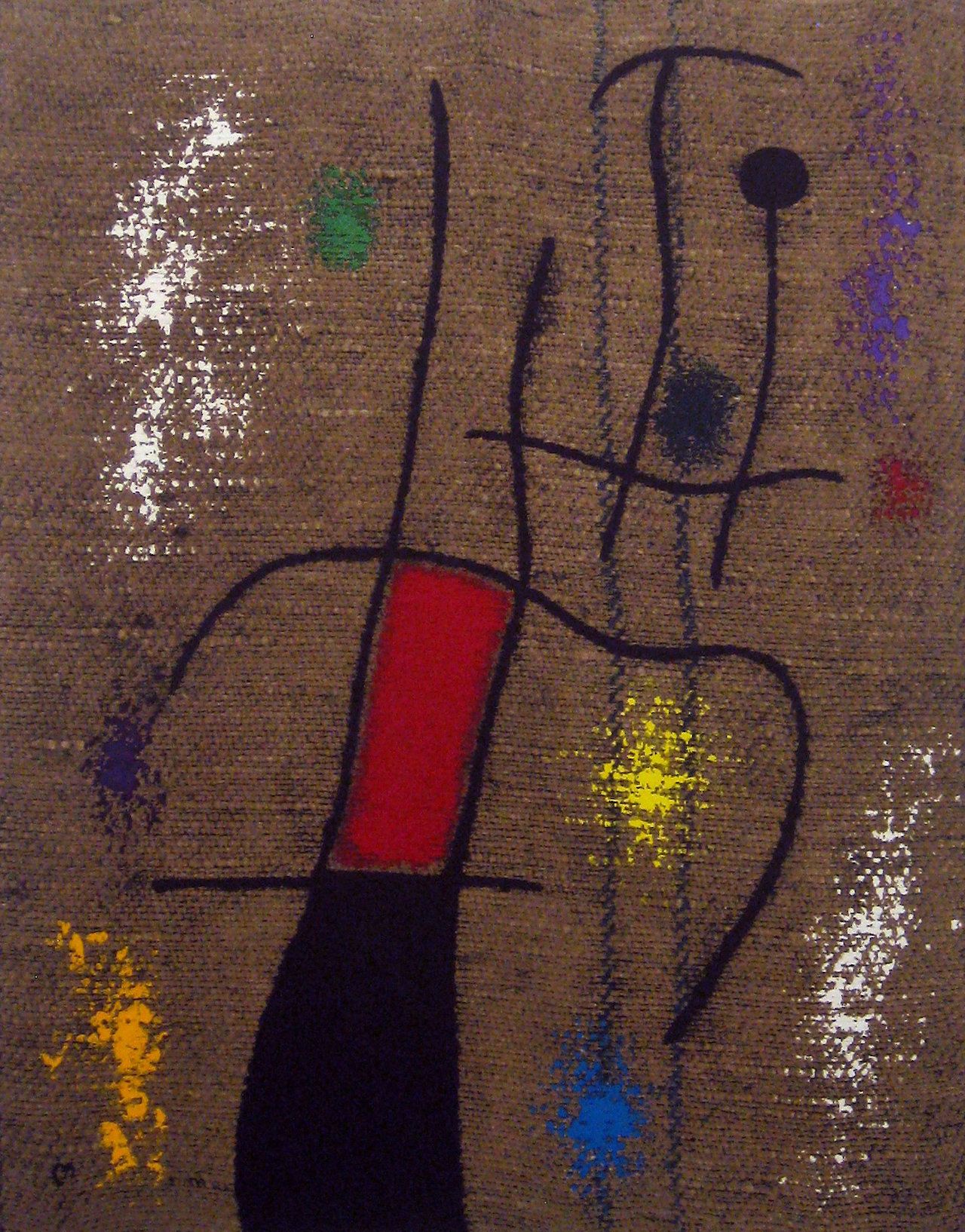
Femmes
by Joan Miró, 1965
- Medium
- Lithograph
- Dimensions
- 54 x 42cm
- Location
- John and Mable Ringling Museum of Art
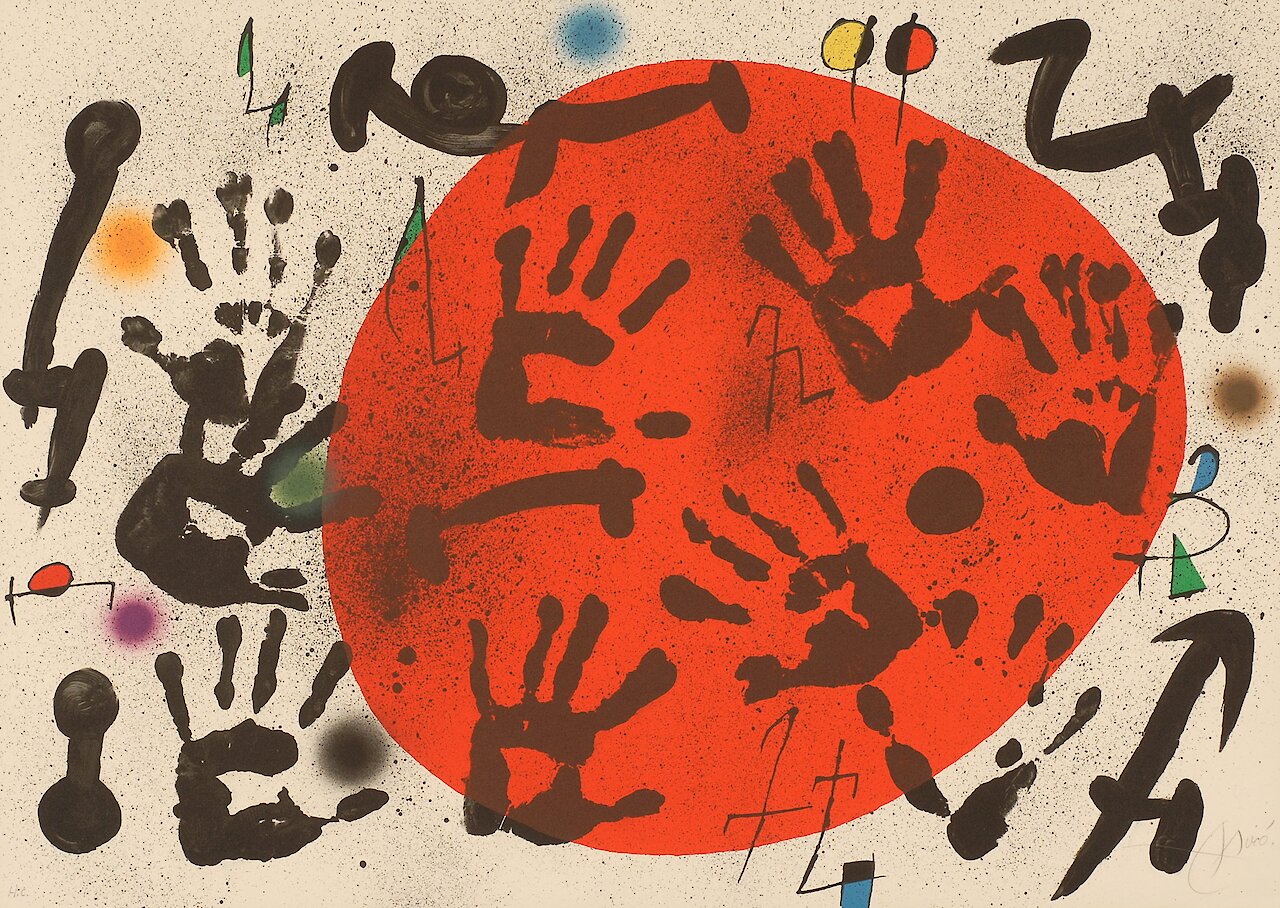
Les Agulles del pastor
by Joan Miró, 1973
- Medium
- Color lithograph
- Dimensions
- 23-1/4 x 32-5/8 in.
- Credits
- The Elizabeth Cole Butler Graphic Arts Collection, Bequest to the Museum, 2004. © Jordan Schnitzer Museum of Art — University of Oregon
- Location
- Jordan Schnitzer Museum of Art
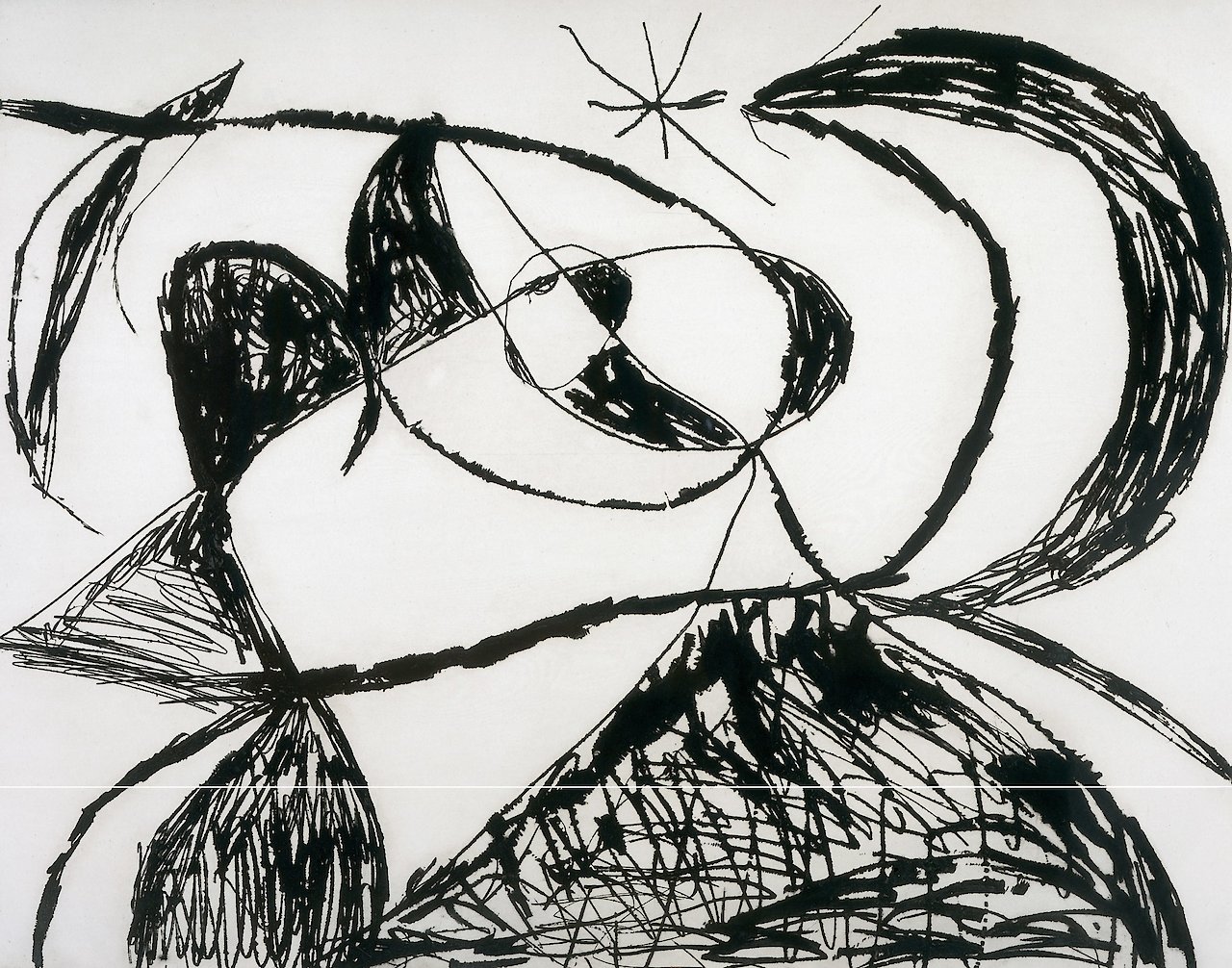
Mallorca Series
by Joan Miró, 1973
- Medium
- 9 etchings and aquatint printed in black and colored inks, each accompanied by a state in color, a state in black, and a state in negative, for a total of 36 prints. The series includes an etched title page. A separate gouache accompanies The Kreeger Museum edition.
- Dimensions
- Print: 21 5/8 x 27 ½; Gouache: 17 x 25 in
- Credits
- The Kreeger Museum, Washington, DC. © Succession Miró/ARS, New York.
- Location
- Kreeger Museum
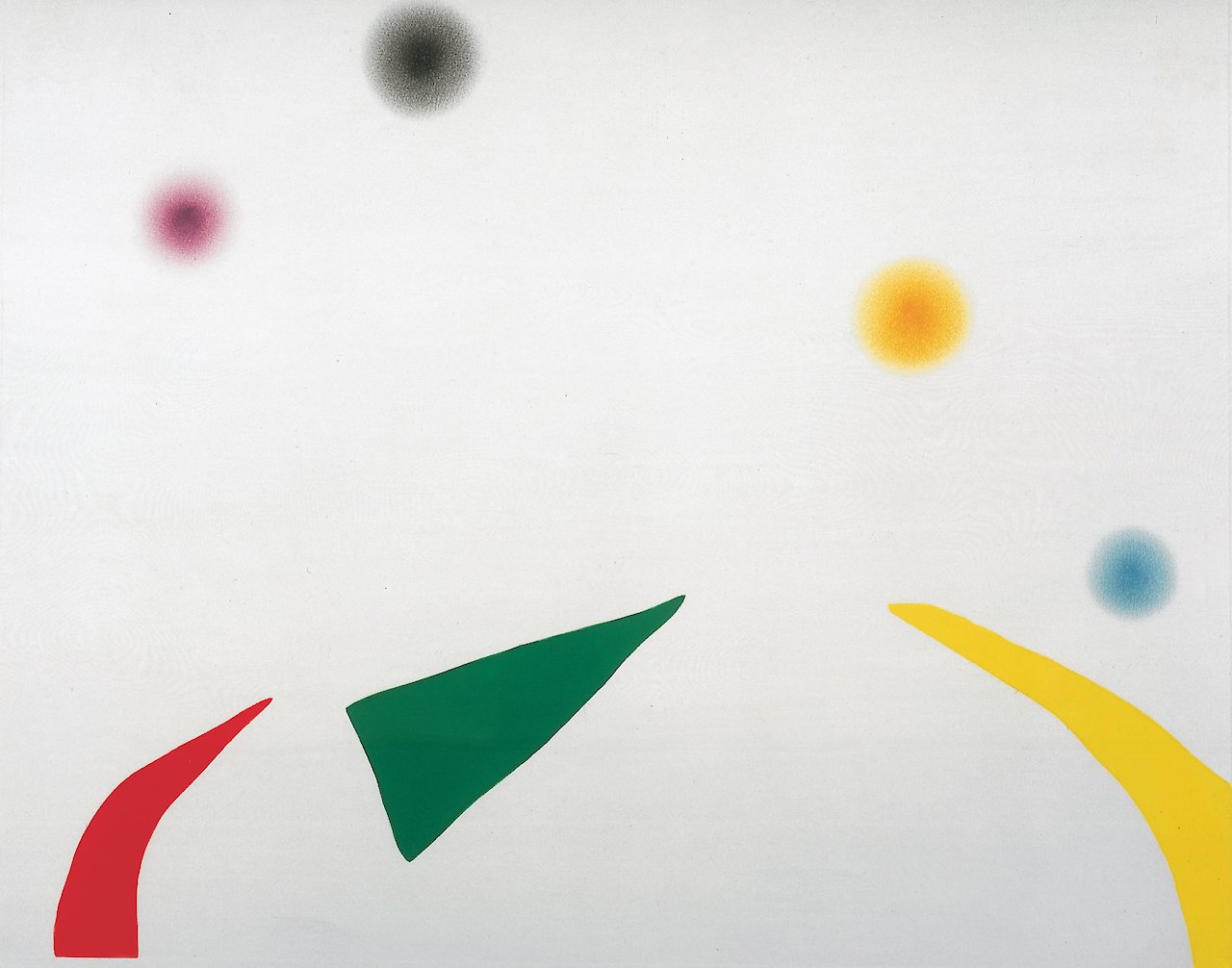
Mallorca Series
by Joan Miró, 1973
- Medium
- 9 etchings and aquatint printed in black and colored inks, each accompanied by a state in color, a state in black, and a state in negative, for a total of 36 prints. The series includes an etched title page. A separate gouache accompanies The Kreeger Museum edition.
- Dimensions
- Print: 21 5/8 x 27 ½; Gouache: 17 x 25 in
- Credits
- The Kreeger Museum, Washington, DC. © Succession Miró/ARS, New York.
- Location
- Kreeger Museum
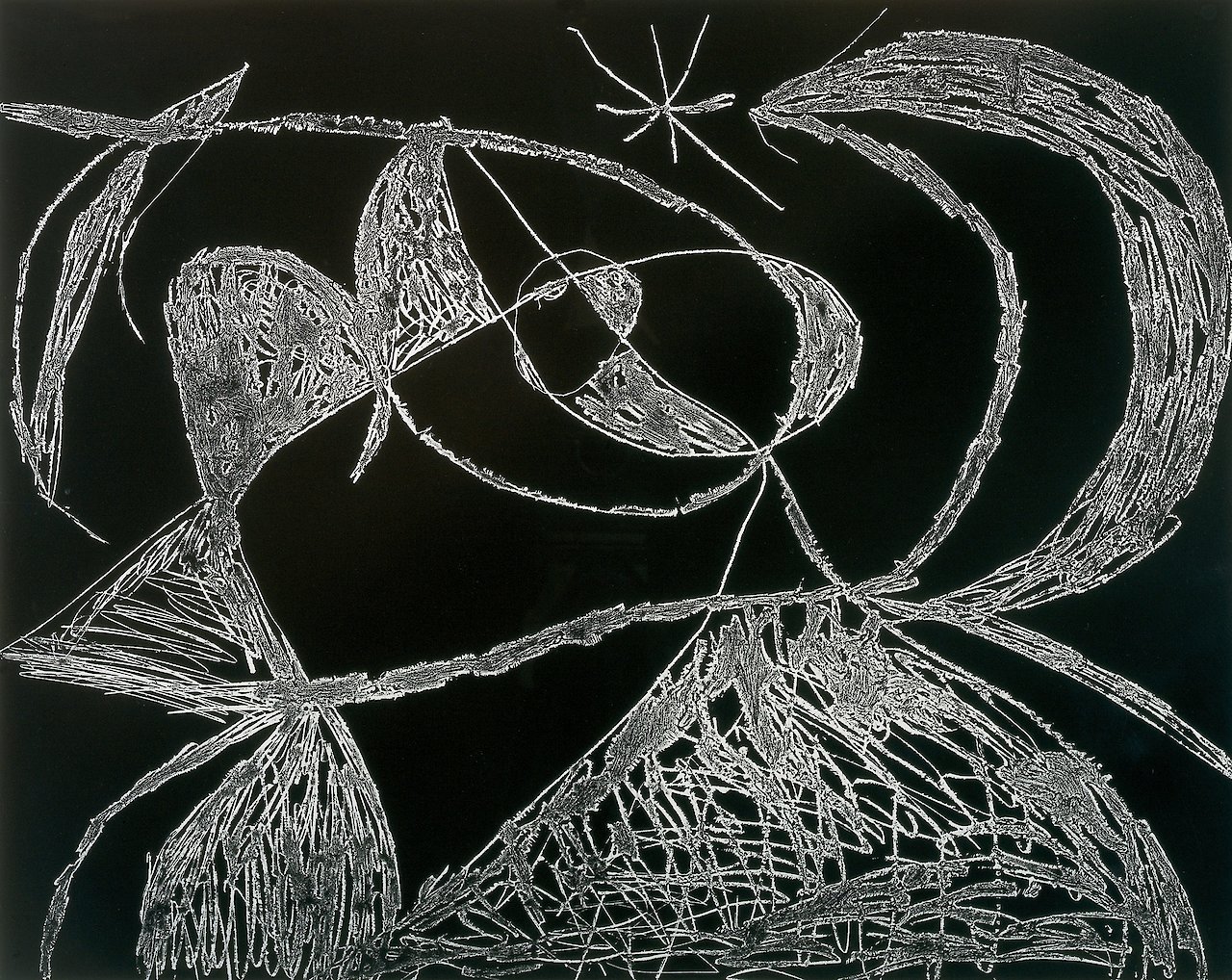
Mallorca Series
by Joan Miró, 1973
- Medium
- 9 etchings and aquatint printed in black and colored inks, each accompanied by a state in color, a state in black, and a state in negative, for a total of 36 prints. The series includes an etched title page. A separate gouache accompanies The Kreeger Museum edition.
- Dimensions
- Print: 21 5/8 x 27 ½; Gouache: 17 x 25 in
- Credits
- The Kreeger Museum, Washington, DC. © Succession Miró/ARS, New York.
- Location
- Kreeger Museum
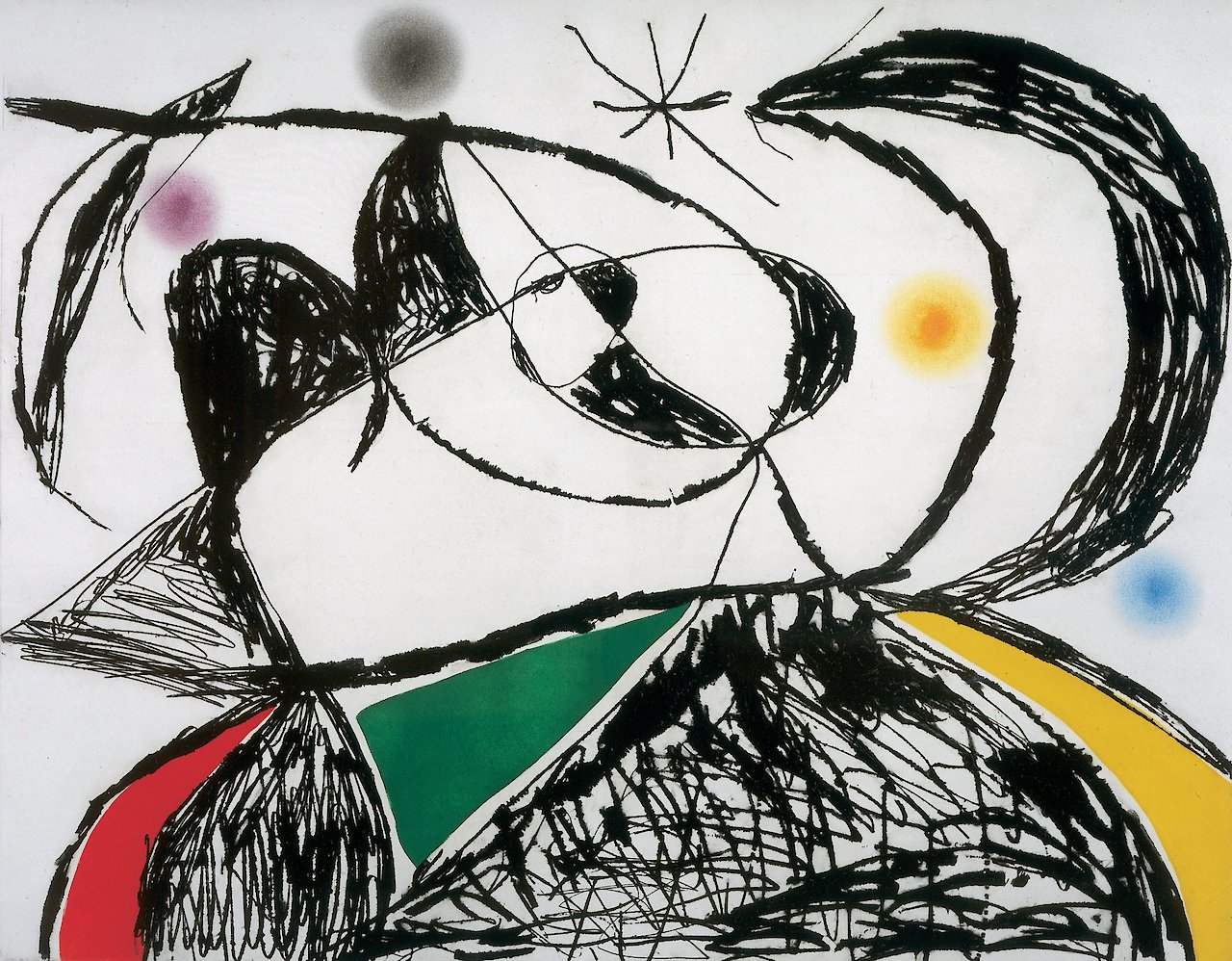
Mallorca Series
by Joan Miró, 1973
- Medium
- 9 etchings and aquatint printed in black and colored inks, each accompanied by a state in color, a state in black, and a state in negative, for a total of 36 prints. The series includes an etched title page. A separate gouache accompanies The Kreeger Museum edition.
- Dimensions
- Print: 21 5/8 x 27 ½; Gouache: 17 x 25 in
- Credits
- The Kreeger Museum, Washington, DC. © Succession Miró/ARS, New York.
- Location
- Kreeger Museum
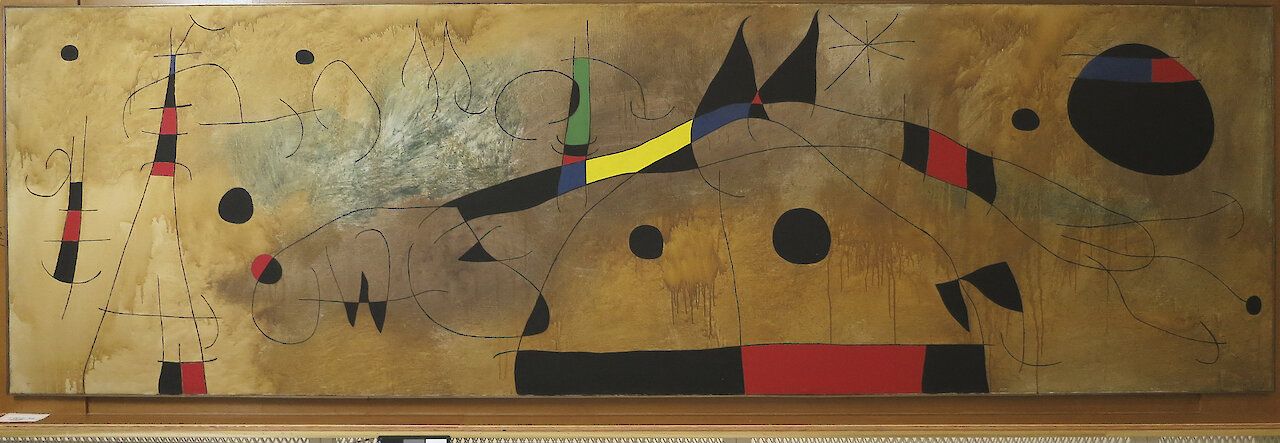
Mural, March 20, 1961
by Joan Miró, 1961
- Medium
- Oil on canvas
- Dimensions
- 114.3 x 365.8 cm
- Credits
- Harvard Art Museums/Fogg Museum, Gift of Mr. and Mrs. Josep Lluís Sert
- Location
- Harvard Art Museums
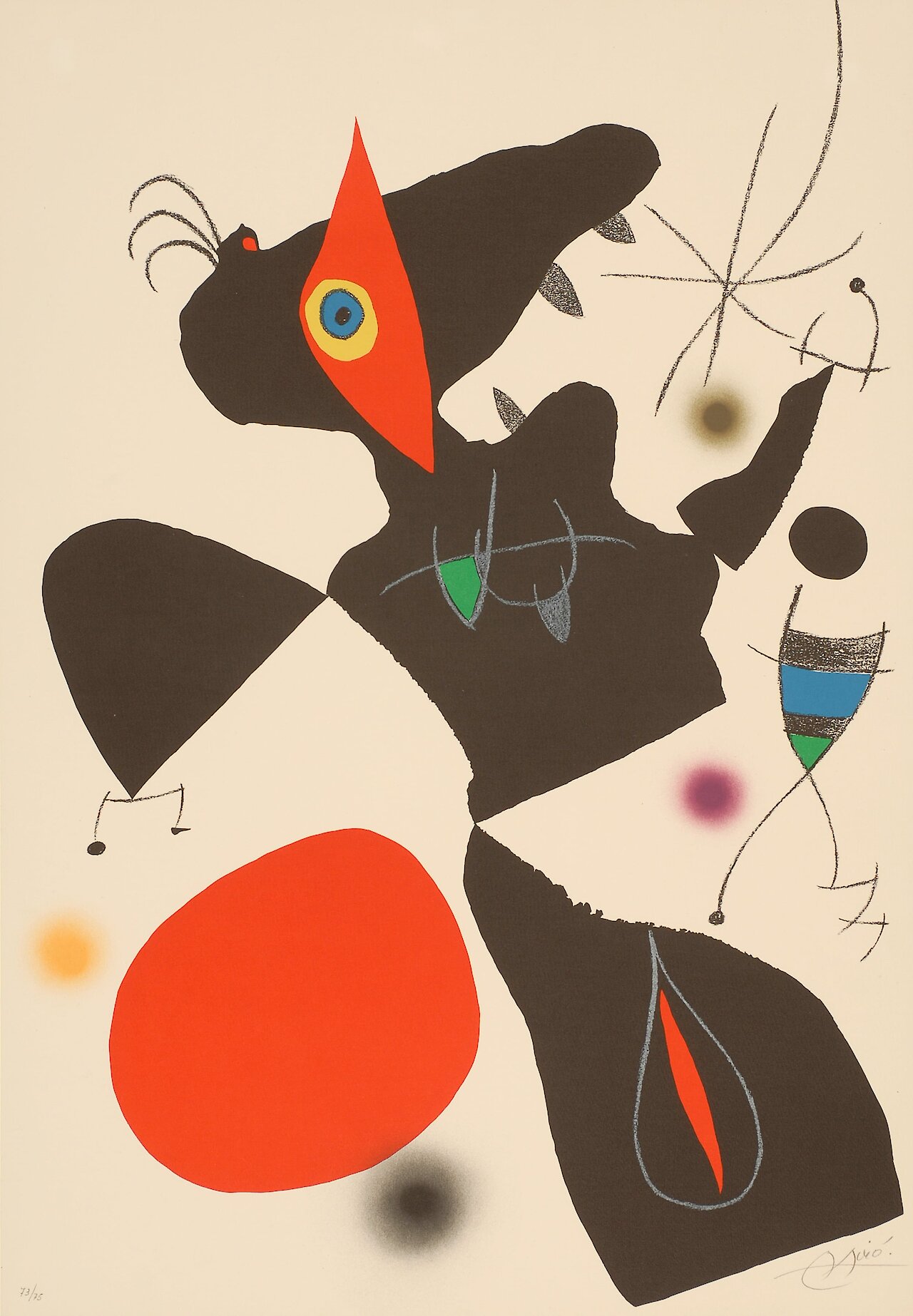
Plate IV
by Joan Miró, 1973
- Medium
- Color lithograph
- Dimensions
- 34-3/8 x 24 in.
- Credits
- The Elizabeth Cole Butler Graphic Arts Collection, Bequest to the Museum, 2004. © Jordan Schnitzer Museum of Art — University of Oregon
- Notes
From the series "Oda a Joan Miro"
- Location
- Jordan Schnitzer Museum of Art
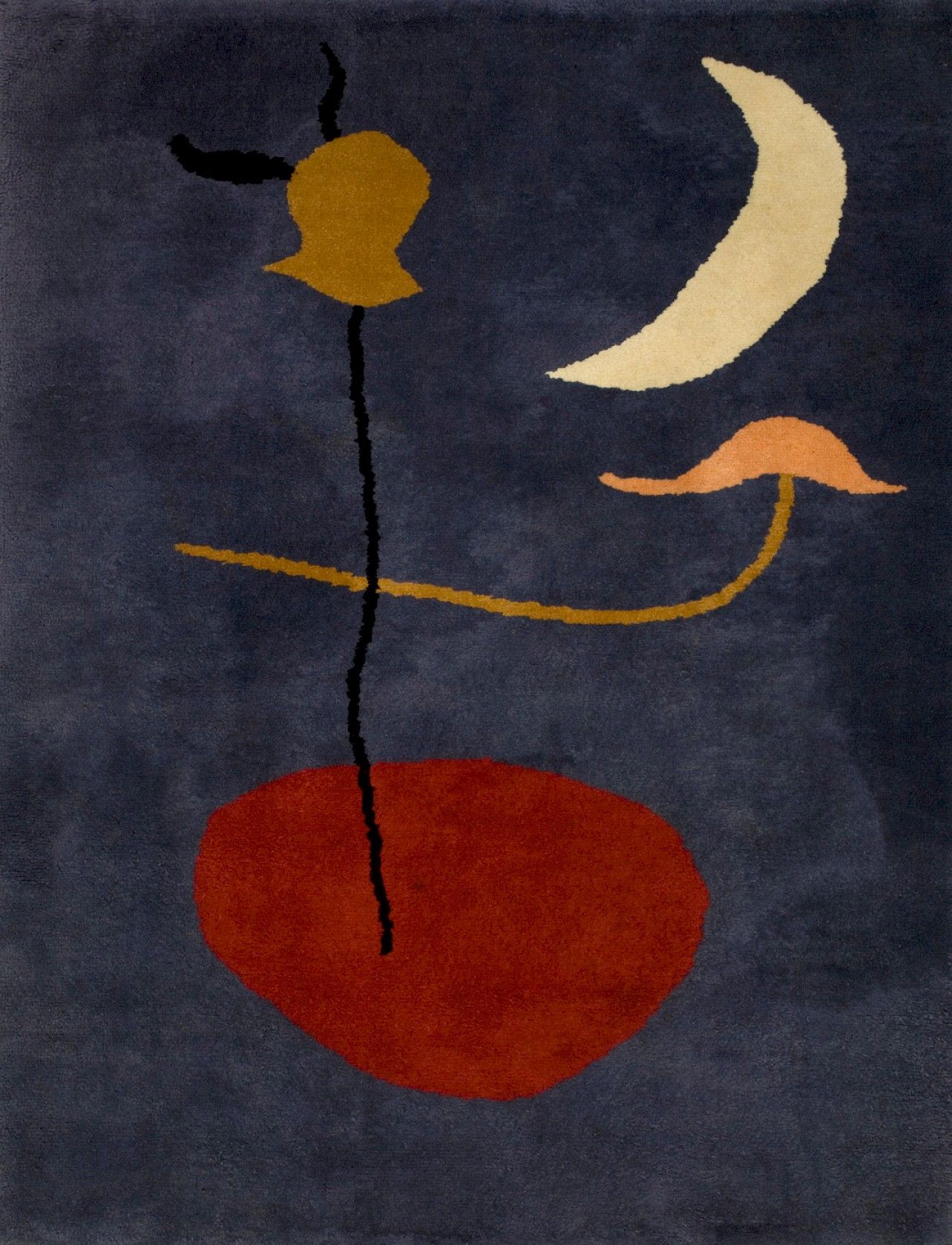
Spanish Dancer
by Joan Miró, 1962
- Medium
- Wool on cotton
- Dimensions
- 76 3/4 x 60 in. (194.95 x 152.4 cm)
- Location
- Bechtler Museum of Modern Art
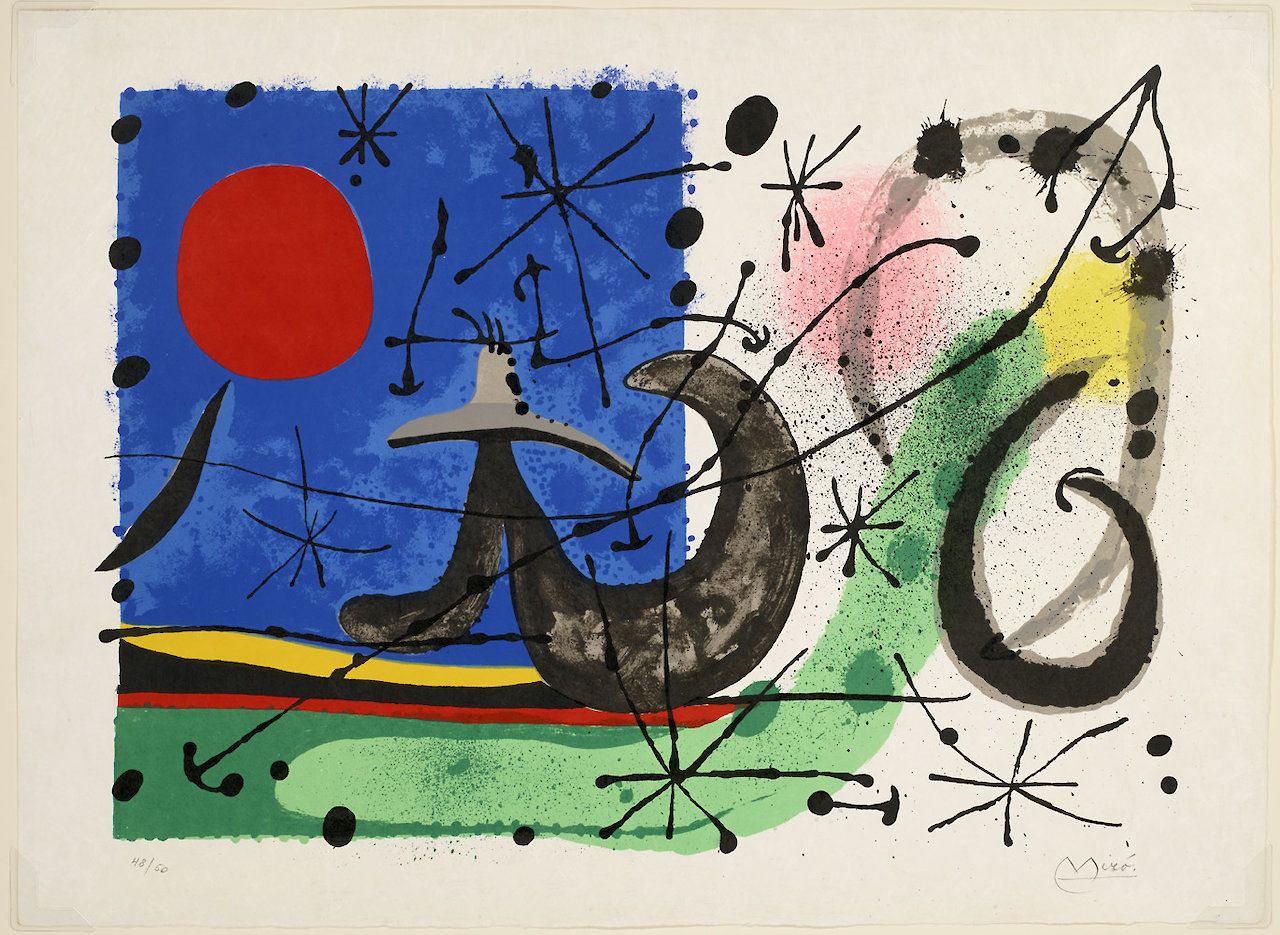
Untitled from Le Lézard aux Plumes d’Or
by Joan Miró, 1967
- Medium
- Lithograph
- Dimensions
- Sheet: 16 x 22 in (40.64 x 55.88 cm)
- Location
- Allentown Art Museum
Mor, Anthonis
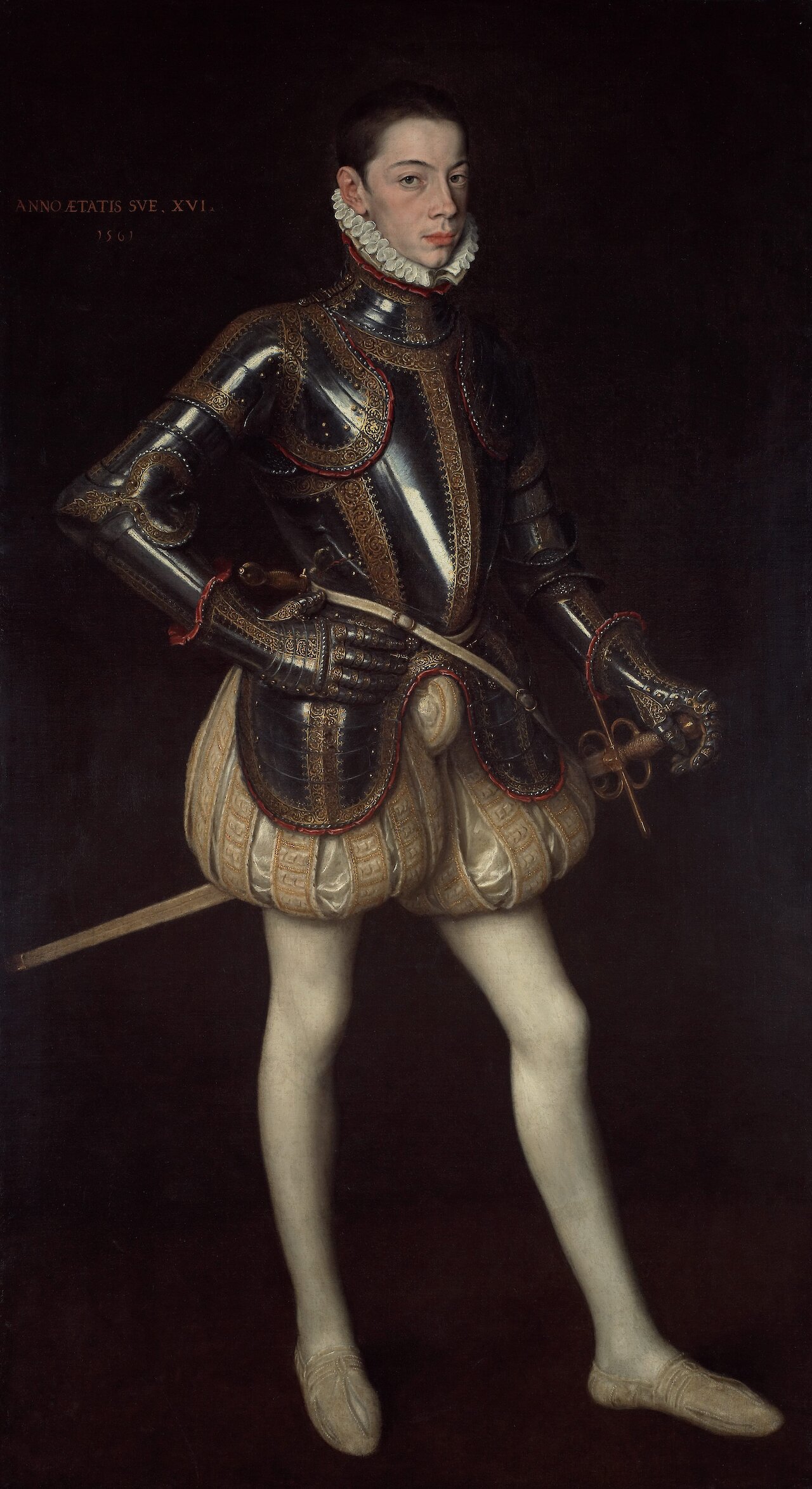
Portrait of Alessandro Farnese
by Anthonis Mor, 1561
- Medium
- Oil on canvas
- Dimensions
- 71 3/8 x 38 7/8 in (181.3 x 98.7 cm)
- Credits
- Meadows Museum, SMU, Dallas. Algur H. Meadows Collection, MM.71.04. Photography by Michael Bodycomb.
- Location
- Meadows Museum
Murillo, Bartolomé Esteban
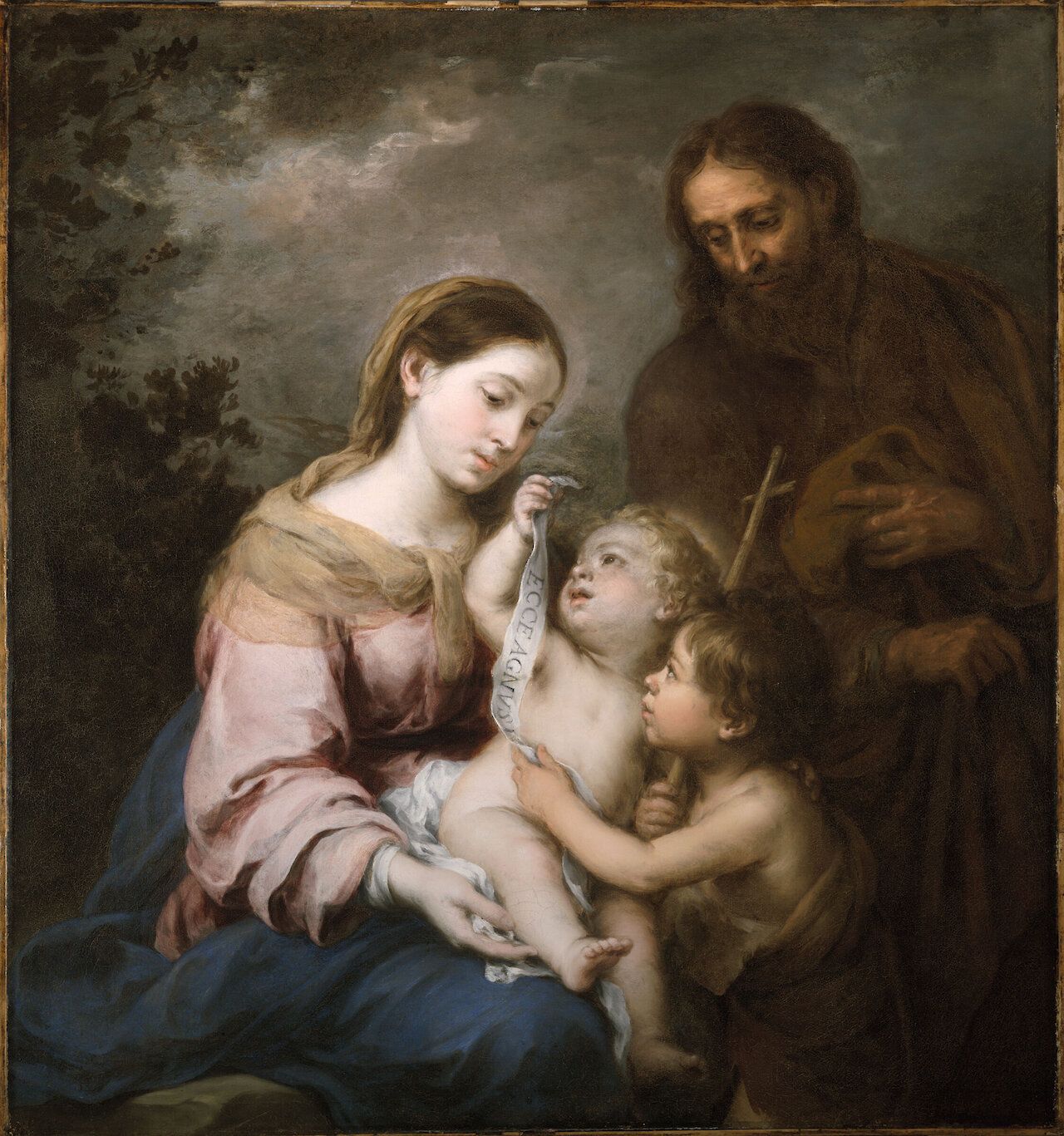
Holy Family with Infant Saint John
by Bartolomé Esteban Murillo, circa 1670
- Medium
- Oil on canvas
- Dimensions
- 120 x 110.5 cm
- Credits
- Harvard Art Museums/Fogg Museum, Bequest of Nettie G. Naumburg
- Location
- Harvard Art Museums
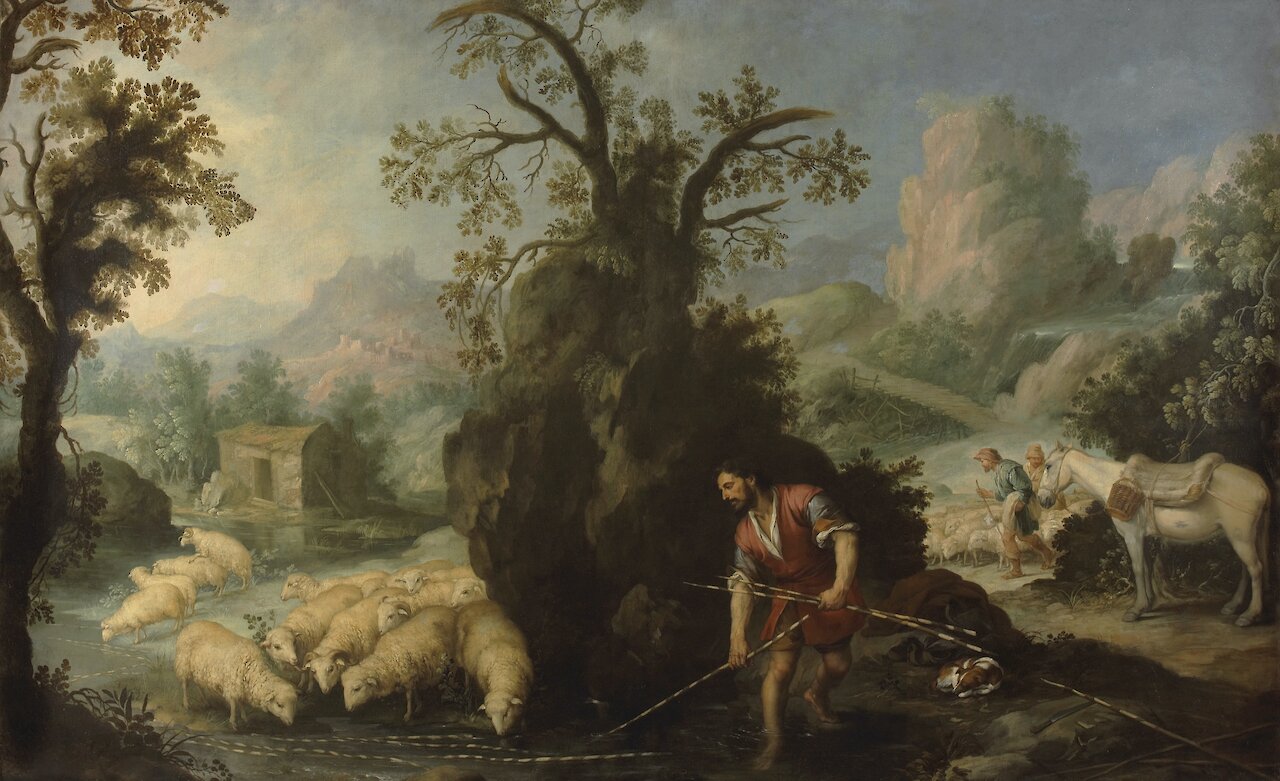
Jacob Laying Peeled Rods before the Flocks of Laban
by Bartolomé Esteban Murillo, circa 1665
- Medium
- Oil on canvas
- Dimensions
- 87 3/4 x 142 in (222.9 x 360.7 cm)
- Credits
- Meadows Museum, SMU, Dallas. Algur H. Meadows Collection, MM.67.27. Photography by Kevin Todora.
- Location
- Meadows Museum
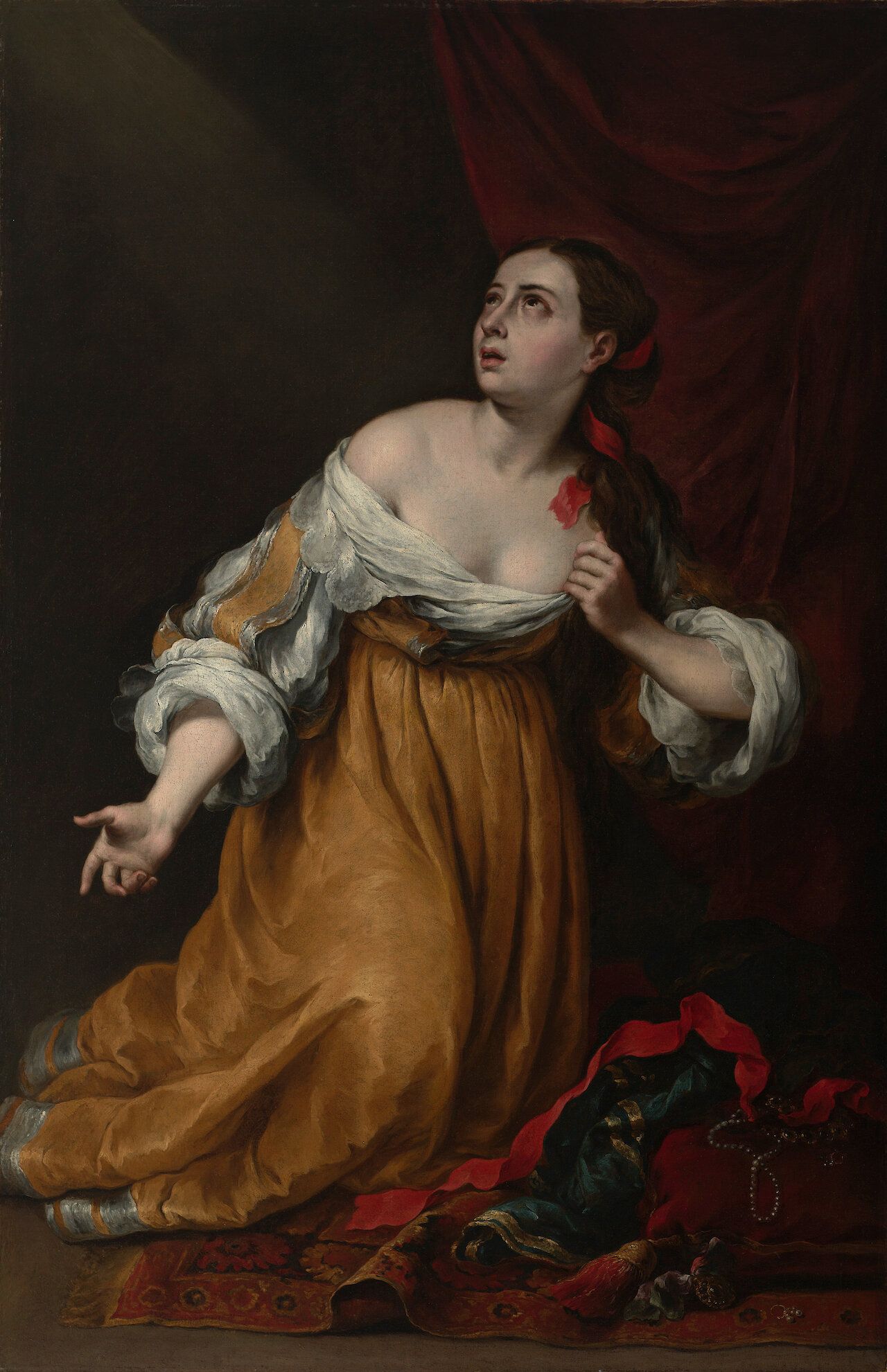
Saint Mary Magdalene Renouncing the Wordly Life
by Bartolomé Esteban Murillo, circa 1650
- Medium
- Oil on canvas
- Dimensions
- Unframed: 65 1/4 x 45 3/4 in (165.74 x 116.21 cm); framed: 79 x 55 in (200.66 x 139.7 cm)
- Credits
- © Virginia Museum of Fine Arts. Photo by Travis Fullerton
- Location
- Virginia Museum of Fine Arts
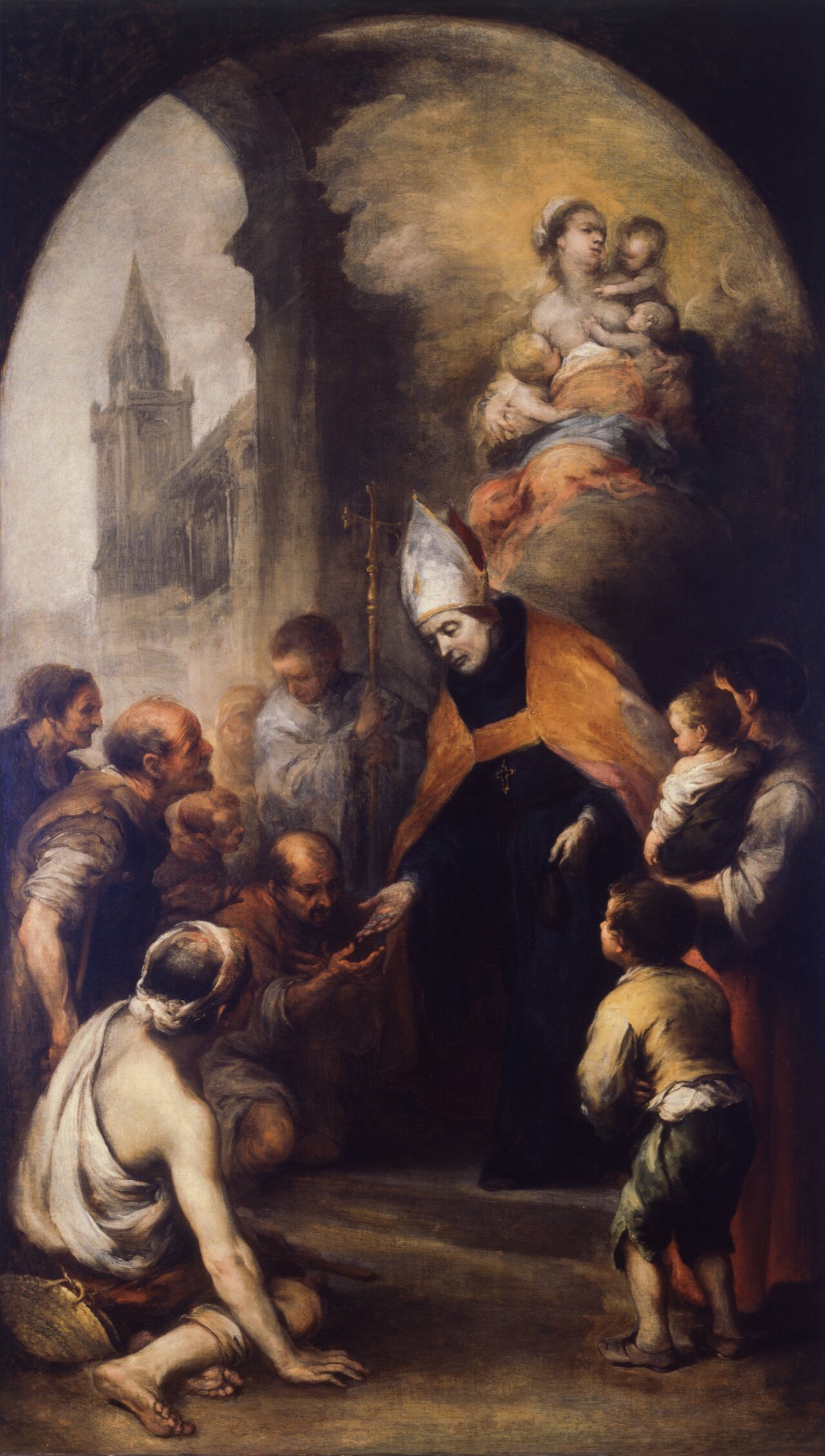
Saint Thomas of Villanueva Giving Alms to the Poor
by Bartolomé Esteban Murillo, 1665–1670
- Medium
- Oil on canvas
- Dimensions
- 52-1/8 x 30 in (132.4 x 76.2 cm)
- Credits
- The Norton Simon Foundation
- Location
- Norton Simon Museum
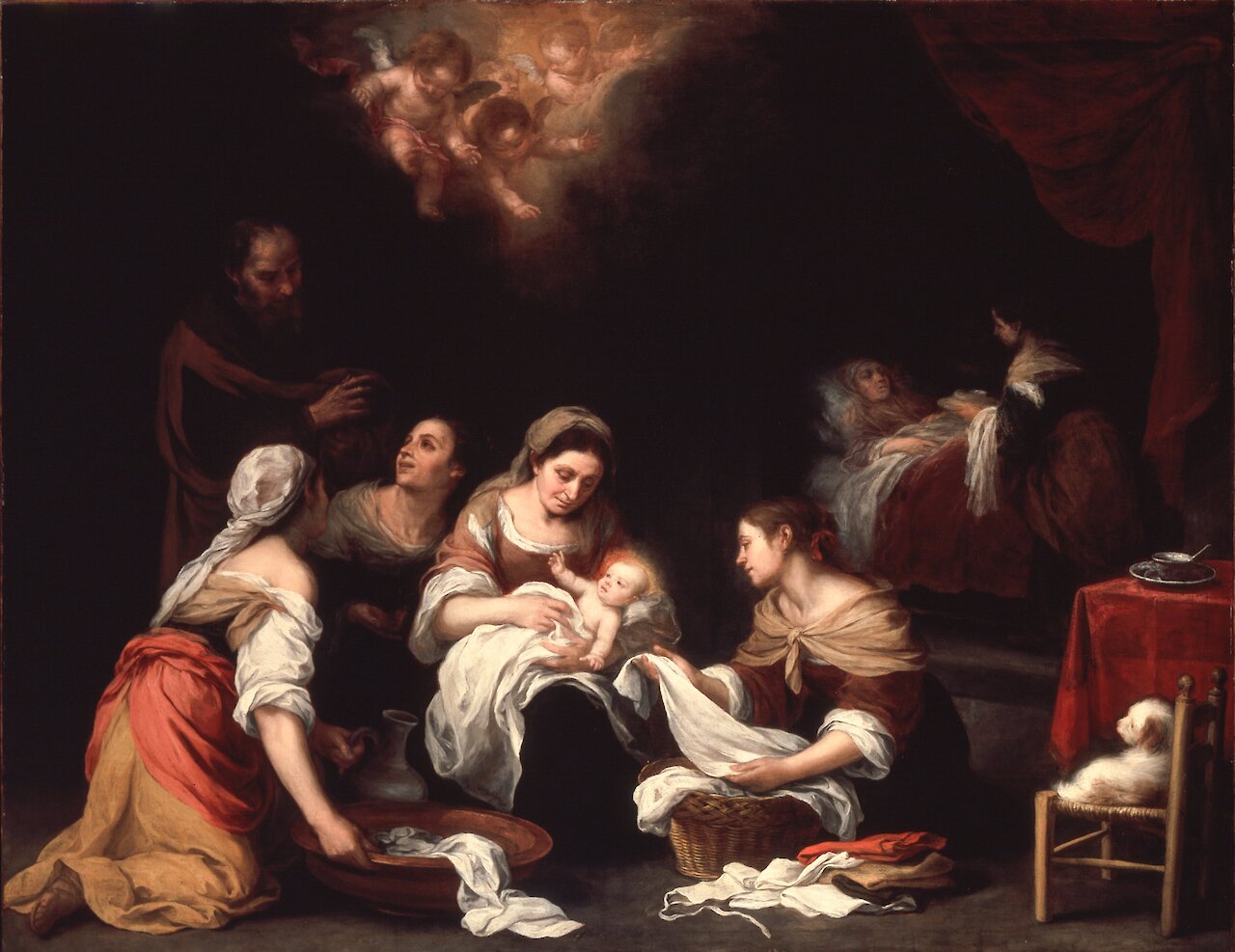
The Birth of St. John the Baptist
by Bartolomé Esteban Murillo, circa 1655
- Medium
- Oil on canvas
- Dimensions
- 57-3/4 x 74-1/8 in (146.7 x 188.3 cm)
- Credits
- The Norton Simon Foundation
- Location
- Norton Simon Museum
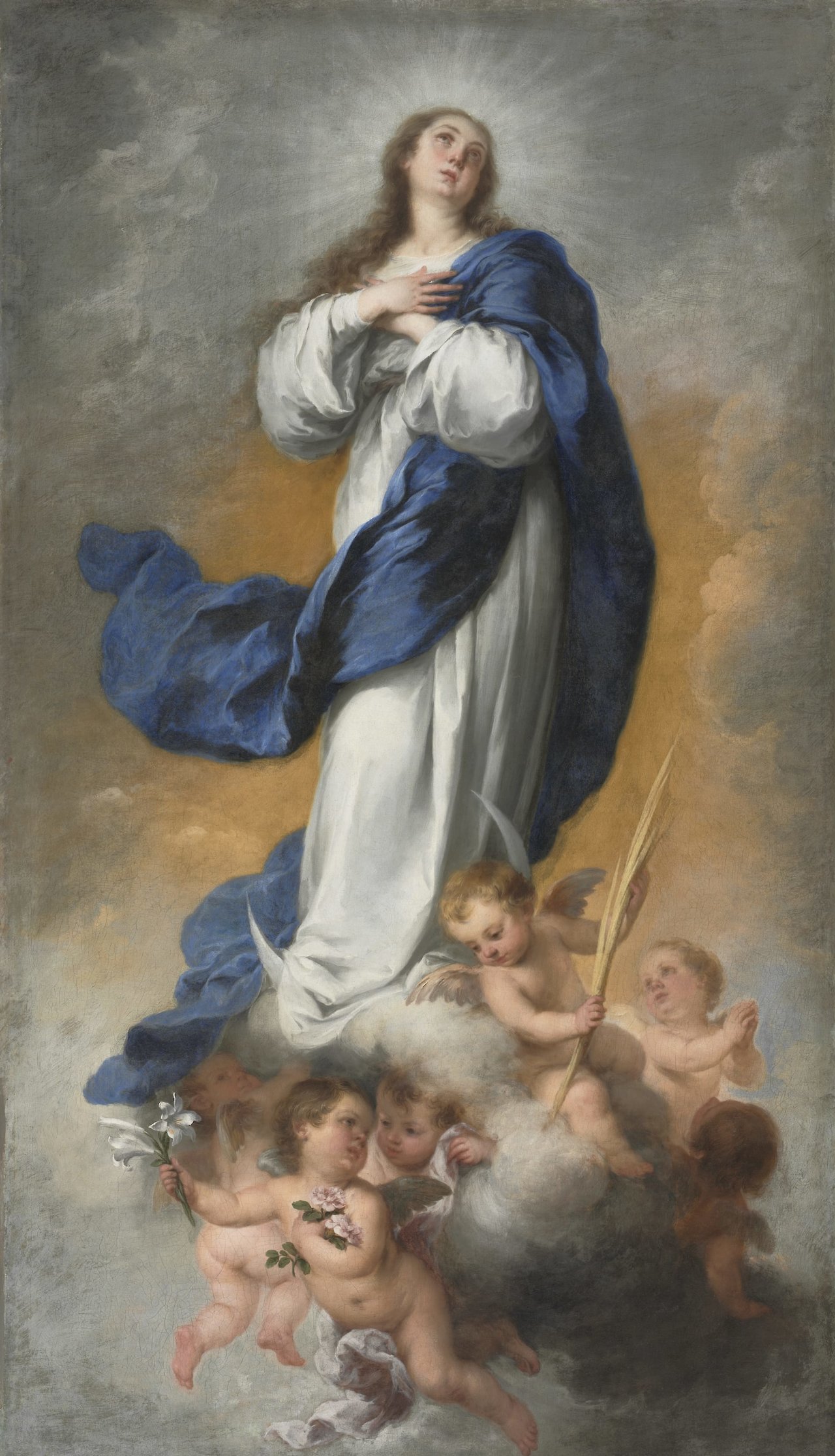
The Immaculate Conception
by Bartolomé Esteban Murillo, 1680
- Medium
- Oil on canvas
- Dimensions
- Framed: 246.3 x 152.7 x 8 cm (96 15/16 x 60 1/8 x 3 1/8 in.); Unframed: 220.5 x 127.5 cm (86 13/16 x 50 3/16 in.)
- Location
- Cleveland Museum of Art
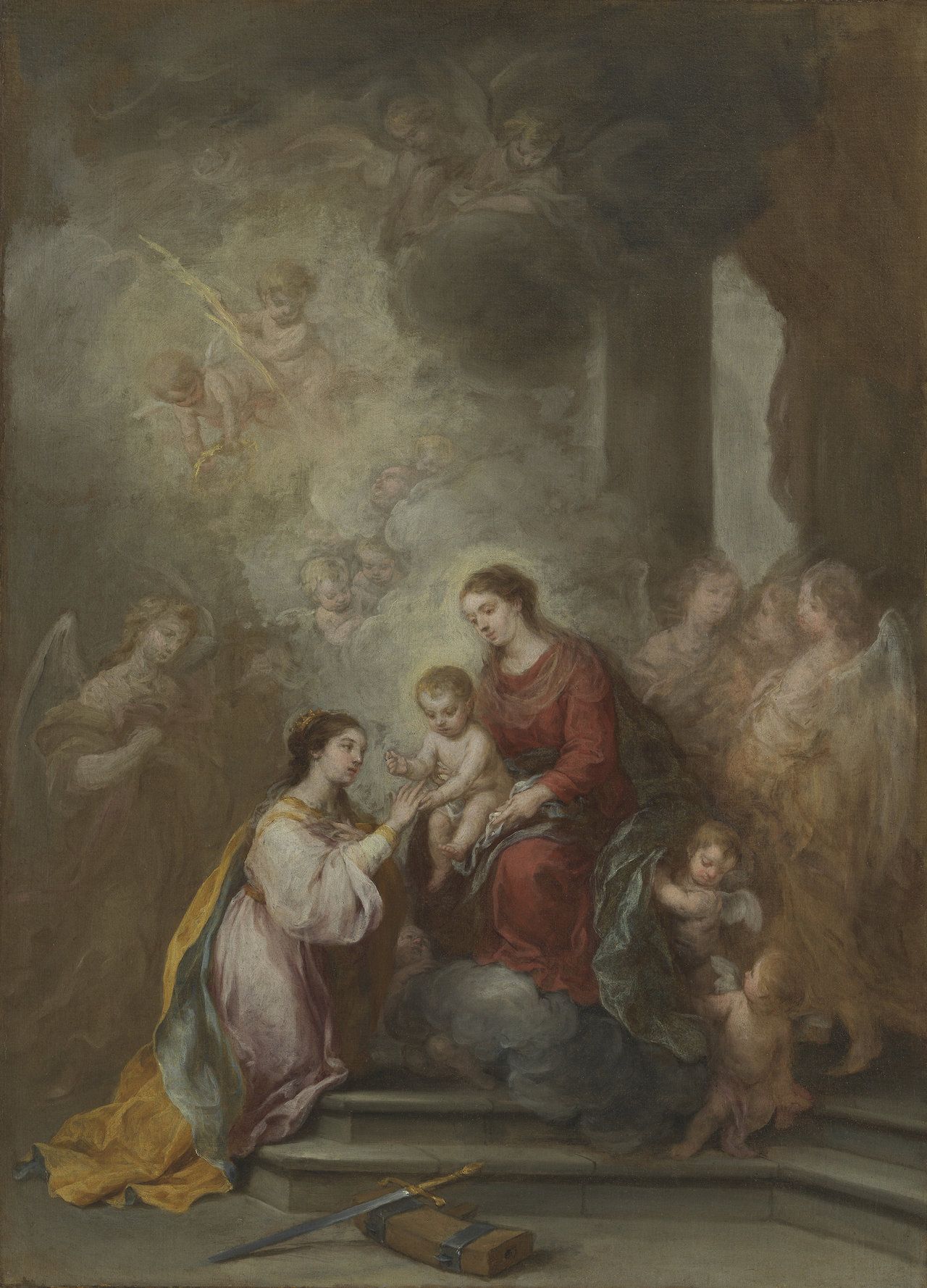
The Mystic Marriage of Saint Catherine
by Bartolomé Esteban Murillo, circa 1680–1682
- Medium
- Oil on canvas
- Dimensions
- 28 × 20 1/2 in (71.12 × 52.07 cm)
- Location
- LACMA
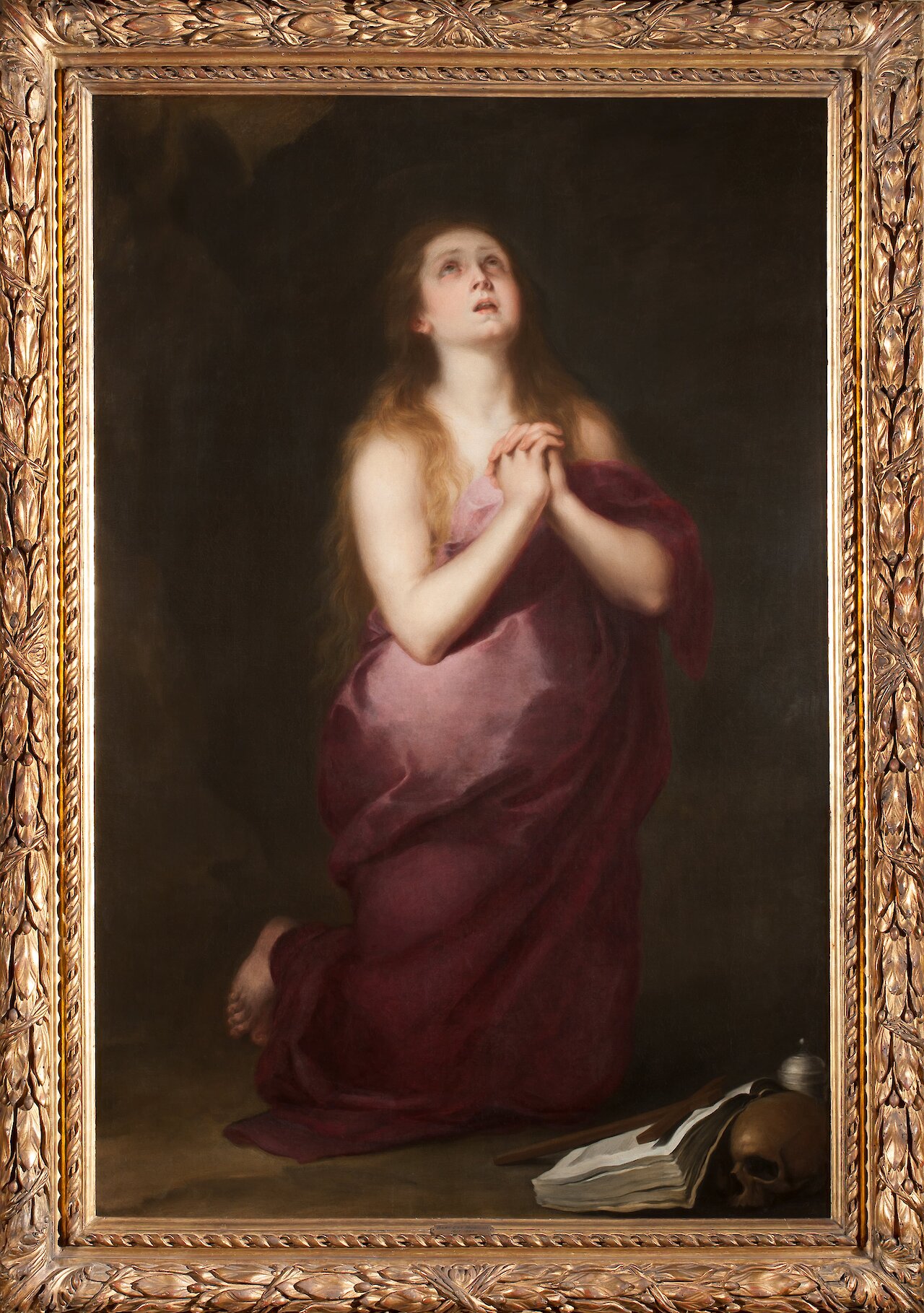
The Penitent Magdalene
by Bartolomé Esteban Murillo, circa 1660–1665
- Medium
- Oil
- Dimensions
- 63 1/4 in x 41 1/2 in (160.66 cm x 105.41 cm)
- Location
- San Diego Museum of Art
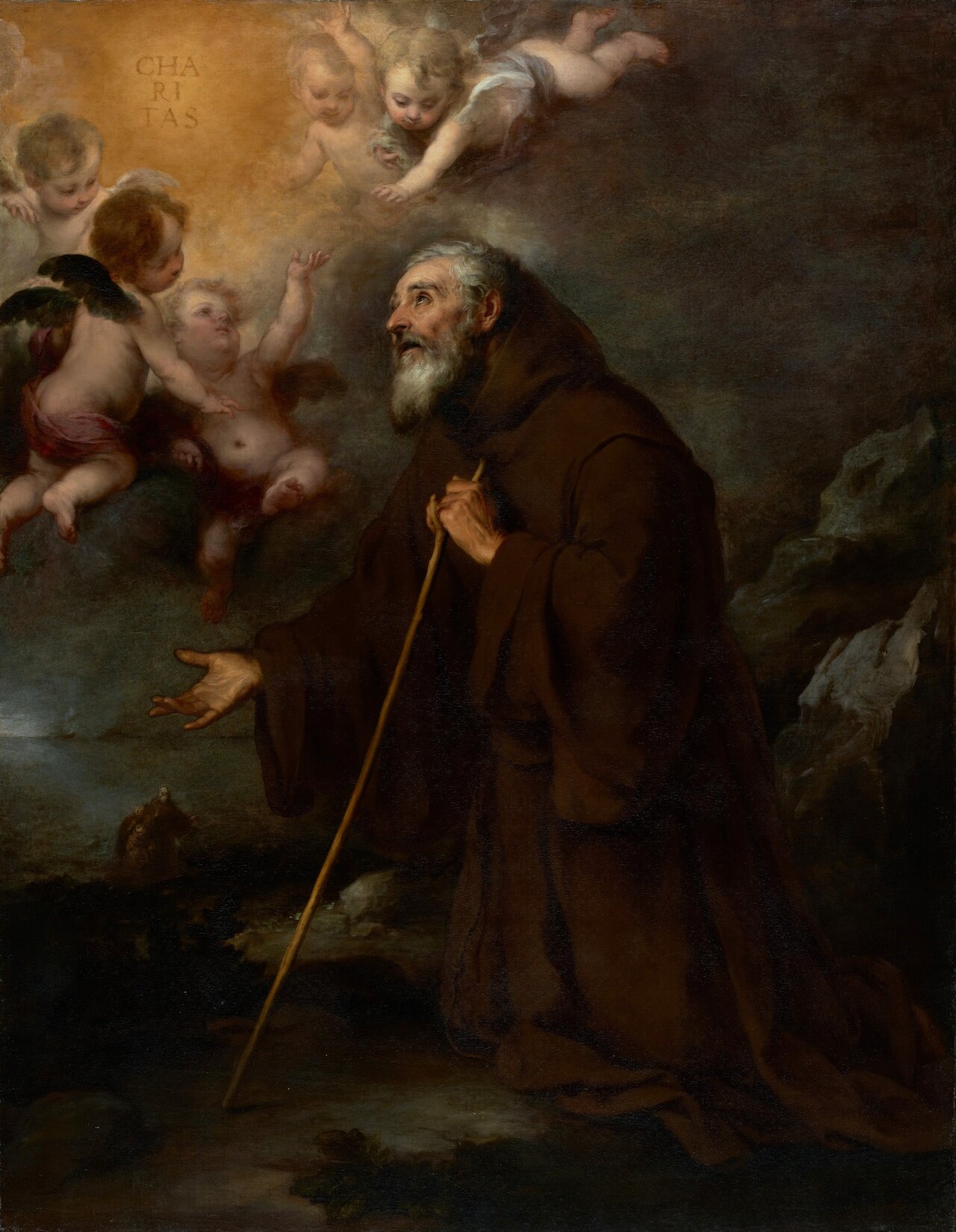
The Vision of Saint Francis of Paola
by Bartolomé Esteban Murillo, circa 1670
- Medium
- Oil on canvas
- Dimensions
- Unframed: 188 × 146 cm (74 × 57 1/2 in); framed: 220.3 × 177.8 × 15.9 cm (86 3/4 × 70 × 6 1/4 in)
- Notes
This painting depicts the heavenly vision of Saint Francis of Paola (1416–1507), founder of the Order of Minims, a religious order committed to perpetual abstinence and acts of humility. The saint experiences a vision in which the word “Charitas” (meaning Charity) appears in an aureole of golden light, accompanied by cherubs. The word became the motto of the Minims, and appears on the order’s heraldic crest.
In the background, the saint appears again standing on a shore with two kneeling companions. This scene in the distance refers to a miracle in which Francis calmed a stormy sea and ferried the men across the Straits of Messina on his cloak after they had been refused passage on a ship.
The subject of the painting should not be considered simply in terms of its visionary and narrative elements, but as a representation of faith itself as embodied by Saint Francis of Paola. Elderly and bearded, he is humbly dressed and appears to bear the weight of his calling on his slender walking staff. He gazes at the message borne aloft by the heavenly host with a look of reverent awe and dutiful acceptance. The simplicity of setting, sober tonality, loose brushwork, and harmony of both material and divine presence, are all consistent with Murillo's late style and help to convey a scene of passionate spiritual appeal.
- Location
- J. Paul Getty Museum
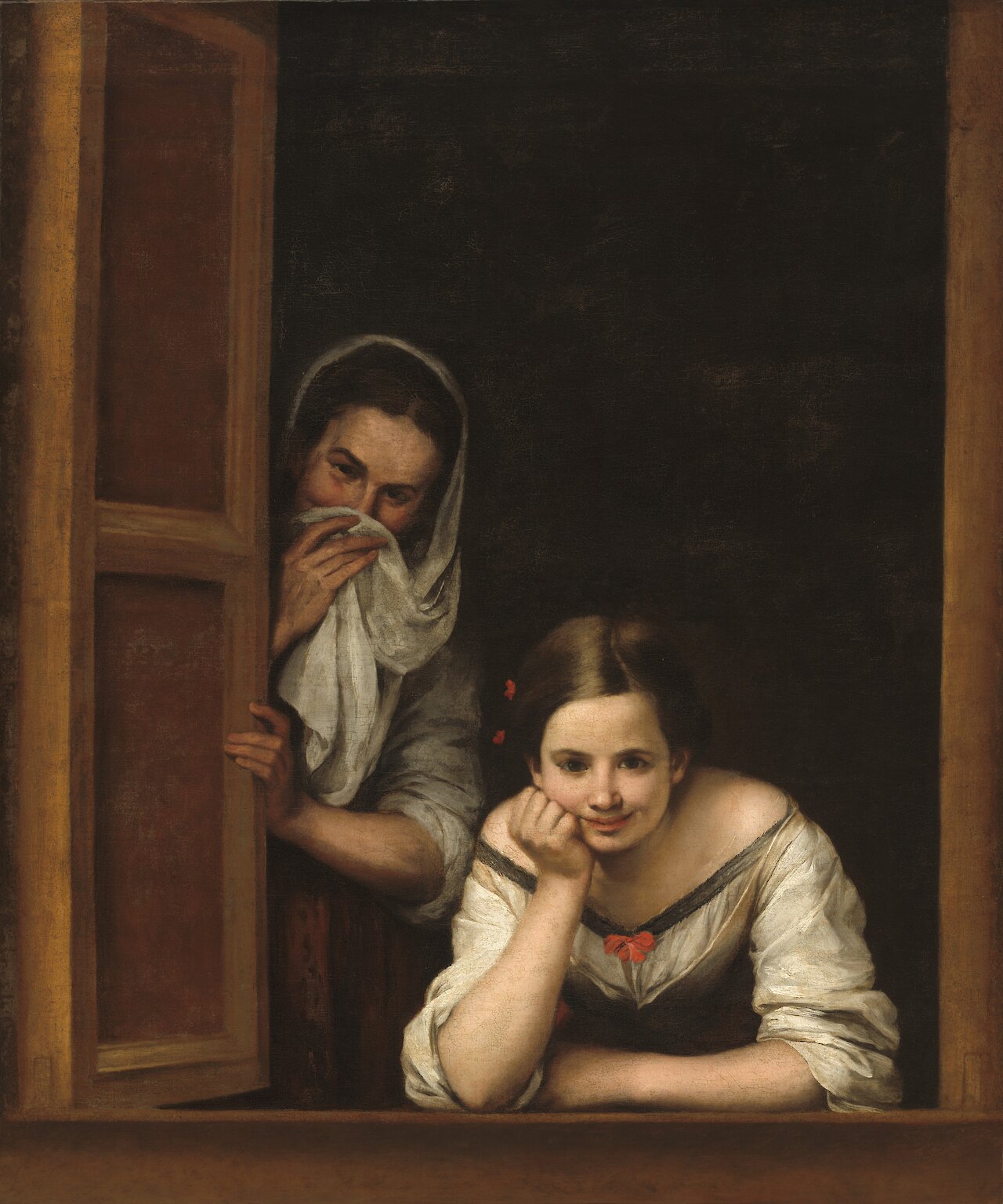
Two Women at a Window
by Bartolomé Esteban Murillo, circa 1655–1660
- Medium
- Oil on canvas
- Dimensions
- 125.1 x 104.5 cm (49 1/4 x 41 1/8 in)
- Credits
- Widener Collection.
- Location
- National Gallery of Art
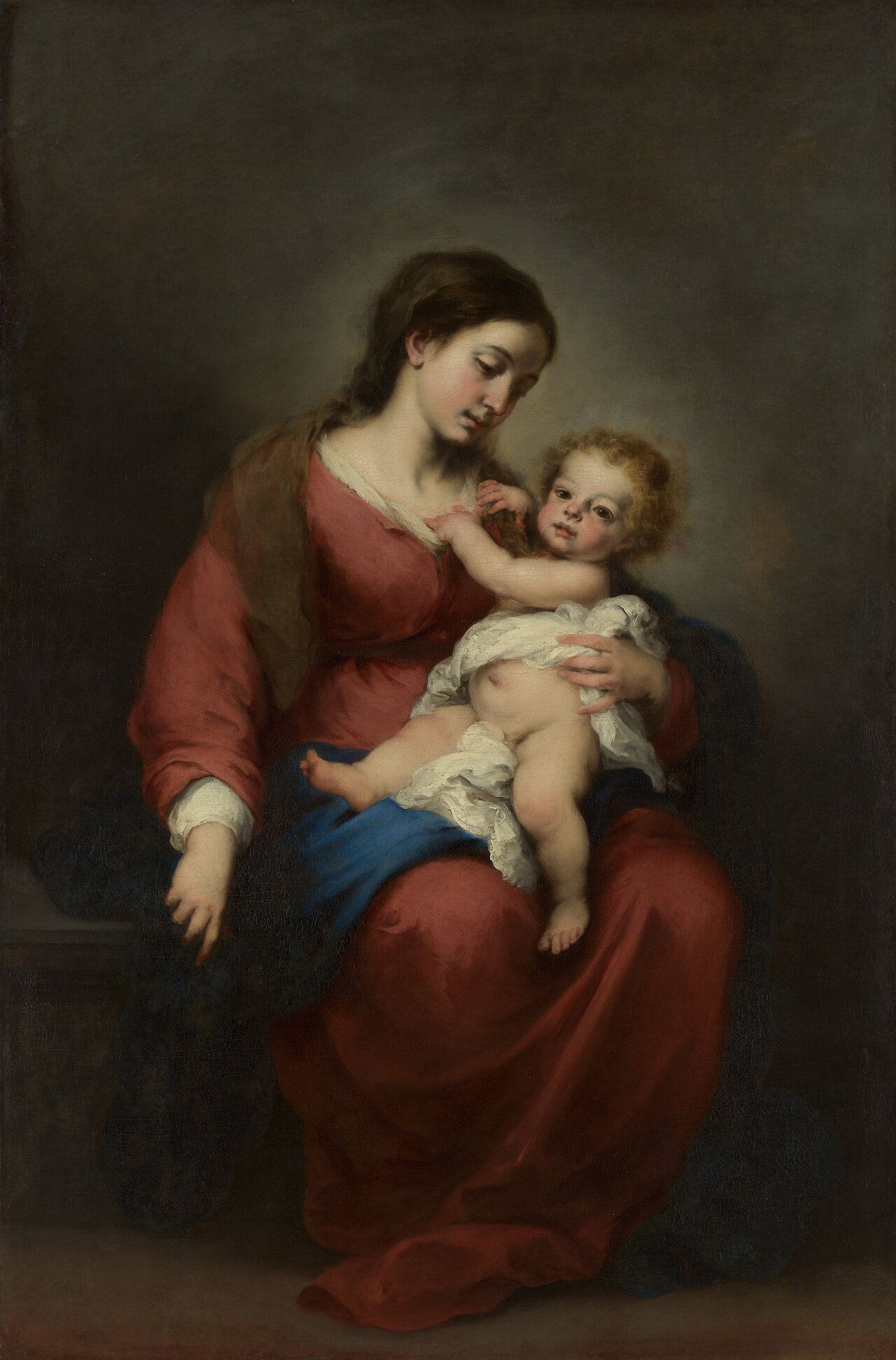
Virgin and Child
by Bartolomé Esteban Murillo, circa 1670
- Medium
- Oil on canvas
- Dimensions
- 65 1/4 x 43 in (165.7 x 109.2 cm)
- Credits
- Rogers Fund, 1943.
- Notes
1670s
- Location
- The Metropolitan Museum of Art (The Met)
Orrente, Pedro
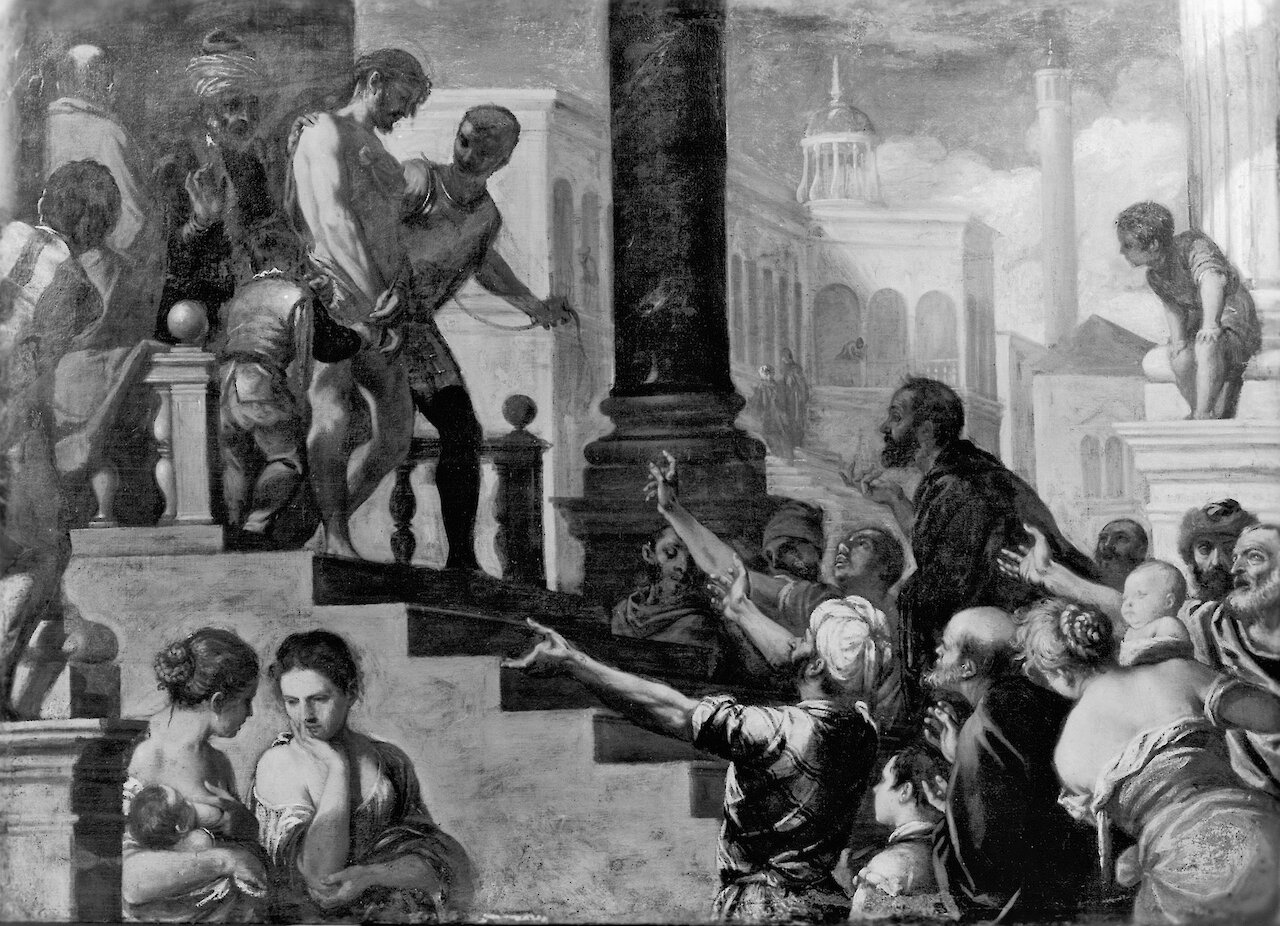
Ecce Homo
by Pedro Orrente, circa 1610
- Medium
- Oil on canvas
- Dimensions
- 36 x 50 5/8 in (91.5 x 128.6 cm)
- Credits
- Acquired by Henry Walters, 1909
- Location
- Walters Art Museum
Pantoja de la Cruz, Juan
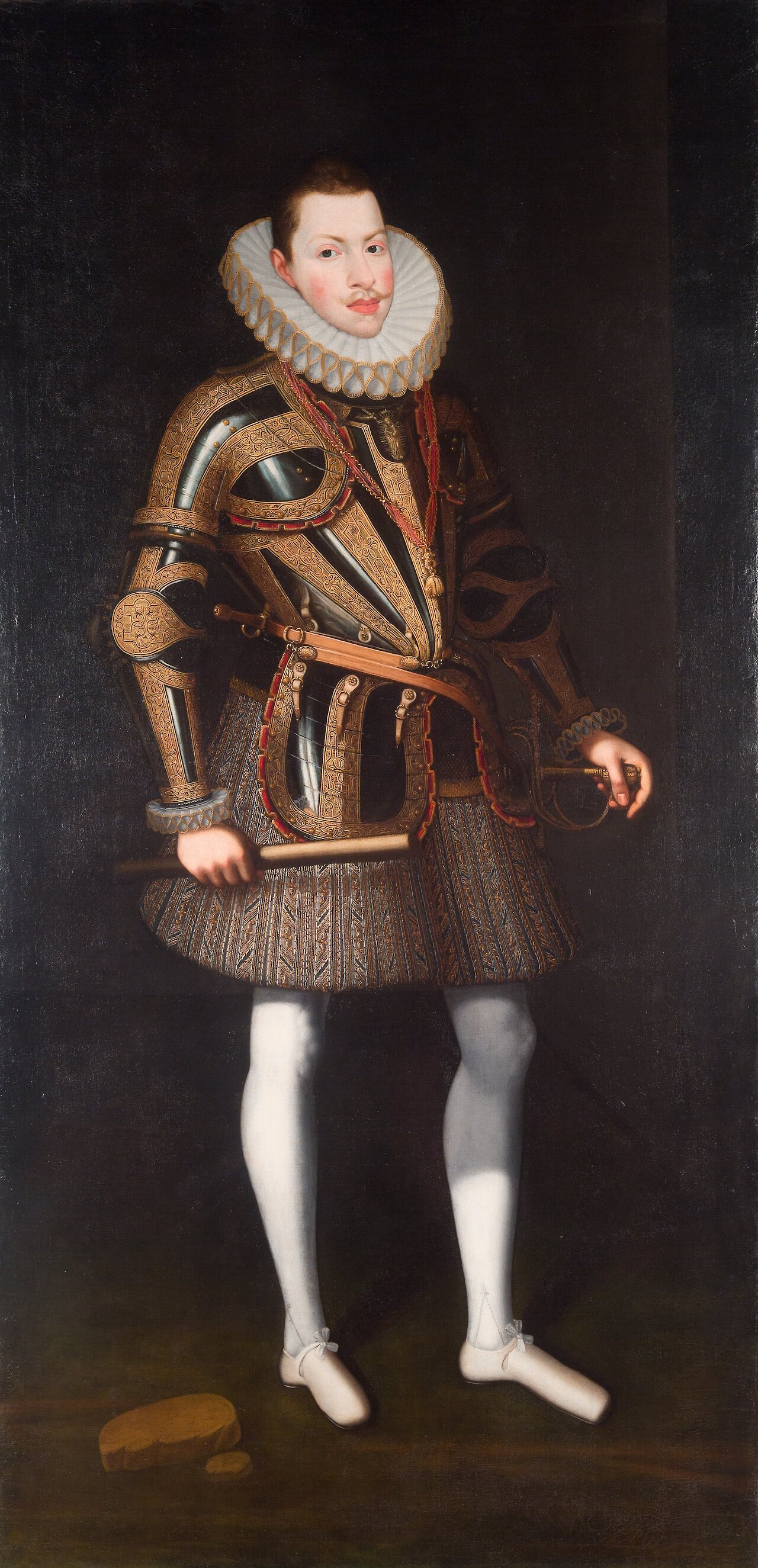
Philip III of Spain
by Juan Pantoja de la Cruz, circa 1605
- Medium
- Oil on canvas
- Dimensions
- 203.84 x 99.7 cm (80 1/4 x 39 1/4 in)
- Credits
- Harvard Art Museums/Fogg Museum, Gift of Dr. Denman W. Ross
- Location
- Harvard Art Museums
Pareja, Juan de
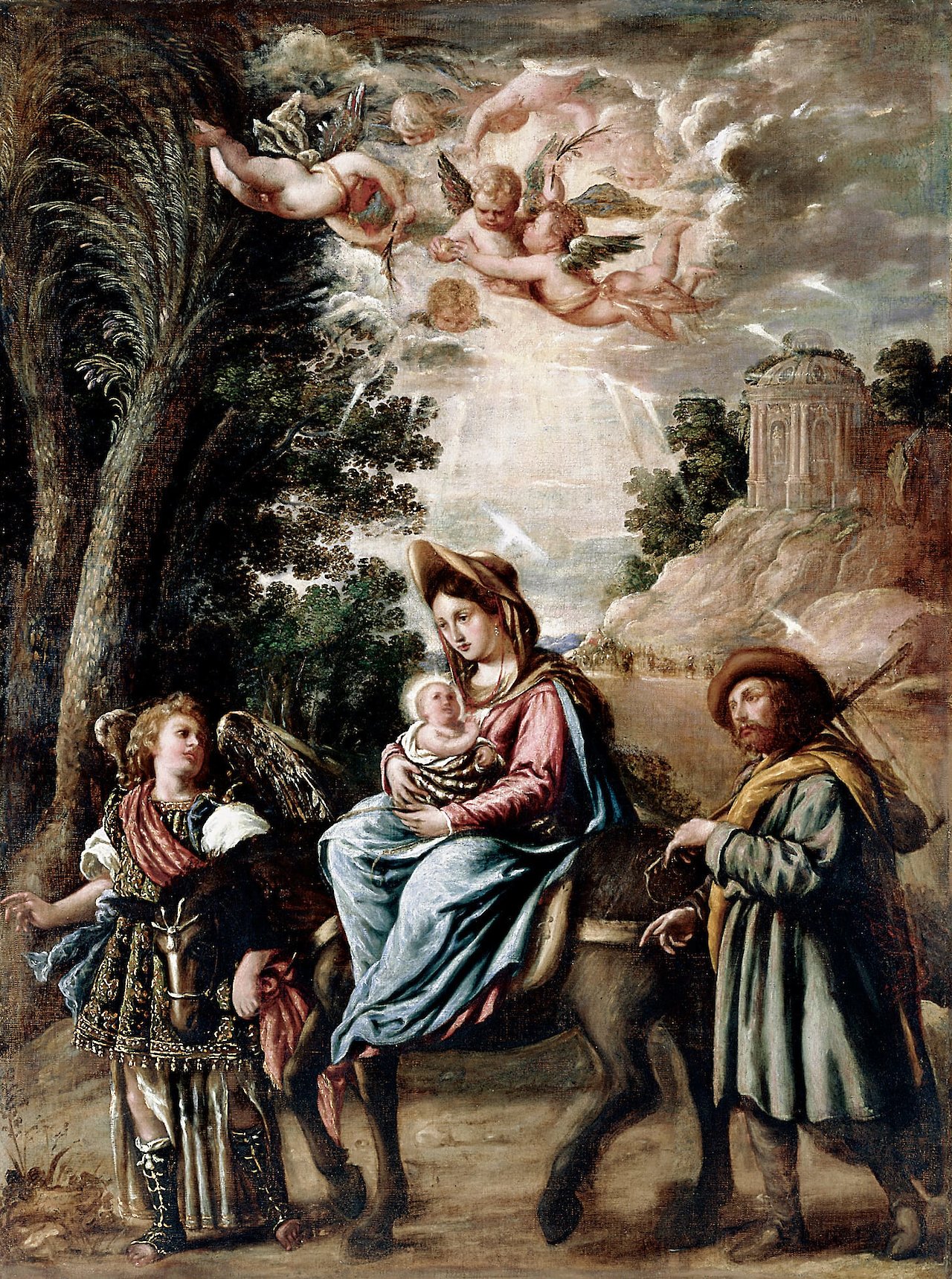
Flight into Egypt
by Juan de Pareja, 1658
- Medium
- Oil on canvas
- Location
- John and Mable Ringling Museum of Art
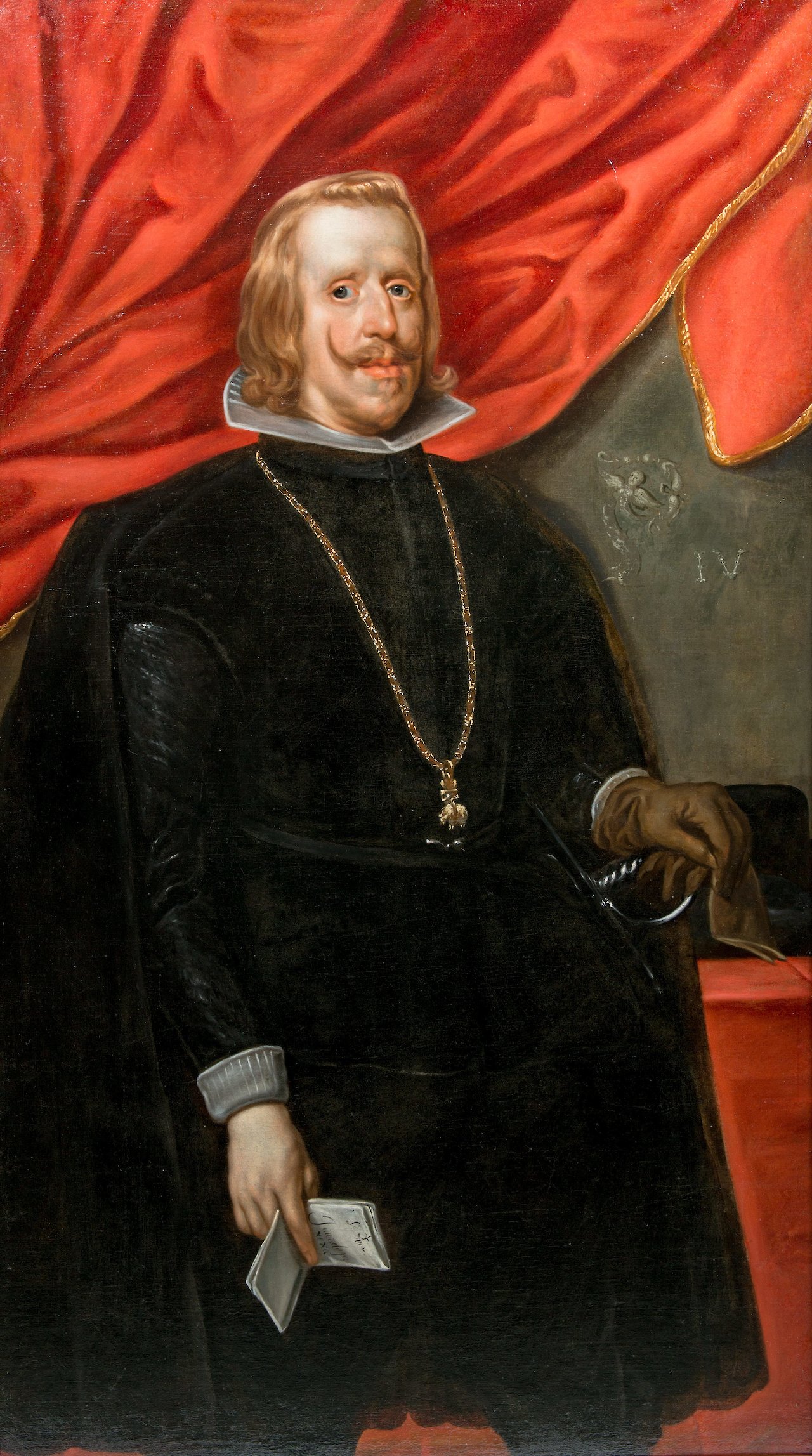
Philip IV, King of Spain
by Juan de Pareja, 1656
- Medium
- Oil on canvas
- Dimensions
- Framed: 63" x 38.75"
- Location
- Columbia Museum of Art